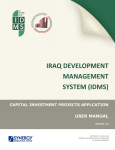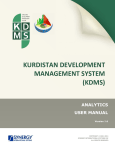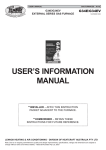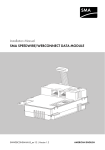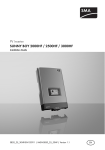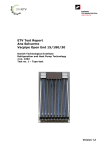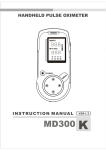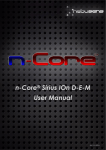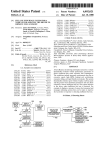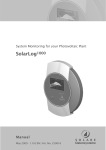Download Tender - Egyptian Association for Energy and
Transcript
Egyptian Association for Energy and Environment (EAEE) EgyptianAssociationforEnergyandEnvironment(EAEE) CALLFORTENDER Design,Supply,Delivery,Installation andCommissioningof79.2kWpGrid– ConnectedSolarPhotovoltaicSystems inMatrouhGovernorate ClosingDate: 17-02-2015 Address:Engineeringtowerno.3,28th floor,CornishElMaadi, Cairo,Egypt Telephone:+(202)25266038 e-mail:[email protected] Egyptian Association for Energy and Environment (EAEE) Contents 1Purpose............................................................................................................................................................ 3 2.ProjectTitle…..…………………….................................................................................................................... 3 3GeneralTermsandConditions..................................................................................................................... 4 3.1Termofreference........................................................................................................................................ 4 3.2Tendertimeplan......................................................................................................................................... 5 3.3TenderBond................................................................................................................................................. 6 3.3.1Bidbond.................................................................................................................................................... 6 3.3.2Performanceguaranteebond.............................................................................................................. 6 3.3.3MaintenanceandOperationalguaranteebond............................................................................... 7 3.4DocumentsComprisingtheBid………………………………………………………………..…………….……… 7 3.5BidOpening………………………………………………………………………………………………………….…….… 7 4Offerformat..................................................................................................................................................... 10 4.1Technicaloffer............................................................................................................................................. 10 4.2Financialoffer.............................................................................................................................................. 11 5.EvaluationCriteria...................................................................................................................................... 12 5.1EvaluationStep1:Quali icationsandgeneralrequirements: ....................................................... 12 5.2EvaluationStep2:Technicalevaluation(outof70marks):........................................................... 12 5.3Evaluationstep3:Financialevaluation(outof30marks):............................................................. 13 6MethodofPayment(TermofPayment)................................................................................................. 14 7Systemoperationperformancetesting................................................................................................... 14 8Penalties.......................................................................................................................................................... 15 9Annexes........................................................................................................................................................... 15 ListofTables Table1:Tendertimeplan............................................................................................................................. 5 Table2:Technicalevaluationcriteria...................................................................................................... 13 Table3:Financialevaluationcriteria...................................................................................................... 14 Egyptian Association for Energy and Environment (EAEE) Design,Supply,Delivery,Installation andCommissioningof79.2kWpGrid– ConnectedSolarPhotovoltaicSystems CallForTenders 1. Introduction The Egyptian Association for Energy and Environment (EAEE) isimplementing a projectfundedbytheEuropeanUnion-ENPICBCMED-crossbordercooperationat theMediterranean,titled "Developing andImplementingDecentralizedInnovative Solar Energy Technologies in Public Building (DIDSOLIT-PB) " where as the projectaimsto: Transferup-to-date- solarenergyusestechnologies Transform the governorate's public buildings into energy saving buildings through the installation of developed solar systems that generate energy of totalcapacityof79.2kWp tobeusedinlightingandair-conditioning Providetechnicalsupportandcreatenewexpertiseinthefieldofsolarenergy technology. ThegrowingconcernfortheuseofrenewableenergiesandthereductionofCO2 emissions of the society has led the Public Administrations to promote Projects regardingalternativeenergysources. Photovoltaic solar energy presents itself as a clean and environmentally friendly alternative.Inaddition,ithastheadvantage,duetoitsmorphology,ofbeingeasily integrated in urban environments, where most of the demand and energetic consumptionisconcentrated. 2. Purpose This tender aims at Design, Supply, Delivery, Installation Commissioning and Maintenance of79.2kWpGrid- connectedsolarPhotovoltaictobeinstalledon Egyptian Association for Energy and Environment (EAEE) the roof spaces available on the selected four buildings. The proposed systems shall comply with the relevant laws and regulations issued by the Ministry of ElectricityandRenewableEnergy,EgyptianElectricRegulatoryAgency(EERA), andinlinewiththerequirementsoftheBehiraElectricityDistribution Company (BEDC). TheproposedOn-gridsolarPVsystemshallgenerateelectricalpowerdirectlyto LowVoltage(LV)distributiongirdsupplyduringdaytimesharingtheloadwith systemmaximumoutletatanytime.Intheeventwhereenergygeneratedbythe solar system is larger than the operation load, for example in weekend and vacation,thesystemmusthavetheabilitytoautomaticallyfeednationalgrid. 3. GeneralTermsandConditions 3.1Termsofreference 3.1.1Allproposeddocumentsareconsideredconfidentialandcanonlybeshared withtheEAEEanditsthirdpartyconsultantteam. 3.1.2TheBiddershall submit two originalhardand softcopies(CD's)with two separate envelopes ( one envelope for the technical offer and the other for the financial offer) sealed and stamped; any bidder who mixes the technical and financialofferswillbedirectlydisqualified. 3.1.3 The envelope with the financial offer will only be opened for the Bidders whopassthetechnicalevaluation,thefinancialofferofthedisqualified technical oneswillbereturnedbacktotheBiddersealedandstamped. 3.1.4 TheBiddermustfilltheTechnicalDataSheetsofPVmodulesandinverter asdescribedintheExecutiveProjectandsubmititinthetechnicaloffer,knowing that not completing and submitting the technical data sheets will directly disqualifytheoffer. [Annex1:ExecutiveTechnicalProject]. Egyptian Association for Energy and Environment (EAEE) 3.1.5Bidsshallbevalidforaperiodof120daysafterBidopeningdateandshall be delivered by hand to EAEE headquarter: Engineers tower no.3, 28th loor, Cornish El Maadi, in front of ( )ﺷ ﺮطﺔ اﻟﻤﺴ ﻄﺤﺎت اﻟﻤﺎﺋﯿ ﺔ, Cairo, on or before 12:00 noon localtimeofThursday17th ofFebruary2015. 3.1.6AllPricesshallbeclearandinEgyptianpounds (LE)currency,excludingany customsfeesandSalestaxesastheprojectisexemptedfrombothofthem. 3.1.7. Electrical engineering and design shall be complied with Industry Standards, the National Electric Code, IEEE 1547-2003 “IEEE Standard for Interconnecting Distributed Resources with Electric Power Systems.” and other applicablecodesandstandards. 3.1.8 It is the Bidder’s responsibility and on his own expenses to visit and understand the site conditions, environment and all requirements that are related to the tender or that may affect the offer price. The bidder will be fully responsibleforverifyinganyinformation,drawingsandmeasurementsthatmay beavailabletohim.AsitevisitmustbeperformedbyallBidders. 3.1.9 All questions regarding the tender by the bidder will be submitted by emails and are to be sent to ([email protected]) and once answered, will be circulatedamongallcontractorswhohavesubmittedtheirproposals. 3.1.10Thedeadlineofthequestionsandtheanswersisshownintable(1)below. Noquestionwillbeconsideredafterthementioneddate. 3.1.11TheTenderwillbeawardedasonelotforthemostsuitabletechnicaland inancialofferbasedontheevaluationcriteriaexplainedinsection(14). Egyptian Association for Energy and Environment (EAEE) 3.1.12 All Permits required to execute the Work are the responsibility of the Contractor.Thecontractorshallidentify knownPermitrequirements.Thecost of preparing,filingandobtainingthePermitsshallbeincludedintheoffered Price. The Contractor shall provide EAEE copies of all approved Permits and applicationsforPermitsstillinprocessontheeffectivedateofthecontract. 3.1.13 The Bidder shall provide an evidence that the photovoltaic modules manufacturerhasbeen operatinginthebusinessofSolarpanelsmarket forthe pastten(10)years. 3.1.14TheContractorshallprovideafreemaintenanceperiodfortwoyearsfrom the date of the installed system final acceptance, and could be extended for another3 yearsbasedonthecontractorperformance.The3 yearsmaintenance offershallbeincludedinthefinancialofferasanoptionalitemwiththevalidityof oneyear. 3.1.15 A bi- monthly inspection report of the system performance and checkup shall be provided during the two years free maintenance period relevant to (maintenanceandoperationalbondsection3.3.3) 3.1.16 A standard Contract of project Design, Delivery, Installation and Commissioning in accordance with Industry Standards will be signed between EAEE and the contractor witnessed by the third party consultant to be the referenceofallprojectphasesexecution. 3.1.17EAEEreservestherighttorejectanytechnicalofferwithoutclarifyingthe reasons. Egyptian Association for Energy and Environment (EAEE) 3.2Tendertimeplan Table1.Tendertimeplan Milestone Date Time ReleaseofTenderBook December 11 th,2014 9.00am Deadlineforquestions January1st,2015 2.00pm Releaseofanswerstoquestions January8rd,2015 5.00pm Deadlineforoffers February 17th ,2015 12.00pm 3.3TenderBond 3.3.1Bidbond Abidbondof70000LEshallbeenclosedinthetechnicalofferenvelope. The bid bond shall be presented by irrevocable and unconditioned LG and issuedbyalocalbank. The winning Bidder shall consider that this amount will be paid on first demand if it becomes evident that information given contained false statements. The validity of the bid bond is 180 days from date of offers submission with theabilitytobeautomaticallyrenewedunlessreleasedbyEAEE. The bid bond will be returned after signing the agreement, and the performancebondhasbeendulyenteredintoexecution. If the winning Bidder fails to provide a performance bond within 14 days of being requested by the EAEE to do so; the full amount of tender bond shall become payable and might be liquidated by EAEE as compensation for such failure. Egyptian Association for Energy and Environment (EAEE) 3.3.2Performanceguaranteebond Performanceguaranteebondof10%ofthecontractpriceshallbedelivered bytheawardedContractorwithin14daysofbeingnoti iedbyaregistered letterthathehasbeenawardedthecontractandinanycasepriortosigning thecontractagreementandtheawardingdecision. Performance guarantee bond shall be irrevocable and unconditioned LG, issued from a local bank and approved by the EAEE in respect of performance of the contract and will be released after the 2 years maintenancefreeperiod. The Performance Bond shall be in force until a clean final handing over certificateisissuedbyEAEEforthefoursites. Thebondshouldbepaidonfirstdemandwithoutanyobjection. Inordertoguaranteetheproposedenergyyieldandperformanceratio(PR) of the proposed system, the third party consultant will conduct a systemenergyyieldandperformanceratiocheckafterthefirstandsecond yearsofsystemoperationinordertoverifytheproposedvalues. Thebondguaranteesthetwoyearsoffreemaintenanceandwillbereleased aftersubmitting the final inspectionreportofthePVsystemand after the successfulachievementoftheproposedenergyyieldandperformanceratio valuesduringthebondperiod. Theallowedvariationoftheproposedenergyyieldvalueisnotmorethan5%andthePRisnotlessthantheproposedvalueforthe irsttwoyearsof operation. ThecontractorshallrepairormodifytheinstalledPVsystemuponfailureof achievingtheproposedvalueswithinthebondperiod. In caseof not repairing thefailure, therepairshall be done by others and thecontractorshallbearall theexpenses. Egyptian Association for Energy and Environment (EAEE) 3.4DocumentsComprisingtheBid The Bidder shall prepare two original sets and one copy comprising the Bid andsupplementaryinformation.Thebidconsistsoftwoenvelopes: EnvelopeA(TechnicalOffer) Thetechnicaloffershallinclude: StampedTenderDocumentincludingfilledouttablesanddatasheetsforPV modules, inverters, monitoring, control, scada remote monitoring, LED screens. Thetechnicalspecificationsofthemainsparepartssufficientforthreeyears operationaftertheguaranteeperiodwithavalueof2%oftheBOSworks. Originalcataloguesforallequipments . DetaileddrawingsasspecifiedinP2ofAnnex1. The proposed detailed training program for the personnel of Matrouh Governorate,school,hospitalandlibrary . The origin of the equipment should be clearly defined taking into account thatitmustbeEUorigin. Sitevisitdeclaration . Anyotherequipmentsandmaterialsrequiredtobecompletedandsubmitted bybidder,all asspecifiedintheExecutiveProject. Timescheduleoftheproject asspecifiedintheExecutiveProject . Only technical envelope will be opened in the presence of the bidders or theirrepresentativesonFebruary17th,2015atEAEEheadquarterinMaadi. Egyptian Association for Energy and Environment (EAEE) EnvelopeB(financialoffer) Thefinancialoffershallinclude: - Lot (1): The total price and an itemized price list for the foreign deliveries (pricesshallbequotedCIP tosite)excludingcustomduties,andsalestaxeson importedequipment(LE). - Lot(2):Thetotalpriceandanitemizedpricelistforsparepartssuf icientfor3 years(LE) - Lot(2):ThetotalpriceforinstallationandCommissioningofequipment(L.E) - Lot(2):Thetotalcostofmaintenancefor3yearsafterthefreemaintenance - Lot(2):Thetotalaswellasman/weekcostfortrainingofMatrouhGovernorate personnel(LE) All above items are grouped and included in the Bill of Quantities tables (Measurments , Lot 1&2) . Infrastructures (Lot1) and Services (Lot2) should be invoiced separately in order we can justify our budget lines. The Bidder who merges the offers of Lot (1) and Lot(2) together in one offer will be directly disqualified.Financialenvelopeshallbeopenedforthetechnicallyacceptedbidsat adatetobefixedlater. 3.5 BidOpening EAEEwillopenthebidsintwostages: FirstStage Thetechnicalenvelopeshouldbeaccompaniedbythebidsecurity(Lot1andLot2) foranamountof70000L.E.Itwillbeopenedatthebidclosingdate. SecondStage Envelope(B)containingthefinancialofferwillbesafeguardedbytheEAEEuntil completion oftheevaluationofthetechnicaloffer. EAEEwillinformthebidderswhosetechnicalbidshavebeenacceptedofthedate ofopeningofEnvelopeB.ThefinancialEnvelopeB,willbeopenedinthepresence ofthebidder'srepresentativeswhochoosetoattendatthetimeandintheplace specified by EAEE. The bidders'names, the Bid prices, will be announced at the sessionofopeningthefinancialenvelopes. Egyptian Association for Energy and Environment (EAEE) NotificationofAwardandSigningofContract The bidder whose bid has been accepted will be notified of the award by EAEE prior to expiration of the bid validity period by email confirmed by registered letter. The"LetterofAward"willstatethesumthatEAEEwillpaytotheContractorin consideration of execution, completion, and maintenance of the works, supply of equipment&servicesbytheContractorasprescribedbytheContract. AdvancedPayment EAEE will provide an Advanced Payment on the Contract Price according to the termsofpayment,tobepaidagainstanirrevocablebanklettersofguarenteetothe same value and currency in favour of EAEE presented within two weeks from signingtheContract. Egyptian Association for Energy and Environment (EAEE) 4.Offerformat 4.1Technicaloffer The response to this TOR must be in the English language, structured (and presentedinthesamesequence)asfollows: Coverletter The cover letter must be signed by person(s) authorized to submit the proposal andmustdelineatethecompany’sabilitytofulfilltheproject. Chapter1:CompanyPro ile The company profile must include registration certificates, J.V if applicable, referencesprojectsandC.Vsoftheemployees. Chapter2:Termsofreference The bidder shall include the TOR of his company in general, man power of the companyandthecompatibilitywithDIDSOLITPVprojecttermsofreference. Chapter3:Technicaldescription This includes the Solar radiation on the site, site and installation criteria, boundaries, shade analysis, structural, civil and electrical assessment, and any relevantinformation. Chapter4:Componentandequipmentselection Thischaptershallincludeallselectedmaterialsandcomponentsandtakinginto considerationtoattachthedatasheetsintheAnnexsection. Chapter5:TechnicalDesigndescription The Bidder shall include but not limited to the software design and results, AutoCAD drawings, 3D drawings and system layout, as well as the mounting systemcalculationsasshowninAnnex1 . Egyptian Association for Energy and Environment (EAEE) Chapter 6:ApproachandMethodology(Scopeofwork) The Bidder shall explain the proposed PV system work plan, including the procurement,installation,commissioning,testingandO&MofthePVsystem. Chapter7:Timeplan TheBiddershallproposeatimeplanoftheprojectimplementationphases. Chapter8:Trainingplan TheBiddershallproposeatrainingplan. Chapter9:Testingandcommissioningplan TheBiddershallproposea commissioningandtestingplan. Chapter10:Safetyplan Chapter11:Sparepartlist Annexes tobeattachedbytheBidder: TheBiddershallattachthefollowingitemsintheannex Annex:TechnicalComplianceSheets Annex:Tenderoffer Annex:Bidbond Annex:WarranteeandGuaranteeoftheequipment Annex:EnvironmentalBenefits Annex:others Egyptian Association for Energy and Environment (EAEE) 4.2Financialoffer Chapter1:TermsofPayment TheBiddershallproposethetermsofpaymentasanEPCoffer,excludedCustoms dutiesandVAT. Chapter2:PVsystemcostbreakdown The Bidder shall include a Bill of quantity for all materials and equipment proposedintheoffer(P3ofannex1). TheBiddershallsubmitthecostbreakdownoftheproposedPVsystempresented aboveas“Financialmeasurementssheet”clarifiedinAnnex1. Chapter3:Maintenance offer TheBiddershallprovideinthemainofferthecostofthefollowing: 1.Three yearsadditionalmaintenancecontract 2.Spareparts 5. EvaluationCriteria Theevaluationfortheofferswillgothroughthefollowingthreesteps: 5.1EvaluationStep1:Qualificationsandgeneralrequirements: CompliancewithTORdocumentswillbeevaluated.Thekeycriteria,whichwillbe usedtoevaluateresponsestotheTORinclude: •ExperienceindesigningsimilarSolarPhotovoltaicsystems,specificallyrooftop Projects; •Availableresourcestoundertaketheproject; •Teamqualification/projectmanagerandsiteengineerexperience. •Qualityofproposaldocumentationreceivedandperceivedunderstandingbythe firmofproject’srequirements; •Availabilityoflocalmanpowersupportforthesystems. Egyptian Association for Energy and Environment (EAEE) 5.2EvaluationStep2:Technicalevaluation(outof70marks): The offer must achieve a score of more than 80/100 to be considered as a technically qualifiedone,thequalifiedoffermarkwillbescaledto70%. Thefollowingcriteriawillbethebaseofthetechnicalevaluation: - Companyquali ication:20% - Designcompliance:35% - Qualityofproposedproducts:22%,distributedasthefollowing: •6%forPVmodule. •6%forinvertersthatcomplywiththetechnicalspecifications. •6%formountingstructuresthatcomplywiththetechnicalspecifications. •2%forDCandACcabling •2%othercomponents - Warranties,maintenanceandtechnicalsupport:15% - Methodology,timeplanandtestingplan:3% - Aestheticview:3% - Trainingexperience:2% Table2:Technicalevaluationcriteria Companyqualification 20 Designcompliance 35 Qualityofproposedproducts 22 Warranties,maintenanceandtechnicalsupport15 Methodology,timeplanandtestingplan 3 Aesthetic 3 Training 2 TOTAL 100 Egyptian Association for Energy and Environment (EAEE) 5.3Evaluationstep3:Financialevaluation(outof30marks): Financialevaluationwillbeevaluated(outof30marks). Table3:Financialevaluationcriteria Levelisedcost(LE/kWp) 70 Paymentterms 30 TOTAL 100 TheBidderwhoachieves80%inthetechnical evaluationwillbeconsideredinto the inancial evaluation; The Bidder who does not achieve at least 80% in the technical evaluation will receive back his financial offer sealed and stamped and withoutgoingintoanyfurthernegotiationwithEAEEoritsthirdpartyconsultant. EAEE and its third party consultant will go into negotiation with the best three offers. EAEEisfreetochoosethebestoptionfromthethreebestoffers. 6. MethodofPayment(TermofPayment) TheBiddershallsubmitaproposedmethodofpaymentsasanEPCoffer. Theproposedpaymentmethodshouldconsidertheprojectphases,Billsof QuantitiesandthepercentageofProjectcompletion TheBidderisallowedtoproposefinancingattractiveoptions. 7. Systemoperationperformancetesting •TheEAEE’sthirdpartyconsultantwillperformanEnergyyieldandPerformance ratio assessment (called here after performance check) after the first and secondyearsofsystemoperation. Egyptian Association for Energy and Environment (EAEE) • The performance check is to confirm that the system energy yield shall not be lessthan5%oftheproposedvaluebytheBidder. • The performance check is to confirm that the performance ratio(PR) of the installed PV is not less than the proposed value during the first two years of operation. • In case the result of the performance check fails to achieve the mentioned criteriainthefirstyear,theContractorwillbenotifiedtorepairanyproblemor systeminconvenience. • In case the Contractor fails to repairthe PVsystem operation at the end of the second year, the maintenance and operational guarantee bond will be liquidated. •Thesuccessfulnessofperformancecheckresultsreleasingthemaintenanceand operationalguaranteebond. 8. Penalties IfthemainContractorfailstocompletetheworksofanyBuildingwithinthe timeforcompletion,EAEEhastherighttoapplydelaypenaltiesasfollow: - 1%of contractpriceforthefirstweek - 2%ofcontractpriceforthesecondweek - 3%ofcontractpriceforthethirdweek - 4%ofcontractpriceforthefourthweek - 5%ofcontractpriceforeachmonthoranypartofit. Suchthatitdoesnotexceed15%ofthe inalcontractprice,thepenalty shallbe appliedwithoutanyneedfornoticeorlegalaction,upondelaytakesplace. EAEE has the right to cancel all or part of this penalties, if the main contractorintroduceanacceptableexcuse forsuchdelay. The penalty of the un-successfulness of the performance check in the secondyearisliquidatingtheperformanceguaranteebond. 9. Annexes Annex1:ExecutiveProject Annex2:ProjectTechnicalSpeci ication Annex3:TenderTechnicalSpeci ication Annex4:HealthandSafety Annex5:PVModules DataSheet Egyptian Association for Energy and Environment (EAEE) ANNEX1 BIPVSYSTEM ExecutiveProject WW.DIDSOLIT.EU Egyptian Association for Energy and Environment (EAEE) Summary ReferenceStandards...........................................................................................................................................5 P1. DescriptionReport ...........................................................................................................................10 1 BuildingIntegratedPhotovoltaic ............................................................................................... 11 1.1 Introduction............................................................................................................................11 1.2 Solarphotovoltaicenergyintegratedinbuildings ...................................................18 1.2.1 Advantagesofthesystem....................................................................................................11 1.2.2 SystemDiagramBlock .........................................................................................................12 1.3 Systemworkingprinciple..................................................................................................12 1.3.1 Self-Consumption ...................................................................................................................12 1.3.2 Self-ConsumptionwithZeroInjectiontotheGrid .......................................................13 1.3.3 Inverters ...................................................................................................................................15 1.3.4. Classification...........................................................................................................................16 1.3.5. Protections(Antiislandingprotection) ........................................................................16 2 SiteDescription..................................................................................................................................17 3 GeneralSystem...................................................................................................................................22 4 System’sComponents ......................................................................................................................23 4.1 Photovoltaicmodule............................................................................................................23 4.1.1 Crystallinesilicontechnology............................................................................................27 4.1.2 GlasslaminatedThinFilmtechnology............................................................................30 4.1.3 LaminatedflexibleThinFilmtechnology.......................................................................35 4.2 Inverterselection..................................................................................................................38 4.2.1 Uniqueorientation ................................................................................................................39 4.3 Lowvoltageinstallation .....................................................................................................49 4.3.1 Generalcables.........................................................................................................................49 4.3.2 DC - MiniatureCircuitBreakers(MCBs) .........................................................................51 4.3.3 DC- SurgeProtectiveDevices(SPDs) ..............................................................................51 4.3.4 DC- CircuitBreakers.............................................................................................................52 4.3.5 AC- Distributionboard ........................................................................................................52 4.3.6 AC- MiniatureCircuitBreakers(MCBs) .........................................................................52 4.3.7 AC- Circuitbreakers .............................................................................................................53 4.3.8 AC- Residual-CurrentDevice(RCD).................................................................................53 Egyptian Association for Energy and Environment (EAEE) 4.3.9 Interconnectingphotovoltaicinstallation.....................................................................53 4.3.10 Electricaloutletcompanyjunction ..................................................................................54 4.3.11 Electronicdevicesdescriptiondetail ...............................................................................54 4.3.12 Overcurrentprotectionsystems ......................................................................................55 4.3.13 Overvoltageprotectionsystems.......................................................................................55 4.3.14 GeneralProtectionBox ........................................................................................................55 4.3.15 Systemsofdifferentialprotectionforpeople ...............................................................55 4.3.16 Groundingsecuritysystem .................................................................................................56 4.4 Electricaldetailscheme......................................................................................................57 4.4.1 MonitoringandZeroGridInjection .................................................................................62 5 SupportSystemDescription..........................................................................................................64 5.1 Considerationstoanalyze..................................................................................................64 5.1.1 Snowloads ...............................................................................................................................62 5.1.2 Windloads................................................................................................................................64 5.1.3 Maintenanceoverloads........................................................................................................65 5.1.4 Building’scategory................................................................................................................65 5.2 PhotovoltaicSolutions ........................................................................................................65 5.2.1 RoofandSkylight ...................................................................................................................66 5.2.2 Pergola ......................................................................................................................................67 5.3 Constructiondetails.............................................................................................................69 5.3.1 Fixationdetails .......................................................................................................................69 5.3.2 WiringConduction.................................................................................................................70 6 SystemMaintenance.........................................................................................................................71 7 EnergyStudy .......................................................................................................................................70 8 EnvironmentalBalance...................................................................................................................75 9 Bibliography........................................................................................................................................75 AnnexI. PVSystSimulation..................................................................................................................77 AnnexII. WorkingPlan...........................................................................................................................79 AnnexIII. MonitoringSystem................................................................................................................80 1 FeaturesofMonitoringSystem ....................................................................................................82 2 Devicesforthezeroinjection .......................................................................................................84 AnnexIV. SupportingCalculations.......................................................................................................87 Egyptian Association for Energy and Environment (EAEE) 1 ElectricalCalculations .....................................................................................................................87 1.1 Voltagedrop............................................................................................................................87 1.2 Wiringsizing...........................................................................................................................88 2 Environmentalimpact.....................................................................................................................89 P2. DRAWINGSANDSCHEMES .............................................................................................................89 2.1 Location.................................................................................................................................................94 2.2 Site ..........................................................................................................................................................96 2.3 GeneralPlan ........................................................................................................................................97 2.4 Electricalsinglelineschemes .......................................................................................................98 2.5 Electricalscheme..........................................................................................................................100 2.6 Construction details.................................................................................................................... 102 P3. MEASUREMENTS .............................................................................................................................103 Egyptian Association for Energy and Environment (EAEE) ReferenceStandards Thisprojectfulfilstherecommendationsofthefollowingregulations: SOLARCELLS EN50513 EN50461 IEC60891 IEC60904-1 IEC60904-2 IEC60904-3 IEC60904-4 IEC60904-5 IEC60904-7 IEC60904-8 IEC60904-10 ASTME973 ASTME1021 ASTME1040 ASTME1143 ASTME1125 Solar Wafers - Data sheet and product information for crystalline silicon wafersforsolarcellmanufacturing Solar cells - Datasheet information and product data for crystalline silicon solarcells Procedures for temperature and irradiance corrections to measured I-V characteristicsofcrystallinesiliconphotovoltaicdevices Photovoltaic devices - Part 1: Measurement of photovoltaic current-voltage characteristics Photovoltaicdevices- Part2:Requirementsforreferencesolarcells Photovoltaic devices - Part 3: Measurement principles for terrestrial photovoltaic(PV)solardeviceswithreferencespectralirradiancedata Photovoltaic devices - Part 4: Reference solar devices - Procedures for establishingcalibrationtraceability Photovoltaic devices - Part 5: Determination of the equivalent cell temperature (ECT) of photovoltaic (PV) devices by the open-circuit voltage method Photovoltaic devices - Part 7: Computation of spectral mismatch error introducedinthetestingofaphotovoltaicdevice Photovoltaic devices - Part 8: Measurement of spectral response of a photovoltaic(PV)device. Photovoltaicdevices- Part10:Methodsoflinearitymeasurement StandardTestMethodforDeterminationoftheSpectralMismatchParameter BetweenaPhotovoltaicDeviceandaPhotovoltaicReferenceCell TestMethodsforMeasuringSpectralResponseofPhotovoltaicCells Standard Specification for Physical Characteristics of Nonconcentrator TerrestrialPhotovoltaicReferenceCells Standard TestMethodforDetermining theLinearity ofaPhotovoltaic Device ParameterwithRespectTo aTestParameter Standard Test Method for Calibration of Primary Non-Concentrator TerrestrialPhotovoltaicReferenceCellsUsingaTabularSpectrum SOLARMODULES IEC61215 IEC61277 IEC61345 IEC61646 Crystalline silicon terrestrial photovoltaic (PV) modules - Design qualificationandtypeapproval Terrestrialphotovoltaic(PV)powergeneratingsystems- Generalandguide UVtestforphotovoltaic(PV)modules Thin-film terrestrial photovoltaic (PV) modules - Design qualification and Egyptian Association for Energy and Environment (EAEE) IEC61701 IEC61730-1 IEC61730-2 IEC61829 IEC62108 JRCISPRA503 [1] IEEE1513 ASTME1038 ASTME1171 ASTME1462 ASTME1596 ASTME1597 ASTME1799 ASTME1802 ASTME1830-09 ASTME2047 ASTME2236 ASTME2481 UL1703 IEC 60364-7-712 IEC61727 IEC61683 IEC62093 IEC62116 IEC62446 typeapproval Saltmistcorrosiontestingofphotovoltaic(PV)modules Photovoltaic (PV) module safety qualification - Part 1: Requirements for construction Photovoltaic (PV) module safety qualification - Part 1: Requirements for testing Crystalline silicon photovoltaic (PV) array - On-site measurement of I-V characteristics Concentrator photovoltaic (CPV) modules and assemblies - Design qualificationandtypeapproval QualificationTestProceduresforCrystallineSiliconPhotovoltaicModules Recommended practice for qualification of concentrator photovoltaic modules Standard Test Method for Determining Resistance of Photovoltaic Modules toHailbyImpactwithPropelledIceBalls Standard Test Method for Photovoltaic Modules in Cyclic Temperature and HumidityEnvironments StandardTestMethods forInsulation IntegrityandGroundPathContinuity ofPhotovoltaicModules TestMethodsforSolarRadiationWeatheringofPhotovoltaicModules Standard Test Method for Saltwater Pressure Immersion and Temperature TestingofPhotovoltaicModulesforMarineEnvironments StandardPracticeforVisualInspectionsofPhotovoltaicModules Standard Test Methods for Wet Insulation Integrity Testing of Photovoltaic Modules StandardTestMethodsforDeterminingMechanicalIntegrityofPhotovoltaic Modules Standard Test Method for Wet Insulation Integrity Testing of Photovoltaic Arrays Standard Test Methods for Measurement of Electrical Performance and Spectral Response of No concentrator Multifunction Photovoltaic Cells and Modules Standard Test Method for Hot Spot Protection Testing of Photovoltaic Modules StandardforFlat-PlatePhotovoltaicModulesandPanels Electrical installations of buildings - Part 7-712: Requirements for special installationsorlocations- Solar photovoltaic(PV)powersupplysystems Photovoltaic(PV)systems- Characteristicsoftheutilityinterface Photovoltaic systems - Power conditioners - Procedure for measuring efficiency Balance-of-system components for photovoltaic systems - Design qualificationnaturalenvironments Test procedure of islanding prevention measures for utility-interconnected photovoltaicinverters Grid connected photovoltaic systems - Minimum requirements for system Egyptian Association for Energy and Environment (EAEE) EN50524 IEC62109-1 IEC62109-2 IEC61683 EN50530 UL1741 documentation,commissioningtestsandinspection Datasheetandnameplateinformationofphotovoltaicinverters Safety of power converters for use in photovoltaic power systems- Part 1: Generalrequirements Safety of power converters for use in photovoltaic power systems- Part 2: Particularrequirementsforinverters Photovoltaic systems - Power conditioners - Procedure for measuring efficiency Overallefficiencyofgridconnectedphotovoltaicinverters Standard for Inverters, Converters, and Controllers for Use in Independent PowerSystems GLASS EN410 EN356 EN673 EN572-1 EN572-2 EN572-5 EN572-8 EN572-9 EN1748-1-1 EN1748-2-1 EN1748-1-2 EN1748-2-2 EN13024-1 EN13024-2 EN12600 EN1288-1 Glass in building- Determination of luminous and solar characteristics of glazing Glassinbuilding- Securityglazing- Testingandclassificationofresistance againstmanualattack Glass in building - Determination of thermal transmittance (U value) Calculationmethod Glass in building - Basic soda lime silicate glass products - Part 1: Definitionsand generalphysicalandmechanicalproperties Glass in Building - Basic soda lime silicate glass products - Part 2: Float glass Glass in Building - Basic soda lime silicate glass products - Part 5: Patternedglass Glassinbuilding- Basicsodalimesilicateglassproducts- Part8:Supplied andfinalcutsizes Glass in building - Basic soda lime silicate glass products - Part 9: Evaluationofconformity/Productstandard Glassinbuilding- Specialbasicproducts-Borosilicateglasses Part1.1:De initionandgeneralphysicalandmechanicalproperties Glassinbuilding- Specialbasicproducts- Glassceramics Part2-1De initionsandgeneralphysicalandmechanicalproperties Glassinbuilding- Specialbasicproducts- Borosilicateglasses Part1-2:Evaluationofconformity/Productstandard Glassinbuilding- Specialbasicproducts- Glassceramics Part2-2:Evaluationofconformity/Productstandard Glassinbuilding- Thermallytoughenedborosilicatesafetyglass Part1:De initionanddescription Glassinbuilding- Thermallytoughenedborosilicatesafetyglass Part2:Evaluationofconformity/Productstandard Glass in building - Pendulum test - Impact test method and classification forflatglass Glassinbuilding- Determinationofthebendingstrengthofglass Egyptian Association for Energy and Environment (EAEE) EN1288-2 EN1288-3 EN1288-4 EN1288-5 EN14449 ISO3585 ISO16293-1 ISO12543-1 ISO12543-2 ISO12543-3 ISO12543-4 ISO12543-5 ISO12543-6 ASTMC1172 ASTMF1233 Part1:Fundamentalsoftestingglass Glassinbuilding- Determinationofbendingstrengthofglass Part 2: Coaxial double ring test on lat specimens with large test surface areas Glassinbuilding- Determinationofthebendingstrengthofglass Part3:Testwithspecimensupportedattwopoints(fourpointbending) Glassin building- Determinationofthebendingstrengthofglass Part4:Testingofchannelshapedglass Glassinbuilding- Determinationofthebendingstrengthofglass Part 5: Coaxial double ring test on lat specimens with small test surface areas Glassinbuilding- Laminatedglassandlaminatedsafetyglass- Evaluation ofconformity/Productstandard Borosilicateglass3.3– Properties Glassinbuilding-- Basicsodalimesilicateglassproducts Part1:Definitionsandgeneralphysicalandmechanicalproperties Glassinbuilding-- Laminatedglassandlaminatedsafetyglass Part1:De initionsanddescriptionofcomponentparts Glassinbuilding-- Laminatedglassandlaminatedsafetyglass Part2:Laminatedsafetyglass Glassinbuilding-- Laminatedglassandlaminatedsafetyglass Part3:Laminatedglass Glassinbuilding-- Laminatedglassandlaminatedsafetyglass Part4:Testmethodsfordurability Glassinbuilding-- Laminatedglassandlaminatedsafetyglass Part5:Dimensionsandedge inishing Glassinbuilding-- Laminatedglassandlaminatedsafetyglass Part6:Appearance StandardSpecificationforLaminatedArchitecturalFlatGlass StandardTestMethodforSecurityGlazingMaterialsAndSystems STRUCTURE EN1991-1-2 EN1991-1-3 EN1991-1-4 EN573-1 ISO1461 EN10088-1 EN10088-2 Eurocode1:Actionsonstructures- Part1-2:Generalactions- Actionson structuresexposedtofire Eurocode1- Actionsonstructures- Part1-3:Generalactions- Snowloads Eurocode 1: Actions on structures - Part 1-4: General actions - Wind actions Aluminium and aluminium alloys - Chemical composition and form of wroughtproducts- Part1:Numericaldesignationsystem Hot dip galvanized coatings on fabricated iron and steel articles Specificationsandtestmethods Stainlesssteels- Part1:Listofstainlesssteels Stainlesssteels- Part2:Technicaldeliveryconditions forsheet/plate and stripofcorrosionresistingsteelsforgeneralpurposes Egyptian Association for Energy and Environment (EAEE) EN10088-3 EN10027-1 EN10027-2 Stainless steels - Part 3: Technical delivery conditions for semi-finished products, bars, rods, wire, sections and bright products of corrosion resistingsteelsforgeneralpurposes Designationsystemsforsteels- Part1:Steelnames Designationsystemsforsteels- Part2:Numericalsystem MONITORING IEC61724 IEC61850-7 IEC60870 Photovoltaic system performance monitoring - Guidelines for measurement,dataexchangeandanalysis Communicationnetworksandsystemsforpowerutilityautomation- Part 7-420: Basic communication structure - Distributed energy resources logicalnodes Telecontrolequipment andsystems Egyptian Association for Energy and Environment (EAEE) P1. DESCRIPTIONREPORT Egyptian Association for Energy and Environment (EAEE) 1.BuildingIntegratedPhotovoltaic 1.1.Introduction The Egyptian Association for Energy and Environment (EAEE) is implementing a projectfundedbytheEuropeanUnion-ENPICBCMED-crossbordercooperationat theMediterranean, titled"DevelopingandImplementingDecentralizedInnovative Solar Energy Technologies in Public Building (DIDSOLIT-PB) " where as the projectaimsto: Transferup-to-date- solarenergyusestechnologies Transform the governorate's public buildings into energy saving buildings through the installation of developed solar systems that generate energy of totalcapacityof79.2Kwtobeusedinlightingandair-conditioning Providetechnicalsupportandcreatenewexpertiseinthefieldofsolarenergy technology. ThegrowingconcernfortheuseofrenewableenergiesandthereductionofCO2 emissions of the society has led the Public Administrations to promote Projects regardingalternativeenergysources. Photovoltaic solar energy presents itself as a clean and environmentally friendly alternative.Inaddition,ithastheadvantage,duetoitsmorphology,ofbeingeasily integrated in urban environments, where most of the demand and energetic consumptionisconcentrated. Thisdocumentintendstostructureaconstructiveguidethatincludestheprincipal designcriteria,intermsofastandardizedimplementation,andhelpstoimplement photovoltaic systems in diverse socioeconomic environments, like those situated intheMediterraneanbasincountries. 1.2Solarphotovoltaicenergyintegratedinbuildings 1.2.1 Advantagesofthesystem Aclean,silentandeco-friendlysourceofpower. Solarmodulesconvertsunlightintoelectricityandstoreitinbatteries. Negligiblemaintenanceastherearenomovingparts. Egyptian Association for Energy and Environment (EAEE) Longlifespanofsolarmodules. Modulardesign. Simpleinstallation:canbemountedonrooftopsortheground. Canbeinstalledatpoint-ofusetoavoidtransmissionlosses. 1.2.2 SystemDiagramBlock LowVoltagesystemdiagrambloc: Figure1 Systemdiagrambloc 1.3.Systemworkingprinciple 1.3.1 Self-Consumption The rate of self-consumption refers to the share of solar energy that is used directly in the home or indirectly through intermediate storage. The higher the self-consumption rate, the better it is for the PV system’s ideal operational conditions. Since the feed-in compensation for solar power is clearly less than the typical householdelectricitytariff,itmakessensetouseasmuchsolarenergyaspossible foryourselfandfeedaslittleaspossibleintotheutilitygrid.Thismakesyouless dependent on energy suppliers and rising electricity prices. The intermediate storage of PV power increases the self-consumption rate by creating a reserve supplyofsolarpowerforuseintheeveningandatnight. Egyptian Association for Energy and Environment (EAEE) 1.3.2.Self-ConsumptionwithZeroInjectiontotheGrid In certain applications, it is forbidden to feed electrical generation back into the grid.Thisisusuallyimposedbynationalregulationsandlegislationand,asofthis writing, it is the situation in Greece and Spain. Additionally, in some other countriesthereis“feedin”legislationlimitingthepercentageofgeneratedpower thatcanbefedintothegrid,forexampleinGermany70%oftheinvertersmaximal power is allowed to be injected in the grid at the coupling point, or 60% of maximalpowercanbe injectedbytheuseofabattery-supportedsystem.Itismost likelythatthis“feed-inlimitation”willbeadoptedbyothercountriesaswell. Marketresearchshowsthatwhile“feed-inlimitation”orinverterpowercontrolis supported by several inverter manufacturers, like the CIRCUTOR CDP System or similarsupportszerogridinjection.Thesystemisdepictedinthediagrambelow. Figure2 CircutorCDPSchemeZeroGridinjection TheCDPisthemaincontroltopreventelectricalenergyinjectiontothegrid. CDP is a dynamic power controller that regulates the inverters generation level based on user consumption. That means it is possible to build a PV system with zeropowerinjectiontothemains,asitisrequiredinsomecountries.Thissystem isidealforbuildingswithdaytimeelectricityconsumption. Toachievezeroinjection,theCDPpermanentlymeasuresthecurrentandvoltage oftheloadandsendstheFroniusinverterperiodiccommandtolimititspowerin percentageoftheinvertersnameplatepowertothesamevalue. Egyptian Association for Energy and Environment (EAEE) Circutor offers two different versions of the CDP system: CDP-0 and CDP-G. The CDP-G model includes load management, while the CDP-0 prevents power injection. ThemainfeaturesoftheCDPSarethefollowing: CDP-0/CDP- Gisafamilyofcontrollers’powerdynamicdisplacement workingpointofthesolarfield,whichallowsforregulatingthelevelof investorgenerationfunctionuserconsumption. Oneofthemaincharacteristicsofthisseriesisthepossibilityofmeasuringall energyflowsinafacility:Energyconsumedbytheuser;theenergygenerated by the inverter; the energy consumed or fed into the grid; the power of an auxiliarygeneration. Thesedeviceshavetoconfigurepowerinverterandthrough acommunication channel. TheCDPisable to adapt thegenerationofenergyforself-consumption, with theobjectivethattheinjectiontothegridiszero. The CDP generates a database with all the information the power and the energyofeachpointmeasure.Inaddition,itincludesthepercentageofcontrol theinverterallowsformonitoringonlineviatheInternet. Figure3 CDPControlZeroGridInjection&SCADASolutionDatalogger Tobelowcanseephotovoltaicgridconnectiondevices,withRS485communication channel. Egyptian Association for Energy and Environment (EAEE) Figure4 ConceptualSchemeofCDPDiagramConnection. Powerconnection&MBUSConnection 1.3.3.Inverters Asolarinverter,orPVinverter,convertsthevariabledirectcurrent (DC)outputof a photovoltaic (PV) solar panel into a utility frequency alternating current (AC) that can be fed into a commercial electrical grid or used by a local, off-grid electricalnetwork.Itisacriticalcomponentinaphotovoltaicsystem,giventhatit allowsforthesolarpanelenergytobeusedbyordinarycommercialappliances. Solar inverters have special functions adapted for use with photovoltaic arrays, includingmaximumpowerpointtracking andanti-islanding protection. It is important for this project that the inverter communicates with the CDP (Control)orasimilarone,toactivateorde-activatethephotovoltaicstringswith theaimofzerogridinjection. Egyptian Association for Energy and Environment (EAEE) 1.3.4.Classification Solarinvertersmaybeclassifiedintothreebroadtypes: Stand-aloneinverters:theseareusedinisolatedsystemswheretheinverter drawsitsDCenergyfrombatterieschargedbyphotovoltaicrays.Manystandalone inverters also incorporate integral battery chargers to replenish the batteryfromanAC source,whenavailable.Normally,thesedonotinterfacein any way with the utility grid, and as such, are not required to have antiislandingprotection. Grid-tieinverters:thesematchphase withautility-suppliedsinewave.Gridtie inverters are designed to shut down automatically upon loss of utility supply, for safety reasons. They do not provide backup power during utility outages. Batterybackupinverters:thesearespecialinverterswhicharedesignedto draw energy from a battery; to manage the battery charge via an onboard charger; and, to export excess energy to the utility grid. These inverters are capable of supplying AC energy to selected loads during a utility outage, and arerequiredtohaveanti-islandingprotection. For this project, the inverter application is the second one, without photovoltaicgridinjection. 1.3.5.Protections(Antiislandingprotection) Intheeventofapowerfailureonthegrid,itisgenerallyrequiredthatanygrid-tie inverters attachedtothegridturnoffforashortperiodoftime.Thispreventsthe invertersfromcontinuingtofeedpowerintosmallsectionsofthegrid,knownas "islands".Poweredislandspresentarisktoworkerswhomayexpecttheareatobe unpowered.Equallyimportantisthefactthatwithoutagridsignaltosynchronize to, the power output of the inverters may exceed the tolerances required by the customer’sequipmentconnectedwithintheisland. Detectingthepresenceorlackofagridsourcewouldappeartobesimple,andin the case of a single inverter in any given possible physical island (between disconnects on the distribution lines for instance) the chance that an inverter wouldfailtonoticethelossofthegridiseffectivelyzero.However,iftherearetwo inverters in a given island, things become considerably more complex. It is possiblethatthesignalfromonecanbeinterpretedasagridfeedfromtheother, andviceversa,sobothunitscontinueoperation.Astheytrackeachother'soutput, the two can move away from the limits imposed by the grid connections, say in voltageorfrequency. Egyptian Association for Energy and Environment (EAEE) 2.SiteDescription EAEEhassignedacooperationprotocolwithTheGovernorateofMatrouhwhereit isagreedthatPVsolarsystemswillbeinstalled on4publicbuildingsinMatrouh citylocated450kmnorthwestofCairo.ThetotalPVpoweris79.2Kwdistributed asfollowing: 1.MatrouhGovernoratebuilding,44.2KW,PolyCrystallinepanels 2.M.E.I.L.S.Languageschool,5KW,PolyCrystallinepanels 3.GeneralhospitalofMatrouh:20KW,thin ilmpanels 4.Generallibrary,10KW, lexiblethin ilmpanels The description of the sites and locations , details and specificationsare given in details in Part 2 of this document titled "Drawings and Schemes). Below you can findasummaryofthefourselectedpublicbuildings. Buildings data Building1:Matrouh Governorate •Location:ElCornishStreet,Matrouh •Ownership:GovernorateofMatrouh •Use:Offices •Buildingsurface:3.200m²(approx.) •Electricityconsumption:525.000kWh(approx.) Building2:MEILSLanguageSchool • Location:ElCornishStreet,Matrouh • Ownership:GovernorateofMatrouh • Use:Offices,labs • Buildingsurface:1.240m²(approx.) • Electricityconsumption:23.623kWh(approx.) Egyptian Association for Energy and Environment (EAEE) Building3:MatrouhGeneralHospital • Location:AlexandriaStreet,Matrouh • Ownership:GovernorateofMatrouh • Use:Healthcarecentre • Buildingsurface:11.520m²(approx.) • Electricityconsumption:978.276kWh(approx.) Building4:MatrouhPublicLibrary • Location:ElCornishStreet,Matrouh • Ownership:GovernorateofMatrouh • Use:Culturecenter • Buildingsurface:1.300m²(approx.) • Electricityconsumption:ThelibrarywillbeinauguratedonSep.2014 GeneralDescriptionoftheSystems The use of photovoltaic solar energy is through the direct and immediate transformation of the radiation from the sun into electrical energy using the "photovoltaic effect". This transformation is carried out in the so-called "solar cells" that are made from semiconductor material, mostly silicon. When sunlight strikes the cell, photons transmit their energy to electrons of semiconductor material that jump in the pool, thus generating an electric current capable of driving an external circuit. Photovoltaic modules are composed of photovoltaic cellselectricallyjoinedtogether. PV modules produce DC energy which has to be transformed to AC current, in orderto be consumed orevacuated to thepublic grid.Themaximum powerthat cansupplyamoduleinstandardconditionsiscalledpeakpower(Wp).However, thefinalenergyperformanceratiowillbedeterminedbythePVsystemdesignand theenvironmentalandlocationoutputs. Photovoltaic energy is characterized by being clean, long lasting, requiring lowmaintenance,offeringhighreliability,andisenvironmentalfriendly. Egyptian Association for Energy and Environment (EAEE) ThePVinstallationisdividedinfivesub systems: Photovoltaic Generator: This is the heart of the installation, where the conversionofsolarenergyintoelectricalenergytakesplace.Thecampconsists of photovoltaic interconnection in series and parallel for a number of photovoltaicmodules.ThegeneratororphotovoltaicplantproducesDC. Power Conditioning. Inverters: These are electronic devices that transform DCpowerfromPVmodulesintoAlternatingCurrent,adaptedtothevoltageand frequency on the grid. Thus, the photovoltaic system can operate in parallel with the grid. The plant incorporates a system for management and data acquisition that allows a remote monitoring by the inverters, in order to visualize the operation and performance of the installation via a PC, GSM or landline.Itcanalsodetectanyabnormalitiesinrealtime,givingafastanswer. Power Control. Inverters: List of inverter could operate with Circutor CDP Controlselfconsumption. Protections: This part represents and constitutes a configuration of elements that act as interface connection between the photovoltaic system and grid security under conditions suitable for both people and for the various componentsthatcompriseit.Therefore,protectionsarerequiredinaccordance with the terms of connecting photovoltaic systems following low voltage grid, ISO&IECnorms. TheconceptofPhotovoltaicIntegrationreferstothereformulationofarchitectural elements by replacing conventional constructive materials for energy generator systems,throughphotovoltaictechnologies. Thisguideanalysesfourtypesofintegration,takingintoaccountthatthesearethe mosteffectiveandeasilystandardizabletypes: Egyptian Association for Energy and Environment (EAEE) Figure5 BIPVSelectionoptions Egyptian Association for Energy and Environment (EAEE) Figure6 FlatPergola Figure7 SowToothPergola Figure8 Skylight Figure9 BriseSoleil Figure10 Façade Egyptian Association for Energy and Environment (EAEE) 3. GeneralSystem Thedesignofthe proposedPVsystemsinstalled on thefourpublic buildings are detailedintheengineeringattacheddrawingsinP2.. Thegeneralgraphinformationforeachbuildingthatthestudy hastoincludeisthe following: Detailed PVsystem Detailed cablesRoutesAC&DC Detailed rooffloor Detailed structure Detailed PVsimulation(shadowssimulation) Detailed PVRoom,boxandconnectionlocation(planDrawing) Figure11ExamplePVRoom Detaildeviceslocation,boxlocationandconnectionmap Figure112 ExamplePVRoom Detaildeviceslocation,boxlocationandconnectionmap Egyptian Association for Energy and Environment (EAEE) 4 System’s Components 4.1.Photovoltaicmodule PV modules convert solar energy into electrical energy. They consists of solar panels and these, in turn, are composed of several identical interconnected cells electrically in series and/or in parallel,so that thevoltageandcurrent suppliedby the panel isincreasedand adjustedtothedesired value. Most of the solar panels are constructed first by combining cells in series to achievethe desiredvoltagelevel,andthen bycombining parallel multiple numbers of cells toachievethe desiredcurrentlevel associations. Inaddition,the panel has other elements of solar cells, which enable adequate protection set to external agents for ensuring sufficient rigidity, the clamping to the supporting structures andthe electricalconnection. Amongallthepossibletechnologies,DIDSOLIT-PBprojecthasfocuseditsresearch andimplementationinthreedifferenttechnologiesforbuildingintegration: SemitransparentSilicon(approx.35%transparency) Semitransparentthinfilm,a-Si(10-20%transparency) Flexiblethinfilm,a-Si(opaque) Table1 Photovoltaictechnologies EventhoughnowadaystheCrystallinetechnologyisabsolutelydominantinthePV market, due to its high efficiencies and production costs reductions, thin film technologies, specifically the integrated ones, have also been taken into considerationduetotheirintegrationpotential. Egyptian Association for Energy and Environment (EAEE) Thinfilmtechnologiesofferlessperformanceandthereforerequirealmostdouble surfacetoinstallthesameamountofpower.However,thinfilmsemitransparency might offer extraordinary integration potential, in terms of visual and light propertiesoftheenvelope. Flexiblethinfilmissufferingastronglossofmarketshare,mainlyduetothemore competitivepricesofcrystallinetechnologiesthatarelowerinefficiencyandlack providers. However, this light and flexible application, still presents some advantages (material with: static loads, cost and environmental impacts) that might be capitalizedinthefuture,withnewPVtechnologiessuchasorganicorsemi-organic cells. Figure2:Examplesofmonocrystallinesolarcells(6’) Figure3:Exampleofmonocrystallineback-contactcell(6’) Figure4:Examplesofpolycrystallinesolarcells(6’) Figure5:Polycrystallineback-contactsolarcell(example)(6’) Egyptian Association for Energy and Environment (EAEE) Figure6:Examplesofthin-filmcells Table2 Installedpower/m2. Accordingtechnologies(crystallineandthinfilma-SI)andtransparency.Source:ertexsolar2009 Essentially,BuildingIntegratedPhotovoltaic(BIPV)referstophotovoltaiccellsand moduleswhichcanbeintegratedintothebuildingenvelopeaspartofthebuilding structure, and therefore can replace conventional building materials, rather than Egyptian Association for Energy and Environment (EAEE) beinginstalledafterwards.BIPVmodulescanbenaturallyblendedintothedesign ofthebuildingandformpartofthebuildingenvelope. The extra costs of Building-integrated PV modules (BIPV) might be compensated bytheirreplacingotherconventionalproducts(roofing,facadesandcanopies)and byprovidingsomeofthesameconventionalproperties,suchas: Watertightness (façade,roof,skylight,pergola) Thewatertightness comesnotonlyfromtheglassproperties,butespeciallyfrom themountingsystemthatintegratesit. -Semitransparentsurfaces:PVglasslaminatedlayer -Opaquesurfaces:StandardPVmodules:glasslaminated,glass+tedlar,EFTE. Thermalinsulation(façade,roof,skylight) In most of the climates, building envelope glazing units have to 26ulfil certain insulation requirements. Glass laminated PV modules can be part of insulated glazingunitsthatperforminthesamewaythatastandardglazeshould. Sun protection (façade, roof, skylight, pergola –roof / ground mounted-car sherter) - Semitransparent surface: (glazed surface: semi transparency-solar factor; shading devices:brise-soleils,canopies,pergolas,etc) Solar modules can be opaque or semitransparent. In mono- or polycrystalline modules,thespacingbetweencellsandtotheedgecanbemodifiedsoastoallow variation of shadowing and transparency. In thin-film modules, additional cuts perpendicular to the cell strips create a semitransparent effect. Because semitransparentmodulesabsorblesslight,theyarelessefficientperunitofarea. Therefore,performancediminisheswithincreasingtranslucency. Main technical parameters to be checked, depending on the project requirements: Constructionrequirements:thermalinsulation,semi-transparency Size Depending on the project requirements, a certain degree of dimensional flexibilitymightberequired.Standarddimensionsmightnotbesuitableinsome cases. Egyptian Association for Energy and Environment (EAEE) Thin film modules production process has strict rules regarding standard dimensions. Crystallinelaminatedmoduleshavemuchmoreflexibility. Glasscompositionandthickness The substructure system, its position in the building (façade, roof, etc) and modulationwilldeterminethestaticloadsandglasscompositionrequirements. Glasslaminatorand/orPVmoduleprovidershouldadviseforthemostsuitable solutionineachcase. PVB lamination foils have been traditionally the only ones accepted for BIPV in Europe,forsafetyreasons(elasticitycoefficient). Glassthicknessrangesfrom4+4to6+6,dependingonglassdimensionsandstatic (snow,maintenance…)anddynamicloads(wind). Transparency Depending on the sun protection and natural lighting requirements, the PV moduletransparencymightrangefrom10%to40%.Crystallinemodules,dueto thecell’scomposition,aremuchmoreflexibleintermsoftransparencyoptions. 4.1.1 Crystallinesilicontechnology Crystallinesiliconcellsaremadefromthinslicescutfromasinglecrystalofsilicon (mono-crystalline) or from a block of silicon crystals (polycrystalline). Their ef iciency ranges between 12% and 20%. It is the most common technology, representingabout90%ofthecurrentmarket. Twomaintypesofcrystallinecellscanbedistinguished. Mono-crystalline(Monoc-Si) Polycrystalline(orMulti-crystalline)(multic-Si) Thestandardsizeis6’(156mm),although5’andperforatedcellsareavailablein somecases. Laminatedglassmodules-technicalparameters: Constructionrequirements:thermalinsulation,semi-transparency Size Depending on the project requirements, a certain degree of dimensional flexibilitymightberequired.Standarddimensionsmightnotbesuitableinsome cases. Egyptian Association for Energy and Environment (EAEE) Crystallinelaminatedmoduleshavemuchmoreflexibility. Globaldimensionswilldependonthelaminationcapacityoftheproviderandthe modularity of the cells: Starting from 480 x 1475 mm; 720 x 1600 mm; 850 x 1650 mm; 1200 x 1800 mm, are typical optimized dimensions. However, the maximum available dimensions will depend on the glass lamination capacity of themanufacturer:1600x2600mm;2100x3100mm;etc. Glasscompositionandthickness The substructure system, its position in the building (façade, roof, etc) and modulationwilldeterminethestaticloadsandglasscompositionrequirements. A glass laminator and/or PV module provider should provide advice about the mostsuitablesolutionineachcase. PVB lamination foils have been traditionally the only ones accepted for BIPV in Europe,forsafetyreasons(elasticitycoefficient). Glassthicknessrangesfrom4+4to6+6,dependingonglassdimensionsandstatic (snow,maintenance…)anddynamicloads(wind). Transparency The PV module’s transparency depends on the sun protection and natural lightingrequirements. The distance between cells (about 1-2-4-6 cm, depending on the ribbons direction)willdeterminethePVmoduletransparency(10-40%). Thestandardtransparency,whichisabout35%,leadstoinstalledpowerratiosof approximately90-100Wp/m2. Opaquecrystallinemodulescanincreasesignificantlytheinstalledpowerratios, till140-180Wp/m2,dependingonthetechnology. Junctionbox Crystalline laminated modules can easily adapt both back and lateral junction boxes. Lateral junction box might be a good solution to hide all the cabling and connections inside the secondary substructure, such as aluminum or steel profilesandcaps. Egyptian Association for Energy and Environment (EAEE) Glasscompositionandjunctionboxexamples: Figure12 Lateralandbackjunctionbox(andsecuritydiodes) GlassLaminatedSemitransparentCrystallineModules Projectnameandlocation: NumberofPVmoduleunits (approx.) Systemsize(approx.) Technology Glass/Glasslaminate Glasscomposition Frontpane: Temperedglass(4/5)mm PVactiveglass: PVBfoils Rearpane: Temperedglass(4/5)mm Encapsulant OptionA:2x0.76 mmPVB(Polyvinylbutyral) OptionB: 1.8mmEVA(Ethylenevinylacetate) Totalthickness 9.5mmor11.8mm Size 1544x709mm Weight 21- 31kg Transparency(%) 12- 24% Moduleefficiency 10- 20% Typeofcells Polycrystalline156x156mm Numberofcells 36 Egyptian Association for Energy and Environment (EAEE) DistancebetweenPVcells Junctionbox Mounting(frame) Electricalparameters(STC)1000 W/m2 NominalpowerPnom(approx) Power/m² RatedVoltage[VMPP] ratedCurrent[IMPP] Opencircuitvoltage[Voc] Shortcircuitcurrent[ISC] Max.Systemvoltage Electricalprotectionclass QualityandSafety Testedaccording Designedandproducedaccording Certificates Warranty Conditions Packagingandtransportation costs Deliverytime 5-10mm EdgeorBackterminaljunctionbox 2.5mm²or4mm²wiringsection ConnectorsMC3orMC4 Bypassdiodesforshadowtolerance ProtectionIP65 Noframe Polishededges Tobeintegratedinsubstructuralsystem 140-144Wp 128-132Wp/m² 17.67-18.50V 7.56-8.12A 22.00-22.72V 8.04-8.42A 1.000V ClassII EN14449,EN12150,EN12600,EN12543,1-6 EN61215,EN61730 TÜVcertificate Origencertificate 2yearproductguarantee 10yearonpoweroutputat90% 20yearsonpoweroutputat80% Estimation 8-10weeks 4.1.2GlasslaminatedThinFilmtechnology Thin film modules are constructed by depositing extremely thin layers of photosensitive materials onto a low-cost backing such as glass, stainless steel or plastic. ThinFilmmanufacturingprocessesresultinlowerproduction costscomparedto the more material-intensive crystalline technology, a price advantage which is counterbalancedbyloweref iciencyrates(from5%to13%).However,thisisan averagevalueandallThinFilmtechnologiesdonothavethesameefficiency. Four types of thin film modules (depending on the active material used) are commerciallyavailableatthemoment: - Amorphoussilicon(a-Si)(5-7%) Egyptian Association for Energy and Environment (EAEE) - Cadmiumtelluride(CdTe)(9-10%) CopperIndium/galliumDiselenide/disulphide(CIS,CIGS)(10-13%) Multijunctioncells(a-Si/m-Si) AlthoughCdTe,CIS,CIGSmodulesmightreachhigherefficiencythana-Siones, siliconhastheadvantageofbeingeasilyavailableinnature. Thin film have better temperature coefficient, reduction in power output at highertemperatures,thancrystallinemodules. Thin-film materials have better out-put in weak light than silicon modules. However,theglobalperformancewon’tsolelydependonthematerial,butalso ontheharmonizationoftherestofthePVmodulecharacteristics. Laminatedglassmodules-technicalparameters: Constructionrequirements:thermalinsulation,semi-transparency Size Depending on the project requirements, a certain degree of dimensional flexibilitymightberequired.Standarddimensionsmightnotbesuitableinsome cases. Thin film modules production process has strict rules regarding standard dimensions. Themanufactureprocessofthethinfilmmodulesislinkedtoacertainstandard dimensions: RigidCISandCdTestandardmodulesareusually available insetdimensionsof 600 x 1200. A-Si modules have a wider range of possible dimensions, although 600x1200mm;1100x1300mmarethemostcommon. The combination of these sub-modules and the subsequent lamination process enlarges the range of possibilities: 600 x 1200mm; 1245 x 635mm; 1242 x 1245mm;2462x635mm;1849x1245mm. Glasscompositionandthickness The substructure system, its position in the building (façade, roof, etc) and modulationwilldeterminethestaticloadsandglasscompositionrequirements. Egyptian Association for Energy and Environment (EAEE) Aglasslaminatorand/orPVmoduleprovidershouldprovideadviceregardsthe mostsuitablesolutionineachcase. PVB lamination foils have been traditionally the only ones accepted for BIPV in Europe,forsafetyreasons(elasticitycoefficient). Thin film modules have a particularity that comes from its production process: thea-Sifilmlayerisdepositedonaglasssub-base(3.2mm loatglass).Inorder toobtainthesamecharacteristicsofa5+5mmPVBlaminatedglass,dependingon the dimensions, sometimes it is required a composition of 6T+3.2+6T (T: temperedglass). Thismakesglassdimensionalflexibilitymoredifficultandcostly. Transparency The PV module’s transparency depends on the sun protection and natural lightingrequirements. Thetransparencyisgivenbythepatterncutmadetotheinitialdeposition. The resultant “microcells” allow a good visual transparency, even though the global PV module transparency percentage ranges are quite similar to the crystallineones(10-30%). The standard transparency of 10% leads to installed power ratios of approximately44Wp/m2. Opaquethinfilmmodulescansignificantlyincreasetheinstalledpowerratios,till 66-110Wp/m2,dependingonthetechnology. Junctionbox Simple laminated thinfilmmodules(not insulated ones)usually integratesmall junctionboxes(two:oneforeachpole)inordertosimplifythemoduleinternal electricalinterconnection. WhenthePVmodulerequiresglasslaminationatbothsides,thelateraljunction boxisalsoavailable,makingthetechnicalsolutionabitmorecomplexandcostly. Egyptian Association for Energy and Environment (EAEE) Glasscompositionandjunctionboxexamples: Figure13 Lateralandbackjunctionbox(andsecuritydiodes) Egyptian Association for Energy and Environment (EAEE) GlassLaminatedSemitransparentThinFilmModules Projectnameandlocation: NumberofPVmoduleunits (approx.) Systemsize(approx.) Technology Glass/Glasslaminate Option1: Temperedglass4mm Glasscomposition Floatglass3.2mm Temperedglass4mm Option2: Floatglass3.2mm Floatglass3.2mm Encapsulant Totalthickness Size Weight Transparency(%) Moduleefficiency Typeofcells Junctionbox Mounting(frame) Electricalparameters(STC)1000 W/m2 NominalpowerPnom(approx) Power/m² RatedVoltage[VMPP] ratedCurrent[IMPP] Opencircuitvoltage[Voc] Shortcircuitcurrent[ISC] Max.Systemvoltage Electricalprotectionclass QualityandSafety Testedaccording Designedandproducedaccording Certificates Warranty Conditions Packagingandtransportation costs Option1: 3.04mmPVBFoils(Polyvinylbutyral) Option2: 0.45mmEVAFoils(Ethylenevinylacetate) 7mmor12.72mm 1300x1100mm 24- 40.1kg 10- 20% 10- 20% a-Sithinfilm EdgeorBackterminaljunctionbox 2.5mm²or4mm²wiringsection ConnectorsMC3orMC4 Bypassdiodesforshadowtolerance ProtectionIP65 Noframe Polishededges Tobeintegratedinsubstructuralsystem 68- 90Wp 47.55– 62.94Wp/m² 73.70- 103V 0.90– 0.92A 98.27- 137V 1.02– 1.15A 1.000V ClassII EN14449,EN12150,EN12600,EN12543,1-6 EN61215,EN61730 TÜVcertificate Origencertificate 2yearproductguarantee 10yearonpoweroutputat90% 20yearsonpoweroutputat80% Estimation 34 Egyptian Association for Energy and Environment (EAEE) Deliverytime 8-10 eeks 4.1.3 LaminatedflexibleThinFilmtechnology Basedonasimilarproductionprocesstothinfilmcells,whentheactivematerialis deposited in a thin plastic, the cell can be flexible. This opens the range of applications, especially for Building integration (roofs-tiles) and end-consumer applications. Thinfilmcellshavebettertemperaturecoefficientsandofferbetterreductionsin poweroutputathighertemperaturesthancrystallinemodules. Thin-film materials have better out-put in weak light than silicon modules. However,theglobalperformancewon’tsolelydependonthematerial,butalsoon theharmonizationoftherestofthePVmodulecharacteristics. For example, the plastic encapsulant roughness might increase the out-put loses duetothedirtaccumulation. Thesekindsoffactors,combinedwiththemodulepositioninthebuilding,should betakenintoaccountwhencarryingoutenergyproductionsimulations. Flexiblelaminatedmodules-technicalparameters: Constructionrequirements: Size Flexible, ductile a-SI modules on high-grade steel strips, laminated in syntheticmaterial(EFTE),currentlyhaveawidthof40cmandalengthof upto6meters,whichcanbeshortenedonrequest. 35 Egyptian Association for Energy and Environment (EAEE) Figure14 FlexibleThinFilm Laminatedflexiblecompositionandjunctionboxexamples: 36 Egyptian Association for Energy and Environment (EAEE) Figure15 Lateralandbackjunctionbox EFTELaminatedFlexibleThinFilm(a-Si)Modules Projectnameandlocation: NumberofPVmoduleunits (approx.) Systemsize(approx.) Technology EFTElaminateflexible/ThinFilm Laminatedcomposition PolymeronthefrontsidehighlytransparentandUV andweatheringresistantEFTE Encapsulant DurableEFTEhighlight-transmissivepolymer Totalthickness 4mm 16mm(includingjunctionbox) Size 5486x394 mm Weight 7.7kg Transparency(%) 0% Moduleefficiency 5- 10% Typeofcells a-Si356x239mm Numberofcells 22triplejunctionconnectedinseries Junctionbox Backterminaljunctionbox 2.5mm²wiringsection ConnectorsMC3orMC4 Bypassdiodesforshadowtolerance ProtectionIP65 Mounting(frame) Noframe Tobeintegratedinsubstructuralsystem Electricalparameters(STC)1000 W/m2 NominalpowerPnom(approx) 136Wp Power/m² 62.96Wp/m²(approx.) RatedVoltage[VMPP] 33V ratedCurrent[IMPP] 4.1A Opencircuitvoltage[Voc] 46.2V Shortcircuitcurrent[ISC] 5.1A Max.Systemvoltage 1.000V Electricalprotectionclass ClassII QualityandSafety Testedaccording EN14449,EN12150,EN12600,EN12543,1-6 Designedandproducedaccording EN61215,EN61730 Certificates TÜVcertificate Origencertificate Warranty 2yearproductguarantee 20yearsonpoweroutputat80% Conditions Packagingandtransportation Estimation costs Deliverytime 8-10weeks 37 Egyptian Association for Energy and Environment (EAEE) 4.2 Inverter selection Asolarinverterconvertsthedirectcurrentgeneratedbythesolarpanelsintothe gridbyinjectinganalternatingcurrent.Dependingontheinstallationdemandsof a system (for example a system's installed power or several solar field orientations),thereisawidevarietyofcommercialinverterssuitableforallkinds ofeverypossiblescenarios. There are countless photovoltaic installations worldwide and many companies developing solar inverters around the world. To limit the options in this study, two major European companies are selected: SMA Solar Technology AG (SMA) and Fronius, both global leaders in the development, production and sales of solarinverters. Twofactorsaretakenunderconsideration: - the(sub)system'sinstalledpower(2.5kW,5kW,10kW,15kWand20kW) - thesolararrayorientation Important aspects for investors to take into consideration when choosing an Inverter: - It must have a high efficiency, as otherwise it will unnecessarily increase the numberof panelstopower the load - Itmustbeprotectedagainst shortcircuitsandoverloads - Addrearmament and automatic disconnection - Snapshot support higherpower demands 150% of your maximumpower - It must comply with the requirements laid down in Regulation Low Voltage. Decline harmonicdistortion - Lowpowerconsumption - Insulation Incontinuation,possibilitiesofsomestandardsimulationswithinverterselections areshown,includingsystemmeasuresandmonitoring: • Ina2.5kWsystemwithuniquesolararrayorientation: SunnyBoy2500TLorFroniusIGPlus 25V-1couldbeinstalled • Ina5kWsystemwithuniquesolararrayorientation: FroniusIGTL5.0couldbeinstalled 38 Egyptian Association for Energy and Environment (EAEE) • Ina10kWsystemwithuniquesolararrayorientation: FroniusIGPlus120V-3couldbeinstalled • Ina15kWsystemwithuniquesolararrayorientation: SunnyTripower15000TLEconomicExcellencecouldbeinstalled • Ina20kWsystemwithuniquesolararrayorientation: SunnyTripower20000TLEconomicExcellencecouldbeinstalled • Ina2.5kWsystemwithmoresolararrayorientations: SunnyBoy5000TLcouldbeinstalled • Ina10kWsystemwithmoresolararrayorientations: SunnyTripower10000TLcouldbeinstalled • Ina15kWsystemwithmoresolararrayorientations: SunnyTripower15000TLcouldbeinstalled 4.2.1Uniqueorientation 4.2.1.12.5kW Table1 SunnyBoy2500TLSingleTracker,TechnicalData SUNNYBOY2500TL INPUT(DC) Max.DCpower(@cosφ=1) 2650W Max.inputvoltage 750V MPPvoltagerangewithalinevoltageof230V/rated inputvoltage 180– 500V/400V Min.inputvoltage/startinputvoltage 125V/150V Max.inputcurrent 15A Max.inputcurrentperstring 15A NumberofindependentMPPinputs/stringsperMPP input 1/2 OUTPUT(AC) Ratedpower(@230V,50Hz) 2500W Max.apparentACpower 2500VA NominalACvoltage 220V/230V/240V NominalACvoltagerange 180V– 280V ACpowerfrequency/range 50Hz,60Hz/–5Hz,+5Hz Ratedpowerfrequency/ratedgridvoltage 50Hz/230V 39 Egyptian Association for Energy and Environment (EAEE) Max.outputcurrent 10.9A Powerfactoratratedpower 1 Displacementpowerfactor,adjustable 0.8overexcited...0.8under-excited Feed-inphases/connectionphases 1/1 EFFICIENCY Max.efficiency/Europeanweightedefficiency 97%/96.0% PROTECTIVEDEVICES DC-sidedisconnectiondevice opt. Groundfaultmonitoring/gridmonitoring yes/yes DCreversepolarityprotection/ACshort-circuit currentcapability/galvanicallyisolated yes/yes/— All-pole-sensitiveresidual-currentmonitoringunit yes Protectionclass(asperIEC62103)/overvoltage category I/III (asperIEC60664-1) GENERALDATA Dimensions(W/H/D)inmm 490/519/185 Weight 23kg/57.3lb Operatingtemperaturerange -25°C...+60°C/ –13°F...140°F Noiseemission(typical) 25dB(A) Self-consumption(atnight) 1W Topology/coolingconcept Transformerless/convection Degreeofprotection:electronics/connectionarea IP65/IP54 (perIEC60529) Climaticcategory(asperIEC60721-3-4) 4K4H Maximumpermissiblevalueforrelativehumidity 100% (non-condensing) FEATURES DCconnection SUNCLIX ACconnection springclampterminal Display chart Interfaces:RS485/Bluetooth® /Webconnect/ Speedwire opt./yes/opt./opt. Warranty:5/10/15/20/25years yes/opt./opt./opt./opt. Multi-functionrelay opt. Certificatesandapprovals(moreuponrequest) CE,VDE0126-1-1,VDE-AR-N4105,C10/11,G83/1-1,G59/2 Certificatesandapprovals(planned) RD1699/2011,PPC,RD661/2007,AS4777,EN50438*,MEA, PPDS,IEC61727,SI4777,UTEC15-712-1 40 Egyptian Association for Energy and Environment (EAEE) Typedesignation SB2500TLST-21 Table2 FroniusIGPlus 25V-1,TechnicalData FRONIUSIGPLUS25V-1 INPUT(DC) DCmax.powerforcosφ=1 2,740 W Max.arrayshortcircuitcurrent 17.9A Max.inputcurrent 11.9A Max.inputvoltage 600V MPPvoltagerange 230 - 500V OUTPUT(AC) ACnominaloutputforcosφ=1 2,600W Max.outputpower 2,600VA Max.outputcurrent 11.3 A Max.efficiency 95.7% Euro.efficiency 94.6% MPPadaptationefficiency >99.9% Gridconnection 1~NPE230V Frequency 50Hz/60Hz Harmonicdistortion <3% Powerfactor 0.75- 1ind./cap Nightconsumption app.1W GENERALDATA Dimensions(heightxwidthxdepth) 673x434x250mm Weight 23.8kg Degreeofprotection IP54 Inverterconcept HFtransformer Cooling Regulatedaircooling Installation Indoorandoutdoorinstallation Ambienttemperaturerange from-25°Cto+55°C Permittedhumidity 0%to95% SAFETYEQUIPMENT DCinsulationmeasurement Warning/shutdown(dependingoncountrysetup)atRiso<500kΩ Overloadbehavior Operatingpointshift,powerlimiter DCdisconnect Integrated INTERFACES 41 Egyptian Association for Energy and Environment (EAEE) OptionalwithFroniusDatamanager WLAN,Ethernet,ModbusTCP,6digitalinputs,4digitalinputs/outputs, Datalogger,Webserver 42 Egyptian Association for Energy and Environment (EAEE) 4.2.1.2 5kWsystem Table3 FroniusIGTL5.0,TechnicalData FRONIUSIGTL5.0 INPUT(DC) DCmaximumpower 5,250W Max.inputcurrent 14.7 A Max.inputvoltage 850V MPPvoltagerange 350- 700V OUTPUT(AC) ACnominaloutput 4,600W*/5,000W Max.outputpower 5,000W Max.outputcurrent 21.7A Max.efficiency 97.7% Europeanefficiency 97.3% MPPadjustmentefficiency >99.9% Mainsconnection 1~NPE230V Frequency 50Hz/60Hz Distortionfactor <3% Powerfactor 1 Nighttimeconsumption ca.1W GENERALDATA Dimensions(Hx Wx D) 597x413x195mm Weight 19.1kg Degreeofprotection IP55 Inverter Transformerless Cooling Controlledaircooling Installation Indoorsandoutdoors Ambienttemperaturrange -20°Cto+55°C Permittedhumidity 0%to95% PROTECTIVEEQUIPMENT DCinsulationmeasurement Universal-current-sensitivefaultmonitoring Overloadbehaviour Operatingpointadjustment,powerlimitation DCdisconnector Integrated INTERFACES USBAsocket ForUSBsticks**nobiggerthan80x33x20mm(Lx WxH) Signallingoutput(NOcontact) 2-pinscrewterminal, 12Vmax.300mA 2xRS422(RJ45socket) FroniusSolarNet,interfaceprotocol 43 Egyptian Association for Energy and Environment (EAEE) 4.2.1.310kWsystem Table4 FroniusIGPlus120V-3,TechnicalData FRONIUSIGPLUS120V-3 INPUT(DC) DCmaximumpoweratcosφ=1 10,590W Max.inputcurrent 46.2 A Max.arrayshortcircuitcurrent 69.3A Max.inputvoltage 600V MPPvoltagerange 230- 500V OUTPUT(AC) ACnominaloutputatcosφ=1 10,000W Max.outputpower 10,000VA Max.outputcurrent 14.5A Max.efficiency 95.9% Euro.efficiency 95.4% MPPadaptionefficiency >99.9% Gridconnection 3~NPE400V/230V Frequency 50Hz/60Hz Harmonicdistortion <3% Powerfactor 0.75- 1ind./cap. Nightconsumption app.1W GENERALDATA Dimensions(heightxwidthxdepth) 1,263x434x250mm Weight 49.2 kg Degreeofprotection IP54** Inverterconcept HFtransformer Cooling Regulatedaircooling Installation indoorandoutdoorinstallation Ambienttemperaturerange From-25°Cto+55°C Permittedhumidity 0%to95% SAFETYEQUIPMENT DCinsulationmeasurement Warning/shutdown(dependingoncountrysetup)atRiso<500kΩ Overloadbehavior Operationpointshift,powerlimiter DCcircuitbreaker Integrated INTERFACES OptionalwithFroniusDatamanager WLAN,Ethernet,ModbusTCP,6digitalinputs,4digitalinputs/outputs, Datalogger,Webserver 44 Egyptian Association for Energy and Environment (EAEE) 4.2.1.415kWsystem Table5 SunnyTripower15000TL,TechnicalData SUNNYTRIPOWER15000TL INPUT(DC) Max.DCpower(@cosφ=1) 15260W Max.inputvoltage 1000V MPPvoltagerangewithalinevoltageof230V/ratedinput voltage 580V– 800V/580V Min.inputvoltage/startinputvoltage 570V/620V Max.inputcurrent 36A Max.inputcurrentperstring 36A NumberofindependentMPPinputs/stringsperMPPinput 1/6 OUTPUT(AC) Ratedpower(@230V,50Hz) 15000W Max.apparentACpower 15000VA NominalACvoltage 3/N/PE;230/400V NominalACvoltagerange 160V– 280V ACpowerfrequency/range 50Hz,60Hz/-6Hz...+5Hz Ratedpowerfrequency/ratedgridvoltage 50Hz/230V Max.outputcurrent 24A Powerfactoratratedpower 1 Displacementpowerfactor,adjustable 0.8overexcited...0.8underexcited Feed-inphases/connectionphases 3/3 EFFICIENCY Max.efficiency/Europeanweightedefficiency 98,5%/98,3% PROTECTIVEDEVICES DC-sidedisconnectiondevice opt. Groundfaultmonitoring/gridmonitoring yes/yes DCsurgearrester(typeII),canbeintegrated — DCreversepolarityprotection/ACshort-circuitcurrent capability/galvanicallyisolated yes/yes/— 45 Egyptian Association for Energy and Environment (EAEE) All-pole-sensitiveresidual-currentmonitoringunit yes Protectionclass(asperIEC62103)/overvoltagecategory (asperIEC60664-1) I/III GENERALDATA Dimensions(W/H/D) 665/680/265mm(26,2/26,8/10,4inch) Weight 45kg/99,2lb Operatingtemperaturerange -25°C...+60°C/-13°F...140°F Noiseemission(typical) 51dB(A) Self-consumption(atnight) 1W Topology/coolingconcept Transformerless/OptiCool Degreeofprotection(perIEC60529) IP65 Climaticcategory(asperIEC60721-3-4) 4K4H Maximumpermissiblevalueforrelativehumidity 100% (non-condensing) FEATURES DCterminal SUNCLIX ACconnection springclampterminal display chart Interfaces:RS485/Bluetooth /Webconnect/Speedwire opt./yes/opt./opt. Warranty:5/10/15/20/25years yes/opt./opt./opt./opt. Multi-functionrelay/PowerControlModule opt./opt. Certificatesandapprovals(moreavailableonrequest) CE,VDE0126-1-1,VDE-AR-N4105,PPC,RD661/2007,UTE C15-712-1,EN50438**,PPDS,RD1699,AS4777*,BDEW 2008*,C10/11,CEI0-21*,G59/2,IEC61727* Typedesignation STP15000TLEE-10 46 Egyptian Association for Energy and Environment (EAEE) 4.2.1.5.20kWsystem Table6 SunnyTripower20000TL,TechnicalData SUNNYTRIPOWER20000TL INPUT(DC) Max.DCpower(@cosφ=1) 20450W Max.inputvoltage 1000V MPPvoltagerangewithalinevoltageof230V/ratedinput voltage 580V– 800V/580V Min.inputvoltage/startinputvoltage 570V/620V Max.inputcurrent 36A Max.inputcurrentperstring 36A NumberofindependentMPPinputs/stringsperMPPinput 1/6 OUTPUT(AC) Ratedpower(@230V,50Hz) 20000W Max.apparentACpower 20000VA NominalACvoltage 3/N/PE;230/400V NominalACvoltagerange 160V– 280V ACpowerfrequency/range 50Hz,60Hz/-6Hz...+5Hz Ratedpowerfrequency/ratedgridvoltage 50Hz/230V Max.outputcurrent 29A Powerfactoratratedpower 1 Displacementpowerfactor,adjustable 0.8overexcited...0.8underexcited Feed-inphases/connectionphases 3/3 EFFICIENCY Max.efficiency/Europeanweightedefficiency 98,5%/98,2% PROTECTIVEDEVICES DC-sidedisconnectiondevice opt. Groundfaultmonitoring/gridmonitoring yes/yes DCsurgearrester(typeII),canbeintegrated — DCreversepolarityprotection/ACshort-circuitcurrent capability/galvanicallyisolated yes/yes/— 47 Egyptian Association for Energy and Environment (EAEE) All-pole-sensitiveresidual-currentmonitoringunit yes Protectionclass(asperIEC62103)/overvoltagecategory (asperIEC60664-1) I/III GENERALDATA Dimensions(W/H/D) 665/680/265mm(26,2/26,8/10,4inch) Weight 45kg/99,2lb Operatingtemperaturerange -25°C...+60°C/-13°F...140°F Noiseemission(typical) 51dB(A) Self-consumption(atnight) 1W Topology/coolingconcept Transformerless/OptiCool Degreeofprotection(perIEC60529) IP65 Climaticcategory(asperIEC60721-3-4) 4K4H Maximumpermissiblevalueforrelativehumidity(noncondensing) 100% FEATURES DCterminal SUNCLIX ACconnection springclampterminal display chart Interfaces:RS485/Bluetooth /Webconnect/Speedwire opt./yes/opt./opt. Warranty:5/10/15/20/25years yes/opt./opt./opt./opt. Multi-functionrelay/PowerControlModule opt./opt. Certificatesand approvals(moreavailableonrequest) CE,VDE0126-1-1,VDE-AR-N4105,PPC,RD661/2007,UTE C15-712-1,EN50438**,PPDS,RD1699,AS4777*,BDEW 2008*,C10/11,CEI0-21*,G59/2,IEC61727* Typedesignation STP20000TLEE-10 48 Egyptian Association for Energy and Environment (EAEE) 4.3Lowvoltageinstallation 4.3.1Generalcables Thecables usedshallbeof notlessthan ratedvoltage 0.6/1kV for powercircuits and 450/750V for controlcircuits. The minimum outside diameter of the pipe, based onthe name and the section of theconductors driving, will be obtained from the tables shown in the local standard reference, and have the minimumcharacteristicsdependingonyour installation. Fortheexecutionof thepipelines under protectivetubes,thefollowinggeneralrequirementsshall betakenintoaccount: - The layout of the pipes will be along vertical and horizontal parallel lines or the edges of the wallsadjacenttothelocationwhereyouareinstalling. - The tubes are joined together by suitable accessories to ensure continuity of the protection afforded tocables. - Thebendablerigidinsulatinghotpipescanbeassembledtogetherbycoatingthetrunkingwith special gluewhenasealisrequired. - The minimum bend radius for each class of conduction shall be as specified by the manufacturer. - Foreasyinsertionandremovalofthewiresinthetubesafterplaceandsecuredthemandtheir accessoriessuppliedforthiscombinerboxtobeconsideredconvenient,itwillnotbeinstraight sectionsspaced15meters - Thenumberofcurvesbetweentwoconsecutivecombinerboxeswillnotbegreaterthan3. - Thecablesareusuallyaccommodatedinthetubesafterplacingthem. - The combiner boxes may be intended solely to facilitate the introduction and withdrawal of tubesorwiresserveasbothboxestrunkingorreferral. - Connections between conductors are carried boxes inside appropriate material insulating or flameretardant. - Iftheconnections aremetal,theywillbeprotectedagainstcorrosion. Thedimensions ofthese boxeswillbesuchtocomfortablyaccommodateallcablesneeded.Itsdepthisatleastequalto thediameterofthelargerwireplus50%thereof,withaminimumof40mm.Orminimuminner diametersideis60mm.Whenyouwanttomakewatertighttubesentriesinjunctionboxesshall cableglandsused. - In metal protection pipes for the wires without internal insulation, will take into account the possibility that will produce condensation of water inside , which is why they conveniently choose the layout of the installation, preventing evacuation and establishing a ventilation 49 Egyptian Association for Energy and Environment (EAEE) appropriate inside the tubes by suitable system, as may be, for example , the use of a "T" of whichoneofthearmsisnotused. - Thetubesare fixedto the wallorceiling usingcableties or clamps protected againstcorrosion and fastened solidly. The distance between these is a maximum of 0.50 meters. Fixings of the one and the other party to address changes should be provided in the junctions and in the immediatevicinity of theentries inboxesor appliances. - The tubes are placed on the surfaces adapted to be installed which, curving or using the necessaryaccessories. - In straightalignments,deviationsfromthetubeaxis totheline joining thepoints ends shallnotexceed 2%. - There should tubes, whenever possible, to a minimum height of 2.5 meters on the ground, in ordertoprotectthem frompossible mechanicaldamage. SolarDC/ACinvertershavedcinput(dcside)andacoutput(acside).Thus,thereareoneormore dccircuitsincludingpvarrays,protectiondevices,solardccablesandpvconnectors.Attheoutput oftheinverter,theaccircuitincludesmostlyaccablesandprotectiondevices. - Electricalinstallation - DCside - DCCablesandPVConnectors Olflex-Solar XLS DC cables are used to connect solar modules to each other and as an extension cablebetweeneachpvarrayandtheinverter'sdcinputterminals(incaseswherethepanelcableis notlongenough).Solarcablesarechoseninordertolimitpowerlossesonthecablesandvoltage drop across the cables. Typically, the conductor's cross section is from 4 to 6mm2. In addition, cables have to be uv and -if necessary- humidity resistant. Core insulation usually has the same colorastheoutersheath:black/blackforbothpositiveandnegativepolarity;however,inorderto distinguishstring'spolaritymoreeasily,coreinsulationcancomeinadifferentcolorfromtheouter sheath:red/blackforpositivepolarityandblack/blackfornegativepolarity. Figure16 CableImageExample Toconnect the cable with the rest ofthedccircuit,PV connectors have to beused. Ingeneral, pv connectorscomeinbothmaleandfemaletypeswhicharedesignedtofitsecurelytogetherbothfor conductivityandsafetyreasons. EachtypeofPV moduleiscompatiblewithonetypeofPV connectors.ThetypeofPV connectoris followed byacertain cross-sectional size ofsolar dccable. The most common solarPV connector typesareMC4,MC3,TYCOandRADOXbyHUBER-SUHNER. 50 Egyptian Association for Energy and Environment (EAEE) Figure17 PairofMC4PVconnectors Figure18 PairofMC3PVconnectors Figure19 PairofTYCOPVconnectors Figure20 PairofRADOXPVconnectors 4.3.2DC- MiniatureCircuitBreakers(MCBs) MCBs are designed to protect the cable downstream of the device against overloads and short circuits,preventing damagetocablesandequipment.InaPV systemonthedcside,MCBsprotect stringsagainstdcreversecurrents. Figure21 MCB’sdevices 4.3.3DC- SurgeProtectiveDevices(SPDs) SPDs protect inverters, arrays, measurement and control equipment, and communication systems from being affected by current surges caused by lightening. SPDs also protect consumers from generatedtransients. SPDs shouldbeappliedtoboththeDCsideandACside oftheinverter. The key location of SPDs helps to protect against damage caused by lightening by either shorting or clampingthevoltage,therebyminimizingthetransientvoltagethatwouldotherwisebepresentat theequipmentterminals. 51 Egyptian Association for Energy and Environment (EAEE) Someinvertermanufacturersalsosupplysuchdeviceseitherasoptionalorstandardequipment. Figure22 SPD’sdevices 4.3.4DC- CircuitBreakers DC circuit breakers are used for coupling or uncoupling of a circuit under load. They are easy to handlewhenmaintenanceworkneedstobedoneonthedcsideoftheinverter. Figure23 DCCircuitBreakersdevices 4.3.5AC- Distributionboard The overall enclosure is responsible for safeguarding the entire electrical installation of a short circuit or tip intensity which affectsall connectedcomponents network.Thisgeneral enclosure may beworn asa thermalprotection fuse. 4.3.6AC- MiniatureCircuitBreakers(MCBs) MCBsprotectstringsfromacback-feedcausedbyadefectiveinverter. Figure24 ACMCB’s 52 Egyptian Association for Energy and Environment (EAEE) 4.3.7AC- Circuitbreakers ACcircuitbreakersarealsousedforcoupling oruncouplingofacircuitunderload.Theyareeasyto handlewhenmaintenanceworkneedstobedone. Figure25 ACCircuitBreakers 4.3.8AC- Residual-CurrentDevice(RCD) ARCDisanelectricalwiringdevicethatdisconnectsacircuitwheneveritdetectsthattheelectric current is not balanced between the energized conductors and the neutral conductor. Such an imbalance may indicate current leakage through the body of a person who is grounded and accidentallytouchingtheenergizedpartofthecircuit.RCDsprotectpeoplefromelectricshockand the installation from fire. They do not provide protection against overload or allshort-circuit conditions.SuchdevicesmaybeintegratedininvertersbutspecialattentionhastobepaidtoRCD current-timetrippingsensitivity. Figure26 ACCircuitBreakers 4.3.9Interconnectingphotovoltaicinstallation It is responsible for connecting the various solar panels with interconnecting boxes and other instrumentation.Thesewiringpanelsaremadewithhighqualitymaterialstoensuredurabilityand reliabilityofthesystemoutdoors. The wiring must comply with the technical regulations of low voltage. Connections, cables, equipmentandotheritemswillhavetohavethedegreeofprotectionIP535conceptde inedinthe referenceStandards. 53 Egyptian Association for Energy and Environment (EAEE) The cables used will have a final layer of protection with a material resistant to weather and moisture,sotheydonot affectyouinternallyagentsatmospheric. Among the electrical connections between panels will use always terminal. The terminals of the panels can be terminal in the rear of the panel or be located in a terminal box to the back of the same box. In the first case we will have rubber caps to protect the terminals against officers atmospheric. The terminal box is a good solution if it meets IP535 degree of protection. In installations where panelsarefittedinseriesandthevoltageisequaltoorgreaterthan24Vinstallbypassdiodes. The section of the cable must not exceed 6mm. It is also necessary care systems pass the cables through walls andceilings toprevent entry of waterinside.The technique forfixing andlaying of cables mustbethe usual in a conventionalinstallation.The driver may be under theair tube,inthe first case can be embedded or not. The clamping flanges shall be by subject, trying not subject to excessive bending radii.The Splicesare made with fittings forthatpurpose,using taps provided as possible. 4.3.10Electricaloutletcompanyjunction This is part of the installation of a distribution network, which feeds the overall enclosure or its equivalent functional unit (ELECTRICAL COMPANY OUTLET BOX). Cables will be copper or aluminium,withtheline regulatedbylocallowvoltagestandardreference. Considering itslayout,thesystem installation and gridcharacteristics,thecableswillbeinsulated, havingaratedvoltageof0.6/lKV.Itisstressedthattheconnectionbepartoftheinstallationofthe CompanySuppliersothatthedesignandlayoutisbasedonthesameparticularrules. The processing centre that will connect the facility is subject to a project fully differentiated and which will conform to the highest standards of service offered by the Commercial Electrical Company. 4.3.11Electronicdevicesdescriptiondetail Figure27:CDPControl“Zero”GridInjection Figure28:DataElectricalAnalyzer. TocontroltheselfConsumption 54 Egyptian Association for Energy and Environment (EAEE) Figure29:MCcurrenttransformer Figure30:LicenseLocalSCADA DataLogger 4.3.12Overcurrentprotection systems All circuits shall be protected against the effects of currents can submit the said same to this disruption of this circuit will be performed at a time convenient or be dimensioned for about intensitiespredictableTheaboveintensitiesmaybecausedby: - Overloadduetoappliancesuseorinsulationdefectsofgreatimpedance Short-circuits Atmosphericelectricaldischarges 4.3.13Overvoltageprotectionsystems For overloadandshortcircuit protection,fusesand general (overvoltagefuses) is installed witha MCB calibrated. They also have other disconnectors elements to separate parts of the facility to perform maintenance or repairs. 4.3.14GeneralProtectionBox Theoverall enclosure isresponsiblefor safeguarding theentireelectricalinstallation froma short circuit or tip intensity, which wouldaffectall connected components inthenetwork.Thisgeneral enclosuremaybewornasathermalprotectionfuse. 4.3.15Systems of differentialprotection forpeople Thegeneralcontrolandprotectiondevicesshallbelocatedasclosetothepointofindividualinput derivation. He placed a box for switch power control immediately before the other devices in separatesealablecompartment. Thisboxcanbeplacedinthe sameboxwheregeneraldevicesareplacedcommandandprotection. 55 Egyptian Association for Energy and Environment (EAEE) Theinstaller willset permanently on theswitchboard plate,printedindelible, whichestablishes in his name or trademark, date of completion of the installation and the rated current of the circuit breakerswitch,protectionagainstindirect contacts ofallcircuits. - Ra isthesum oftheresistances of thegrounding and protectiveconductors mass. Ia is the current that ensures operation of the protective device (current residual assigned) U isthe conventionallimit contact voltage.(50Vand24V inadry inwetrooms) 4.3.16Grounding securitysystem The grounding of the installation is very important as it defines the voltage can I presented at a given mass of metal components currently ensuring performance protection and eliminating the risk posed by the malfunction or breakdown of any of the teams. Grounded outlets are primarily established tolimit thevoltage thattheycanpresent atanygiven time themetalframes,toensure the performance of protection and eliminate or reduce the risk posed by a fault in the electrical equipment used. 56 Egyptian Association for Energy and Environment (EAEE) 4.4Electricaldetailscheme Attached single line scheme connected to the low voltage grid photovoltaic system and not contemplates interfacewith switchboardsof domesticconsumption. Figure31 Electricalscheme– FeedinTariffs The feedintariffsinstallation, the maindifferencebetweenaselfconsumption installation isthat forthefirstone,themeasureandprotectionisaloneinstallationwithadedicateelectricalexportto the external grid, and the self consumption installation use the low voltage building installation withtheexistinglowvoltageprotections. Itisimportanttheantiislandingprotectiontopushthatnoelectricreturnwhenthebuildingisout oftheexternalgridandthesystemneedtoincorporateanewprotectionsandcontrolsbecausethe newPVinstallationcan'taffecttheelectricalbuildingsystem. This is necessary to adapt the electric scheme to a self consumption installation with the low voltagerules.Themodificationwillbelikethenextimage: 57 Egyptian Association for Energy and Environment (EAEE) Figure32 Electricalscheme– Self-Consumption 58 Egyptian Association for Energy and Environment (EAEE) Lowvoltageconnectionscheme Figure33 Electricalconnectionscheme Theelectricalschemehastoidentify: NameofthePVfield PVpowerpercircuit Energyproductionpercircuit Nameofthestringcircuit NameDCCircuit NameoftheACcircuit DimensionoftheACcircuit DetailElectricalevacuationcircuitandbuildingtrace(way) DetailofPVroomwiththedeviceslocationandfixation Identifytheinverter(dimension,modelandposition) IdentifythejunctionBox Identifytheconnectors IdentifyDCsolarcablemax 6mm2 IdentifyGroundcable16mm2 59 Egyptian Association for Energy and Environment (EAEE) Inverterextensioncabledimesionandlocationinthedraw Photovoltaicmodulecabledimension Returnloopcabledimensionandlocation Theextensioncablesdimensionandlocation ElectricalCalculuspercircuit Thearchitectureofconnections Attached example of the architecture connections with the name of the loop/circuit, electrical dimensionperloop/circuit,invertermodelperlooporcircuit,referencePVcircuit. Figure34 Exampleofthearchitectureconnections AboutthePVroom,attachedexampleimageforthedrawordimension scheme: Figure35 PVroomdetails Figure36 PVroomdetails Theengineerhastorepresent: 60 Egyptian Association for Energy and Environment (EAEE) PVRoombuildinglocation ThePVdeviceslocationinsidetheroom THPVBoxlocationanddimension Theinverterlocationandconnections AllthePVroomdevices,connections,circuits,electricalevacuationcircuithastoberepresentedin adrawwiththischapter. 61 Egyptian Association for Energy and Environment (EAEE) CommunicationMbusConnection The RS 485 Mbus communication, the engineer has to detail the connections and the periferic named devices. It is important to draw the RS 485 communication between the device and the control. Figure37 RS485Connectionscheme Theelectricalconnectionschemehastorepresent: A(+)Circuit24V B(-)Circuit0V GNDCircuit The maximum length for the communication is 300 meters. If the distance is more projected the systemneedstoinstalla24Voltageampli ier. 4.4.1MonitoringandZeroGridInjection Thedevicestoinstalltocontroldezeroinjectiontothegridarelistedatfollowing: CDP CVMMini CurrentClamps EDS(localdataServerforSCADA) Atthefollowingsomeimagesaboutthemonitoringdevices: 62 Egyptian Association for Energy and Environment (EAEE) TheelectricalSchemetoconnectthesedevices: Figure38:DetailschemeRS485communicationandelectricalconnectionstotheCDPdevice Theelectricalschemehastodetail: Lowvoltagepindeviceconnection VoltageACPinPowerConnection Griddisconnectionpinrelaycontrol PincurrentMeasureconnectionPVproduction(Voltageandcurrent) Pincurrentmeasureconnection(selfconsumption) Pincurrentmeasureforthegridelectricalconsumption Outputsignalsforthemanagement Relaysotutputfortheinverter 63 Egyptian Association for Energy and Environment (EAEE) 5. SUPPORTSYSTEMDESCRIPTION The support system solution is part of the architectural design, fulfilling the technical and the aesthetics requirements. All three integrations follow the same principle: substitute one kind of material necessary for construction with another that is not only capable of achieving the same conditionsastheoriginalone,butcanalsoproduceenergy. Theframe isincharge ofholdingthe solarpanel.Itoften willcomeina kit,inmodules,forproper assembly and installation. In case no kit is provided, the installation must be done in accordance withexistingregulations,whiletakinginto account the windstrength amongotherfactors. The structuremust withstand one windspeedsofatleastupto150km/h.Thisstructure is tobe determinedby theinclinationofthe solarpanels. 5.1 Considerationstoanalyze 5.1.1Snowloads As a reference for the dimensioning of the systems, we have considered different criteria actions fromtheEuroCode1(ActionsinStructures),whichcontemplatesobjectivevaluesforthecountries inthe European Mediterranean Basin. These values can beextrapolated, atleast, tothoseAfrican countrieswithEuropeantradition(Morocco,Algeria,TunisiaandLibya). To be able to generate an applicable design in any of the above-mentioned zones, the average valuesfromtheavailablereferencesofthecoastzoneshavebeenconsidered. Theexecutionoftheseactionsandtheapplicabilityofloadshavebeenimplementedfollowingthe sameregulation.InthecaseofTurkey,datahasbeencounteredwiththelocalregulation,TS498. WhentalkingaboutJordan,datahasbeenmeasuredagainstwith thelocalregulationofactionsin buildings. Theminimumloadstoanalyzearethefollowing: - Weightload(0.15 KN/m2) - Windload(0.5 KN/m2) 5.1.2Windloads Considering that the buildings beenanalyzed in the studio are public, an urban environment and mediumtohighheighthavebeenassumed.Thewindfactorsconsideredarethefollowing: - Roughnessoftheenvironment:Urbanarea - Heightoverhighestlevel:35m 64 Egyptian Association for Energy and Environment (EAEE) - Windbasicspeed:35m/s Thesameaswiththe snowload,windspeedisdifferentallovertheMediterraneanareas. Forexample,intheMediterraneanareasofFrance,thevalueisapproximately28-30m/s;inSpain, 26-28m/s;inItaly,25-31m/s;inGreece,30-36m/s;inJordan,approximately 35m/s;andmoreor less28-36m/sinTurkeyandSyria. IntheparticularcaseofPatrasorChania(Greece),thewindspeedisof36m/s. ForAlexandria, MarsaMathrouh(Egypt)andAl-SaltIIrbid(Jordan),thestandardvalueof35m/s canbeused. 5.1.3Maintenanceoverloads This value is considered in the chases of pergola and skylights, and a value of 1,0KN applied as a locatedloadinthemostunfavourable pointoftheprimarystructureisconsidered. 5.1.4Building’scategory Depending on the classification of the building, calculations must be made about climatic zones, involving multiple numeric simulations, sothatispossibletoassesstheimpactofthevariationof theactionsinthesupportstructureforintegratedphotovoltaicsystems. Thenumericaldiscretizationobtainedhasbeensynthesized intotwobasicbuildingtypologiesthat will allow theinstallers to apply the results of the calculations in the evaluation of the structural actions.Therisksareshownbelow: - B.1- Buildings3-5 loors,with16mmaximum height B.2- Buildings6-9 loors,with35mmaximumheight 5.2PhotovoltaicSolutions The layout of the modules on the cover has to be performed in order to maximize annual energy production.Themainparametersthataffecttheperformanceofasolarinstallationare: - Orientation Tilt- ShadowsonPVmodules Electricallosses(duetocablelengthandsection;electricalconfiguration) Ventilationofphotovoltaicmodules. 65 Egyptian Association for Energy and Environment (EAEE) Figure39 BIPVSelectionoptions 5.2.1RoofandSkylight Asanexternalrooforcanopy,itsmainfunctionistoprovideawater-tightandsun-protectedarea. It is analuminium curtain wall system, which integrates the laminated glass, with the PV cells in between. Figure40 OnRoofSolution 66 Egyptian Association for Energy and Environment (EAEE) Theskylightlightstheentrancehallandpartoftheoffices,whichiswhyitisabsolutelynecessary tobewatertightbutalsocapableoffilteringandcontrollingthesunrays.0 Forapplications ofbigger sizes, like atriums orinterior yards,itwould benecessary todevelop a specificstudio,asstaticintegrationwouldbeanimportantconditioningvalue. ImageSolution Costjustification Figure41 Skylight 5.2.2Pergola A pergola is an architectural and structural element, formed by a runner flanked by vertical columns (called pillars)supportinglongitudinal beams (dormant)connecting thecolumnsofeach side,andothercross-supportedonesabove(rafter)forsupportinganopenlatticedroof(Ichanged stuff).Thepergolacanstandaloneorbeattachedtoabuildingorotherstructureinwhichcasethe pillarsareoftenremovedandsecuredtotheback sideofthe existing structure. Their mostcommonuse istoprotect gardenwalkways, buttheycan alsobepart ofabuilding and givepartialsheltertopedestrianareas. 67 Egyptian Association for Energy and Environment (EAEE) ImagesSolutions Costjustification Figure42 Pergola 68 Egyptian Association for Energy and Environment (EAEE) 5.3Construction details 5.3.1Fixationdetails PergolaFixation: WithFrameforunsealedPergola Figure4543 FixationPergolaDetails PergolaFixation: WithoutFrameforunsealedPergola Figure46 FixationPergolaDetails 69 Egyptian Association for Energy and Environment (EAEE) Figure47 FixationPergolaDetails 5.3.2WiringConduction The optimum solution in terms of wiring integration is the curtain wall with crystalline modules, wheretheconnectionboxisfixatedtoaside. Figure48 Wiringconduction The space between the modules and the structure can be over-dimensioned so as to be able to conductthewiring. For all other construction applications, it will be necessary to minimize the visual impact of the wiringconduction,eitherbycanalizationsoverlappedintheloadingstructureorbyusingthesame structuretoconductthewires. 70 Egyptian Association for Energy and Environment (EAEE) Figure49 Examplewiringconductionsminimized 6. SYSTEMMAINTENANCE Maintaining a photovoltaic installation is scarce. This is practically reduced to cleaning modules,reviewconnections and securityfeatures. In somesituationsit may benecessary todisconnect thenetwork,whichwouldtherefore resultinsmall losses. Toensurehigh productivityoftheplantitis essentially reduced downtimes caused by a system failure or malfunction. For this reason,a good supervision system is neededbytheuser,offeringgood ServiceAssistance. Standardmaintenanceoperation Periodiccleaningofthemodulesshouldbedoneonceayear.Payattentiontotheinverter (Leds,status indicators and alarms) indifferent sunlightconditions, as thisis oneof the least reliable parts of the system’s equipment. Maintain control of the electrical connectionsandwiringmodules.Carryoutvisualinspectionofthemodulestoverifyglass breakage,moisturepenetrationinsidethemodule,andconnectionfailuresintheeventof breakdown. Other issues of operational maintenance include background checking electrical protectionelementsforpersonalsafetyandtheoperationofthefacility.Ingeneral,revise allequipment,wiring,connectionsandsupportstructures. 71 Egyptian Association for Energy and Environment (EAEE) The objective of maintenance is to prolong the life of the system, and to ensure good performanceandproductivityoftheplant,especiallywhereinstallationsconnectedtothe gridofferbackfinancialrewardsofenergyproduction. Planningstandardmaintenanceoperation I. USE AND SPECIFICATIONS - Shouldbekeptwithinacceptablelimitsoperatingconditions,performance, protectionanddurabilityoftheinstallation. - Should be replaced with items worn by use, to ensure the system works properlyduringtheirlifetime. - Should be observed main operating parameters (voltage and power) to verifythecorrectoperationoftheinstallation. II. MAINTENANCEBYQUALIFIEDPROFESSIONAL - Everysixmonths: - Checkingelectricalprotection - Checking the status of modules, checking the situation with respect to the originalprojectandverifyingthestatusofconnections - Checkingthestatusoftheinverter,itsoperation,lightsandalarmsignaling - Checking the status of mechanical cables, terminals, plates, transformers, fans,pumps,unions andcleaning. 7. ENERGY STUDY To estimate power generation as realistically as possible in the simulation, it is necessarytoscheduleandusesunlighttointegrateallsystemlosses.Forthis,we usethesoftwareversionPVSyst,developedbytheUniversityofGeneva.This one ofthemostrecognizedsoftwareinthefieldandtakesintoaccountthemethodof calculationdescribedabove(seecalculationdetailsinannexes). Forthe study, we carriedout a simulation usingPVSyst,whichtook into account sizeanddataanalysis forthecompletePVsystem,andwasreproducedinsimilar conditionsastheprojects. 72 Egyptian Association for Energy and Environment (EAEE) To carry out an estimation of energy production, it is necessary - apart from the characteristics of photovoltaic glazing - to take into consideration the following information: Orientation: corresponding to the orientation of the photovoltaic surface respecttotheSouth. Inclination: angle that corresponds to the surface of the module and photovoltaicglassandthehorizontalplane. Shadows: shadow effects felt by the orientation of the facade, where the valueisrepresentedin%. Installed power: real power is installed, calculated from the maximum outputofpeakpowerofthesumofallthesolarpanelsthatcomposeit. System loses: includes all the components, with special attention to the cablevoltagedrop. Theconceptsdefinedintheenergyestimationarethese: PVpowermodules:thesumtotalofindividualpowermodulesizinginthe proposal. Power Inverter: the inverter rated power necessary to optimize the performanceoftheinstallation.Thispowerratingisusuallybetween8and 14%lessthanthePVpowermodules. Annual energy produced: the result of expected annual energy obtained fromtheinstallationlocationconditions,slope,orientation,powercapacity andsystemefficiencyestimates. RatiokWh/kWp:representsthetotalnumberofhoursofplantoperation underratedpowerinayear. Ratio kWh/m2 or kWh / ml: represents the energy production per square meter of front panel in the case of integrated, or energy production per meterinthecaseofBrieSoleil. Performanceratio(PR):definedastherelationshipenterstheenergythata PVsystemactuallysoldtothegrid,andwouldsellahypotheticalPVsystem ideal, defined as one whose solar cells always work at reference temperature(25°C)andthatotherwiseisfreeoflosses. AnnexreportPVSYST program Theresultsobtainedareshowninthefollowingchapter: 73 Egyptian Association for Energy and Environment (EAEE) 74 Egyptian Association for Energy and Environment (EAEE) 8. ENVIRONMENTALBALANCE Notallenergysourcespollutethesameorcausethesameemissions.Forexample, coal is more polluting than diesel, which in turn produces more emissions than naturalgas. Photovoltaicenergyhelpsreduceemissionsofpollutantsintotheenvironmentof themaingreenhousegasesareCO2,SO2,and NOX. To calculate the savings in emissions, we used the value of emissions involved generatingone. Thebenchmarksareshown: GAS CO2 SO2 NOx ELECTRICITY 0.503Kg/kWh 0.00023Kg/kWh 0.00047Kg/kWh Withtotalproductionoftheproposedfacilityisasavingof ANNUALPRODUCTIONESTIMATED(kWh/year): EMISSIONSSAVINGS CO2(Kg.) SO2(Kg.) NOx(Kg.) 135438 68.938 31.150 63.655 9. BIBLIOGRAPHY [1] A.T.KEARNEYandESTELA.“SolarThermalElectricity2025”.June2010. [2] Greenpeace International, SolarPACES and ESTELA. “Solar Power Global Outlook09”,2009. [3] http://www.ripassoenergy.com/images/pressrelease/Ripasso_Energy_Rele ase_15Jan_2013.pdf(RipassoEnergy)checkedinJuly2013 [4] Kalagirou,S.A.“SolarEnergyEngineering”ProcessesandSystems.Chapter ten– SolarThermalPowerSystems.Elsevier,2009. 75 Egyptian Association for Energy and Environment (EAEE) [5] http://www.window.state.tx.us/specialrpt/energy/renewable/solar.php (WindowonStateGovernment)checkedbyJuly2013. [6] http://www.unitedsunsystems.com/ (United Sun Systems) checked in July 2013 [7] http://electricidad-viatger.blogspot.com.es/2008/07/interruptoresautomticos-magnetotrmicos.htmlcheckedinDecember2013 [8] Ministerio de Ciencia y Tecnología “Reglamento Electrotécnico de Baja Tensió n”Setiembre2002 [9] http://www.engineeringtoolbox.com/propylene-glycol-d_363.html The EngineeringToolboxcheckedinDecember2013. [10] http://www.circutor.es. Documents Photovoltaic solutions sellf consumtion [11] http://www.Fronius.com.SelfConsumption-Ivertersolutions [12] http://www.SMA.com Photovoltaic products & self consumption solutions [13] http://www.IDAE.es GuíadelautoconsumoFotovoltaico [14] http://www.albasolar.es [15] CIRCUTOR.cat_autoconsumo_GB.pdf [16] CIRCUTOR.CDPselfconsumption [17] CIRCUTOR.Guíatécnicaparaelautoconsumo [18] CIRCUTOR.Certificadodegarantíaparalainyeccióncero. [19] ALbaSolar.E-Catalogo_Albasolar_2014.pdf [20] CIRCUTOR. revista_2012_02_gb.pdf. Revista de soluciones energéticaseficientesyautoconsumo. [21] CIRCUTOR.Softwareparalagestiónenergéticayautoconsumo. [22] www.solratys.org ClústerdelaEnergíaSolarespañola [23] www.suelosolar.com Asociación industria solar española. Estado de lanormativalegislaciónenautoconsumo. [24] PLF.Plataformalegalproductoresfotovoltaicos. 76 Egyptian Association for Energy and Environment (EAEE) ANNEXI PV SYSTSIMULATION Energyproductionwillbesimulatedbyusinginternationallyapprovedsoftware (suchas PVSyst), taking into account all the system technical inputs and the environmental parameters,includingthenearbyshadows. All the potential of PV energy production is expected to be consumed either by the buildingorthegrid. 77 Egyptian Association for Energy and Environment (EAEE) 78 Egyptian Association for Energy and Environment (EAEE) ANNEX II WORKINGPLAN 79 4 4 4 2 2 2 3 3 3 2 2 2 2 2 3 2 1 2 Mechanical assembly - Skylight 2.1 Pre-assembly structure 2.2 Installation of PV modules 2.3 Encapsulated of structure 2.4 Sealing 2.5 Assembly - wiring cover 2.6 Review of paint 3 Mechanical assembly - Roof 3.1 Installation of studs 3.2 Laying the first row 3.3 Laying the second row 4 Mounting electrical installation 4.1 Connection of PV modules 4.2 Wiring installation 4.3 Inverters installation 4.4 General Protection Box installation 4.5 Connection to supply connection 5 Commissioning and Legalization 5.1 Checking 5.2 Commissioning 5.3 As-Built Project 5.4 Legalization 22 5 3 1 50 4 8 5 5 3 15 1 1 3 108 9 10 4 4 2 2 4 2 1 Preparation of structure and welding Days 4 Staff 0 Administrative Process Description of the tasks Week 1 Month 1 Week 2 Week 3 Week 4 WORKING PLAN Week 5 Month 2 Week 6 Week 7 Week 8 Week 9 Month 3 Week 10 Week 11 Week 12 Energy and Environment (EAEE) Egyptian Association for 80 Egyptian Association for Energy and Environment (EAEE) ANNEXIII MONITORINGSYSTEM TheMonitoringsystemforPVinstallationshould readtheparameters;PVproductionof three different fields: Façade, Roof and Skylight; CO2 avoided; energy consumption of electrical loadconnected; power qualitysupplied to the load; grid power quality; export importcapacity;and,thetotalenergyconsumptiononthebuilding. Theparameterscanbeshownviainternetanditisrequiredthedatacanbedisplayedto thepublicbyascreen,too.Itshouldincludeallnecessarymaterialsforinstallation(RS485 wire,software,computer,protections,etc.). Twocomputersareneededfortheconnection,oneforthelocalconnectionandtheother for theSCADAcentraldatabase. Both computers have to be connected to the same grid, and have connection to the internet. The entire system works with web pages, so the information can be retrieved fromanycomputerhavinganInternetorintranetconnection. Thedifferentsituationswehavetohandlearethefollowing: 1. Internalconnection Internal connection of the "second screen" and clients on the LAN to handle this, we havetoconfigureastaticIPaddressforthemonitoringsystem,anduseitontheclients, oruseDHCPandbesurethatthemachinenamewillbecorrectlyupdatedontheDNS, sowecanusethenameforaccessing. 2. Externalaccess Onceagain,wehavetwochoices:FixatingastaticIPaddressandopeninganincoming port (80 if possible), and having a ixed IP address or a DynDNS name for the WAN connection,or,wecanusetheremoteviewsystemofCircutor,toputthesystemonline, for this purpose, we'll need the outgoing connections to port 22 to be granted on or firewall,ifany. Becarefulaboutthesecondoption:CircutorserverislocatedinGermany,sothedata wouldhavetogofromIndiatoGermanyandbackagain,slowingdownthesystem.A thirdoptionwouldbehavinganexternalservercloser. 3. Remoteaccess Themonitoringneedsremoteaccesstobothcomputersinordertoconfigurethem,do the tests and for maintenance. For that the system use VNC, and once again we can redirect some ports to the VNC of the computers, or use the remote view system. A static IPaddress canconnect to global datacenter with a route for each photovoltaic installation. 81 Egyptian Association for Energy and Environment (EAEE) A detailed layout of each site with suitable scale spacing between all monitoring and control equipment shall be given by the tendrer. At the end of the project, the ContractorshallsupplytwoCD'sloadedwithallPLCprogramsofallequipmentofthe4 buildings. 1.FEATURESOFMONITORINGSYSTEM Remoteparameterizationofequipment This allows parameterization of all on-line connected equipment, thus facilitating all settingsfromthePCorservercontrol.Itallowsforviewingtheparametersinrealtime; thereal-timedisplayofallequipment;knowingatalltimestheperformanceofthefacility; and,thestateofelectricaldistributionlinesandthermalinstallation. MultiSoftware(EmbeddedWebServer) Through the internal web server, any user connected to the corporate network of the company (LAN) or from any connected Internet point (if set in the router, Check the company,factory,etc..TheratioofpublicIPtoprivateIP) Youcanviewhistoricaldataorrealtimedata,whichisupdatedconstantly. IntegratedXMLServer Thishasspecializedtoolsoftrade,dynamicdata,inordertointegrateenergymonitoring system overall control; containing servers communication for XML integration (delocalizedintegration). Inachargedistribution(orremoteinstallations),thesystemallowscontrolofindividual consumptioneachofthefacilitiesandcentralizeinasingleEXTRUDEDcoreapplication,in ordertoperformfullcontrolofconsumptionand/orcomparisonsimilarfacilities. - Controltheconsumptionoftheirremotelocationsefficient,easyandsimple - Reportsenergyareasorsitesconsumption - Remote alarms about consumption and incidents in the mains of different areas of consumption - Possibilitytocomparetheconsumptionofdifferentsites. Energymanagementsystem:Accumulationsystem Photovoltaicsystemsinterconnectedtothenetworkarenotthebestchoiceforhousehold consumers whose consumption depends on hours with little or no sunlight. This solar system isintelligent,itknowswhenandwhennottoinjectenergytothebuildingbutthe accumulationinthiscaseisnotcontemplatedintheprojectDIDSOLIT-PB. Energymanagementsystem:InstantaneousSelfConsumptionwith zero injection 82 Egyptian Association for Energy and Environment (EAEE) This is ideal for those buildings with electricity consumption in daylight hours. The equipment, the CDP family (Dynamic Power Control), adjusts the power output of photovoltaic inverters to what is being consumed at all times. In this way, we ensure a zeroinjectionnetwork. Features: Zero injection to the network without energy dissipation or electromechanical switching of dynamic power control of solar Photovoltaic modules investors by shifting theworkingpointofthemodules. - Monitoringofenergyflowssystems Datarecordingsystemoperation Availableforbothsinglephaseandthreephase Controllabilityofdifferentinverters Controlrelayoffredundantnetwork ControluptothreecircuitsinversionCDP- G(withdemandmanagement). Dataloggingandmonitoring DataloggingandessentialhardwareandsoftwaresupportedwithBluetoothand internetconnection. Abilitytobeconnectedwithtemperatureandsolarirradiationsensors. SolarRadiationandTemperatureSensor SolarIrradianceSensor Measuringrange0- 1500W/m2 Sensor:isthermoelementorphotocell Solarspectrum:250– 2800nm Nonlinearity:<0.2%at0-1000W/m2 AmbientandPVmoduletemperaturesensors Measuringrange-20to+90°C Accuracy:<0.1°Cthroughthewholerange Resolution:atleast0.1°C DisplayScreen FiveIndoorandfive outdoordisplayscreensandfourdigitalIPcameras. Displayscreenshallindicatethekeysystemmeasurementssuchas;Solarirradiation, ambientandmoduletemperature,producedelectricity,savedCO2Emissions,etc.. 83 Egyptian Association for Energy and Environment (EAEE) CDPDataloggerSCADA visionanconceptualconnectiondevices 2.DEVICESFORTHEZERO INJECTION Thedevicestoinstalltocontroldezeroinjectiontothegridarelistedatfollowing: CDP(DynamicActiveControlPower&SCADAdataloggersolution) CVMMini(Netanalyzer) CurrentClamps Thefollowingaresomeimagesaboutthemonitoringdevices: CDPControl NetAnalyzerControl 84 Egyptian Association for Energy and Environment (EAEE) ConceptualSchemeconnectionintwoWays.Powerconnectionandcommunicationconnection CVMNetAnalyzerPowerconnection RS485connection 85 Egyptian Association for Energy and Environment (EAEE) CDPControldetailconnection 86 Egyptian Association for Energy and Environment (EAEE) ANNEXIV SUPPORTINGCALCULATIONS 1 ELECTRICALCALCULATIONS 1.1.Voltagedrop Levels of electrical installation sections of conductors were calculated for currents and voltage drops are within voltage drop of no more than 3%. After making an initial estimateofthesectionwewillcalculatetheresultingvoltagedrop. Wewilluse thefollowingexpressions: Threefasesvoltage (A) Singlefasevoltage: Where: Pc= Power Calculation in Watts L = length inmeters calculation e= voltage drop inVolts 87 Egyptian Association for Energy and Environment (EAEE) K = conductivity.Copper 56.Aluminum 35 I= CurrentinAmps U= voltage in volts (threephaseor singlephase) S = conductorcrosssection in mm2 Cos θ = cosine ofthe powerfactor R = Performance N = Numberof conductorsperphase Xu = reactance perunitlength Wewilluse thefollowingexpressions: Current: Dropvoltage: Where: P:Activepower[W] U:voltage[V] I:current[A] Cosθ:Powerfactor(value1) AU:VoltageDropI:LengthofLine S:Conductor[mm2] λ:conductivityoftheconductor(copperinthiscase=56) 1.2.Wiring sizing Sameaspreviouschapter. 88 Egyptian Association for Energy and Environment (EAEE) 2.ENVIRONMENTALIMPACT Notallenergysourcespollutethesameorcausethesameemissions.Forexample,coalis morepollutingthandiesel,whichinturnproducesmoreemissionsthannaturalgas. Photovoltaicenergyhelpsreduceemissionsofpollutantsintotheenvironmentofthemain greenhousegasesareCO2,SO2 andNOX. As explained in Sec. 7&.8 of Annex 1, the Bidder has to fulfil the below table of environmentalbenefitsforeachPVsystemofthefourselectedbuildings. Table1.Environmentalbene itsofPVsystem REsystem- Environmentalbenefits Annualenergysavings,electrical[kWhe] X,XXX.XXkWh Lifetimeenergysavings,electrical[kWhe] 25years(1%annualperformancedecrease) X,XXX.XXkWh CO2 emissionsavings[kgCO2/kWh]- Lifetime X,XXX,XXkgCO2/kWh SO2 emissionsavings[kgSO2/kWh]– Lifetim e X,XXX,XXSO2/kWh NOx emissionsavings[kgNOx/kWh]– Lifetime X,XXX,XXkgNOx/kWh 89 Egyptian Association for Energy and Environment (EAEE) PART 2 DRAWINGSANDSCHEMS 90 Egyptian Association for Energy and Environment (EAEE) FOURSITES DESCRIPTION DIDSOLIT- PB project includes the installation of 79.2 Kw of solar PV in 4 public buildings in Matrouh city located 450 km north west of Cairo. these 4 buildings are: 1.MatrouhGovernoratebuilding 2.M.E.I.L.S.Languageschool 3.GeneralhospitalofMatrouh 4.Public library ofMatrouh Thedescriptionofthesitesandlocations,detailsandspecificationsgivinginthe followingparts,representthegeneralrequirementsthatshouldbesatisfiedbythe Bidderforeachsite. Belowyoucanfindanon-scaledmapthatidentifiesthesite,thelocationandthe layoutofthe4buildings. Buildingdata Building1: Matrouh Governorate Building2:M.E.I.L.SSchool •Location:ElCornishStreet,Matrouh •Ownership:GovernorateofMatrouh •Use:Offices •Buildingsurface:3.200m²(approx.) •Electricityconsumption:525.000kWh (approx.) •Location:ElCornishStreet,Matrouh •Ownership:GovernorateofMatrouh •Use:Offices,labs •Buildingsurface:1.240m²(approx.) •Electricityconsumption:23.623kWh (approx.) Building3:GeneralHospital Building4:Public Library •Location:AlexandriaStreet,Matrouh •Ownership:GovernorateofMatrouh •Use:Healthcarecentre •Buildingsurface:11.520m²(approx.) •Electricityconsumption:978.276kWh (approx.) •Location:ElCornishStreet,Matrouh •Ownership:GovernorateofMatrouh •Use:Culturecenter •Buildingsurface:1.300m²(approx.) •Electricityconsumption:Thelibrarywillbe inauguratedonSep.2014 91 Egyptian Association for Energy and Environment (EAEE) SOLARENERGYSYSTEM: Building1:Governorate • Systemapplication:BIPVintegration, Pergola • PVmoduletechnology:semi-transparent glass-laminatedcrystallinemodules • Installedpower:44.2kWp • Electricityproduction:40.193kWh/year (approx.)?? Building2:School •Systemapplication:BIPVintegration,Pergola •PVmoduletechnology:semi-transparent glass-laminated crystallinemodules •Installedpower:5kWp •Electricityproduction:8.393kWh/year (approx.) •Estimatedsurface:64.86m² • Estimatedsurface:303?? m² Building3:Hospital Building4:Library •Systemapplication:BIPVintegration,Pergola •Systemapplication:BIPVintegration,Pergola •PVmoduletechnology:semi-transparent glass- laminateda-Sithinfilmmodules •PVmoduletechnology:ETFElaminated flexiblethin film(a-Si)modules •Installedpower:20kWp •Installedpower:10kWp •Electricityproduction:49.760kWh/year (approx.) •Electricityproduction:33.173kWh/year (approx.) •Estimatedsurface:516??? m² •Estimatedsurface:445.8?? m² 92 Egyptian Association for Energy and Environment (EAEE) Objectives&Opportunities Building1:Governorate •PVcoolingin16of icesofthethird loor wherenoA\Cunitsexists.ImplementingPVcoolingwill bethefirstSolarapplicationintheregion. •The building has an excellent visibility in the city. Local SMEs active in the field ofRES will get experience from the operation of these innovative solar technologies and will be able to support theminthefuture. Building2:School •Theoperation ofthesystemwillgivetheopportunity tostudentstoincreasetheirawarenessof theimportanceofsolarenergy. •Theinstallationandoperationofthesystemswillgivetheopportunitytopostgraduatestudents todoresearchandwritedissertationsaboutthesetechnologies. •Variouslocalschoolsandstakeholderswillbeinformedthroughseminarsandnewslettersabout theseinnovativesolartechnologiesandtheirpossiblefutureuses Building3:Hospital •InstalledPVsystemgenerateselectricityandcooling. •Theroofsurfaceandorientationaresuitableandaprimarysubstructureaspergolas,isrequired where MORTHAN 200 PVunits ofthin ilm modules will beinstalled over 12pergolas having 2.8 meterheighteach. Building4:Library •ThebuildingpermanentloadsstillnotidentifiedasthelibrarywasofficiallyinauguratedonJuly 2014. • The roof surface and orientation are suitable and a primary substructure as steel sheet is requiredwhichwillbecoveredby147unitsof lexible thin ilmmodules(5.4x0.4m). •Local SMEs active inthefield ofRES will getexperience from theoperation ofthese innovative solartechnologiesandwillbeabletosupporttheminthefuture. 93 BIPV – Executive Project BUILDING 1 BUILDING 2 BUILDING 3 BUILDING 4 MATROUH LIBRARY MATROUH HOSPITAL prepared : MAHMOUD Project : EAEE EORE Title : Aproved : Development & Implementation of Decentralized Solar Energy-Innovative Technologies for Public Buildings LOCATION OF 4 BUILDINGS Scale : Material : DATE: 10/11/2014 Dwg No.: D1 Sheet No.: 1 / 2 BUILDING 1 BUILDING 2 BUILDING 3 BUILDING 4 prepared : MAHMOUD Project : EAEE EORE Title : Aproved : Development & Implementation of Decentralized Solar Energy-Innovative Technologies for Public Buildings LOCATION OF 4 BUILDINGS Scale : Material : DATE: 10/11/2014 Dwg No.: D1 Sheet No.: 2 / 2 BUILDING 1 BUILDING 2 BUILDING 3 BUILDING 4 prepared : MAHMOUD Project : EAEE EORE Title : Aproved : Development & Implementation of Decentralized Solar Energy-Innovative Technologies for Public Buildings SITE OF 4 BUILDINGS Scale : Material : DATE: 10/11/2014 Dwg No.: D2 Sheet No.: 1 / 1 BUILDING 1 BUILDING 2 N BUILDING 3 BUILDING 4 N N prepared : MAHMOUD Project : EAEE EORE Title : Aproved : Development & Implementation of Decentralized Solar Energy-Innovative Technologies for Public Buildings GENERAL PLAN (PV MODULES LAYOUT ) OF 4 BUILDINGS Scale : Material : DATE: 10/11/2014 Dwg No.: D3 Sheet No.: 1 / 1 BUILDING 1 BUILDING 2 prepared : Hany Fekry Project : EAEE EORE Title : Aproved : Development & Implementation of Decentralized Solar Energy-Innovative Technologies for Public Buildings WIRING DIAGRAMS OF 4 BUILDINGS Scale : Material : DATE: 10/11/2014 Dwg No.: D4 Sheet No.: 1 / 2 BUILDING 3 BUILDING 4 prepared : Hany Fekry Project : EAEE EORE Title : Aproved : Development & Implementation of Decentralized Solar Energy-Innovative Technologies for Public Buildings WIRING DIAGRAMS OF 4 BUILDINGS Scale : Material : DATE: 10/11/2014 Dwg No.: D4 Sheet No.: 2 / 2 BUILDING 1 BUILDING 2 prepared : Hany Fekry Project : EAEE EORE Title : Aproved : Development & Implementation of Decentralized Solar Energy-Innovative Technologies for Public Buildings ELECTRICAL SINGLE LINE SCHEME Scale : Material : DATE: 10/11/2014 Dwg No.: D5 Sheet No.: 1 / 2 BUILDING 3 BUILDING 4 prepared : Hany Fekry Project : EAEE EORE Title : Aproved : Development & Implementation of Decentralized Solar Energy-Innovative Technologies for Public Buildings ELECTRICAL SINGLE LINE SCHEME Scale : Material : DATE: 10/11/2014 Dwg No.: D5 Sheet No.: 2 / 2 BUILDING 2 BUILDING 1 1- Module 1- Module 2- Fixingbolt 2- Fixingbolt 3- Supportingangle 3- Supportingangle 4- Pergolabeam 4- Pergolabe BUILDING 4 BUILDING 3 1- Module 1- Module 2- Fixingbolt 2- Adhesivefor 3- Supportingangle installation 4- Pergolabeam 3- Roof 5- Gasket prepared : MAHMOUD Project : EAEE EORE Title : Aproved : Development & Implementation of Decentralized Solar Energy-Innovative Technologies for Public Buildings CONSTRUCTION DETAILS Scale : Material : DATE: 10/11/2014 Dwg No.: D5 Sheet No.: 1 / 1 Egyptian Association for Energy and Environment PART 3 MEASUREMENTS Egyptian Association for Energy and Environment (EAEE) 3. MEASUREMENT IntheBudgetChapter,theitemshouldbegroupedasfollows: 3.1.LOT1:Infrastructure BOS1 Chapter BOS1,1 Item BOS1,2 Item PhotovoltaicMainBoSGeneration Ut Three-phaseinverterforgridconnection,Froniusmodel 1,000 10000,10000Worsimilar,maximumpowerinput, maximuminputvoltage600VDC,nominaloutput10100W maximumpoweroutputVA10160,maximumefficiency 97%. Supplyandinstallationofthree-phaseinverterforgridconnection, Froniusmodel10000orsimilarsystemapplicabletocontrol injectionzeronetworkcontrollerCDPCIRCUTOR,10000W maximumpowerinput,inputvoltageMaximum600VDC,nominal output10100WmaximumpoweroutputVA10160,maximum ef iciency97%input,voltagerangeof100to550Vdc,dimensions 545x290x185mm,withaluminumcasingforinstallationindooror outdoorinstallation,switchdc,graphicLCD,RS-485andEthernet controllerdigitalsinusoidalcurrent,readyforinstallationrail. Includesaccessoriesrequiredforproperinstallation.Fully assembled,connectedandtested. Includesmounting,fixingandlevelingandconnections. Projectmeasurementcriteria:unitdesignedaccordingtothe graphicdocumentationoftheprojectandthetechnicaldatasheet. Executionmeasurementcriteria:Wemeasuredthenumberofunits actuallyexecutedaccordingtoprojectspecifications. ut Supplyandinstallationofphotovoltaicglasslaminatedsolarmodule forarchitecturalintegrationintofaçadeorroof.With polycrystalline/monocrystallinesiliconcellsandglobal transparencyover30-40%. Moduleparameters,accordingtoprojectdatasheetrequirements. VidursolarVS37C54P213,orsimilar,maximumpower(Wp)230 W,maximumpowervoltage(VMP)29Vintensityatmaximum power(Imp)7.7a,short-circuitstrength(CSI)8.3a,opencircuit voltage(Voc)35.6V,ef iciency14%,40cells,5mmtempered glassouterdimensions1850x1200,weight60kg,withjunctionbox, mountinghooks. Includes execution of electrical wiring and equipment. Fully assembled, connected and tested. Includes junction boxes, cabling andMC3connectors. Project measurement criteria: Area measured by graphic documentation of project, without duplicating corners or joints, minusallthegaps. Execution measurement criteria: We measured the surface actually executed according to project specifications, without duplicating cornersorjoints,minusallthegaps. TotalofLOT(1) Unit Total price price Egyptian Association for Energy and Environment (EAEE) 3.2. Measurementslist LOT2:Services BOS2 BOS 2.1 Chapter Item SecondaryStructure m Rigidgroundwirecable,bare,twisted16mm²section. Supplyandinstallationofgroundconductorcableconsistingofrigid baretwistedcableof16mm²section.Alsow/wweldedjointsmade "afumex"bondingclampsandterminals.Completelyassembledand testedwithestablishedconnections. Includes:redesigningtheroute,groundconductor,wiringterminals throughthegroundconductorjunction. Projectmeasurementcriteria:graphicdocumentationaccordingto specificationsoftheproject. Executionmeasurementcriteria:Wemeasuredthecablelengththat wasactuallyexecutedaccordingtoprojectspecifications. BOS3 Chapter BOS 3.1 Item GeneralBOX Ut GeneralSafetyprotectionbox,withconnectionterminals,unipolar baseswithfusescapableofmaximumintensityof160A. Supplyandinstallationofgeneralprotectionboxinsidewallniche, withconnectionterminalsandunipolarbaseswithfusescapableof maximumintensityof160Atoprotectthegeneralsupplylineofd, protectedwithenvelopeinsulation,sealedandself-ventilated.Degree offlammabilityasindicatedinlow voltageregulations.Degreeof protectionIP43IK08accordingtolowvoltageregulations,with closeddoormetalprotectionhavingdegreeofprotectionIK10 accordingtolowvoltageregulationsandprotectedagainstcorrosion, withlockorpadlock.Normalizedbythesupplierandpreparedfor undergroundserviceconnection.Includesfastenersandconnection withtheconductofburiedgrounding.Fullyassembled,testedand connected. Includes:Stakesituationductsandanchorsthebox.Fixingtheframe. Placingthedoor.Placementoftubesandspecialpieces.Connections. Projectmeasurementcriteria:unitdesignedaccordingtographic documentationoftheproject. Executionmeasurementcriteria:Wemeasuredthenumberofunits actuallyexecutedaccordingtoprojectspecifications. BOS 3.2 Item Ut SafetymeasurementwithcurrenttransformerCMT-300E,upto300A. intensityforphase1meter,installedinsidewallnicheinfamilyhouse orpremises. Supplyandinstallationinsidewallniche– neworexistent-ofcurrent transformermeasurebox,CMT- 300E,upto300Ainintensityby1 meterphase,withenvelopeinsulation,sealed,andself-ventilated withpeepholescoveredbytransparentmaterial resistanttothe Unit Total price price Egyptian Association for Energy and Environment (EAEE) actionofultravioletrays.Includescompletemeasuringequipment, terminals,fusesandcircuitbreakerrulesforprotection.Authorizedby thesupplierandpreparedforundergroundserviceconnection.Fully assembled,testedandconnected. Includes:Stakesituationductsandanchors.Fixation.Placementof tubesandspecialpieces.Connections. Projectmeasurementcriteria:unitdesignedaccordingtographic documentationoftheproject. Executionmeasurementcriteria:Wemeasuredthenumberofunits actuallyexecutedaccordingtoprojectspecifications. BOS4 Chapter BOS4.1 Item SimpleelectricalPVevacuation m Single-phaseshuntfixedsurfaceforgeneralservices,consistingof unipolarcableswithcopperconductors,RZ1-K(AS)5G6mm²,andits assignedvoltageof0.6/1kVPVCwithchannelprotectorof30x60 mm Supplyandinstallationofsingle-phaseshuntfixedforgeneralservice areaboundedbetweenthemeterandthecentralizationofprotection andsafetymeasuresanddashboardandprotectionofeachuser, comprisingunipolarcableswithcopperconductors,RZ1-K(AS)5G6 mm²,anditsassignedvoltage0.6/1kVPVCwithchannelprotectors of30x60mm.Includesw/waccessories,fastenersandthreadcontrol forexchangerate.Fullyassembled,testedandconnected. Includes:Stakeandlayoutoftheline.Layingandfixingchannel.Cable laying.Connections. Projectmeasurementcriteria:graphicdocumentationasmeasured accordingtolengthoftheproject.Executionmeasurementcriteria:We measuredthelengthactuallyexecutedaccordingtoproject specifications. BOS5 Chapter BOS5.1 Item BOS-BOX.InverterandElectricalProtections Ut Generalboxcontrolandprotectionforphotovoltaicsystem Supplyandinstallationofcontrolandoverallpictureprotectionfor photovoltaicsystem.Includes2MCB’sdevicesanddifferential protectioncircuitry Includes:Stake.Assemblyofallcomponents. Criteriaformeasuringproject:unitdesignedaccording tographic documentationoftheproject. Criterionmeasureofwork:Wemeasuredthenumberofunitsactually executedaccordingtoprojectspecifications. BOS5.2 Item Ut Electricaldistributionnetworkforphotovoltaicinstallationupto60 m²,withinteriorwiringcircuitsunderprotectivetubeorflexible channelprotectors(PVCplastic). Egyptian Association for Energy and Environment (EAEE) Supplyandinstallationofelectricaldistributionnetworkfor photovoltaicpanelsof. Includes:protectivetubeofflexiblePVCorcorrugatedpipeforlaying surfacecablesinside,junctionboxeswithcoversandstripconnection boxes,andrecessedscrewsandseveralaccessoriesnecessaryfor properinstallation.Fullyassembled,testedandconnected. Includes:Stakeandtracing.Layingandfixingpipes. Layingcableand cableconnections.Placingmechanisms. Criteriaformeasuringproject:unitdesignedaccordingtographic documentationoftheproject. Criterionmeasureofwork:Wemeasuredthenumberofunitsactually executedaccordingtoprojectspecifications. BOS6 Chapter BOS6.1 Item Structure m² Secondaryself-supportingmetallicstructure. Supplyandinstallationofmetalframecoveredwithself-supporting secondarystructure,comprisedofsteelprofiles,hotrolledandcold formedgalvanizedsectionsCand“omegaU”.Alsow/wofanchor elements.Fullyexecuted. Includes:Stakeandmarkedaxes.Fixingandpresentationofthe structurebycrane.Plumb. Resolutionunions.Set-piecesandthefinaladjustmentofthejoints betweenthedifferentcomponentsofthestructure(pairs,belts,straps, etc.).. Criteriaformeasuringproject:unitareameasuredaccordingto graphicdocumentationoftheproject. Criterionmeasureofwork:Wemeasuredtheareainrealsize accordingtoprojectspecifications. BOS6.2 Item m² Self-supportingsteelstructure,inprimarystructureordeck. MetalstructuremadeofrolledsteelS275JR,L<10mseparationof4m betweenframes BOS7 Chapter BOS. ut BOS8 Chapter BOS8.1 Item BOS9 Chapter Air-Conditioners Supplyandinstallationof30unitsA/C5kWcoolingeachtogether withinteriorsplitfancoil,cables,protection,gascharge,electrical box,etc... Labour ut IncludedinBOS1,2andBOS7 Transport Egyptian Association for Energy and Environment (EAEE) BOS9.1 Item MON Chapter MON1 Item ut TransportofPVmaterials Monitoring Ut ControlunittypeCDPCircutororsimilar.·Includes2sets lexclamps andnetworkanalyzerCVMhairtype,indoorandoutdoordisplay screens,digitalcamera. SupplyandinstallationofcentralcontrolCDPtypeCircutorcontrol systemsforselfconsumptionandgridconnected.Fullyassembledand testedwiring. Includes:Stake.Layingandfixingelements.Established connectionswiththemains. Thesystemwillallowtheintegration includedinthisofferlicensedsoftwaresettoaSCADAsystem. ThissystemshouldintegrateCDPperipheralcontrolanddisplayrealtimepowerandenergyvariablesandthenumberofcircuitsactivated. The programming software must be on SCADA screens Create Combining Different parameters from CIRCUTOR or similar communications equipment connected to the network, and simulate energybills. Thesoftware mustgenerate reportsfor theallocation of energetic costs, and manage and control events using programmed ALARMSbyuseofautomatedprocesses.Everyinstallation,nomatter whereitis,mustusean IP connectionforthesystemtobeintegrated inacentralSCADA. Thesystemmustincludethefollowing: 3 phaseinverterE1336Eorsimilar DynamicPowerControllerE51001CDP-0orsimilar EnergyManagerM61010EDS,orsimilar PowerAnalyzerM52081CVM,orsimilar CurrentTransformersM73122MC-125,orsimilar CurrentTransformerM73121MC-63,orsimilar CurrentTransformer M73123MC-250,orsimilar InDoorScreen OutDoorScreen - Camera BOS10 Chapter Training BOS11 Chapter 2yearsmaintenanceduringtheGuarenteeperiod BOS12 Chapter Recommendedsparepartsfor3yearsofoperatioonafterthe guarenteeperiod BOS13 Chapter Transport PRO Chapter Project&legalization PRO1 Item TotalofLOT(2) Ut 4visitstotheprojectsites,locatedatMatrouhcity,duringthe installation,commissioningandwarrantyperiod. Includesthetravel tothefacility.Criteriaformeasuringproject:Estimationbasedonthe sizeofthework. Egyptian Association for Energy and Environment (EAEE) ANNEX2 BIPV-PROJECTTECHNICALSPECIFICATIONS ExecutiveProjectcontent WWW.DIDSOLIT.EU SUMMARY 1 Object ....................................................................................................................................................... 1 2 Generalities ........................................................................................................................................... 1 3 Definitions.............................................................................................................................................. 1 3.1 3.2 3.3 3.4 Generics .................................................................................................................................................. 1 Installation............................................................................................................................................. 1 Modules................................................................................................................................................... 2 Architectonicintegration ................................................................................................................. 3 4 Design ...................................................................................................................................................... 4 4.1 4.2 4.3 Photovoltaicgenerator ..................................................................................................................... 4 Monitoringsystem .............................................................................................................................. 4 Architectonicintegration ................................................................................................................. 5 5 Componentsandmaterials.............................................................................................................. 5 5.1 5.2 5.3 5.4 5.5 5.6 5.7 5.8 Generalities ........................................................................................................................................... 5 Photovoltaicgenerators ................................................................................................................... 6 Supportstructure................................................................................................................................ 7 Inverters ................................................................................................................................................. 8 Cables....................................................................................................................................................... 9 Connectiontogrid.............................................................................................................................10 Groundingsystem .............................................................................................................................10 HarmonicsandElectromagneticcompatibility .....................................................................11 6 Receptionandtests ..........................................................................................................................11 7 Technicalrequierementsofmaintenancecontract .............................................................12 7.1 7.2 7.3 7.3.1 7.3.2 7.3.3 7.3.4 7.3.5 Generalities .........................................................................................................................................12 MaintenanceProgram .....................................................................................................................12 Guarantees...........................................................................................................................................14 Generalscope..................................................................................................................................................14 Terms..................................................................................................................................................................14 EconomicConditions...................................................................................................................................14 Annulmentofguarantee ............................................................................................................................15 PlaceandTimeofService..........................................................................................................................15 1.OBJECT To establish the minimum technical conditions to be met by solar photovoltaic solar installations connectedtothegrid. This document is intended to serve as a guide for manufacturers and installers of equipment, defining the minimum specifications to be met by the installation to ensure its quality, for the benefit of the user's own development of this technology. Compliance with this Technical Specification is subject to the criteria determined by the technical director of the work or by the projectmanagementfollowingthespecificsoftheinstallation. Itassessesthefinalqualityoftheintermsofperformance,productionandintegration. The scope of this Project Technical Specification (in what follows, PTS) covers all mechanical, electricalandelectronicpartsoftheinstallations. In certain cases for the projects, these may adopt, due to the very nature or by technological development,differentsolutionstothoserequiredinthisPTS,providedthattheneedissufficiently justifiedandthatitdoesnotinvolveareductionintheminimumrequirementsofqualityspecified herein. 2 GENERALITIES ThisTechnicalSpecificationdescribestheintegratedapplicationofallthephotovoltaicinstallations directed for the production of electricity for sale in its entirety to the distribution grid or local consumption. 3 DEFINITIONS 3.1 Generics Solarradiation Energycomingfromthesunintheformofelectromagnetwaves. Irradiance Power density incident on a surface or the energy incident on a surface per unit time and unitareameasuredinkW/m2. Irradiation Energy incident on a surface per unit area and over a certain period of time measuredin kWh/m2. 3.2 Installation Photovoltaicinstallations 1 Those provisions of photovoltaic modules that convert sunlight directly into electricity withoutanyintermediatestep. Interconnectedphotovoltaicinstallations Thosethatusuallyworkinparallelwiththedistributorcompany. Connectionlineandpoint,andmeasurement Theconnectinglineisthelinethroughwhichelectricityisconnectedformthephotovoltaic installations to a grid point from the distribution company or with the connection of the user, calledconnectionpointandmeasure. AutomaticSwitchoftheInterconnection Automaticswitchdeviceonwhichtheprotectionsforinterconnectionact GeneralSwitch Safety and manoeuvre device that allows separating the photovoltaic installation from the localgridorthedistributor. PhotovoltaicGenerator Parallelassociationofphotovoltaicbranches. PhotovoltaicBranches Subset of interconnected modules in series or in parallel-series associations, with voltage equaltothevoltageofthegenerator. Inverters Converterofvoltageandcurrentalternatingcurrentandvoltage. Nominalpowerofthegeneratororpeakpower Sumofthemaximumpowerofthephotovoltaicmodules. Powerofphotovoltaicinstallationornominalpower Sumofthenominalpowerofinverters(specifiedbythemanufacturer)involvedinthethree phasesoftheinstallationatnominaloperatingconditions. 3.3 Modules Solarorphotovoltaiccells Devicethattransformssolarradiationintoelectricalenergy. Technologyequivalentcells Independent solar encapsulated cell, the technology of which the manufacturing and packagingisidenticaltothatofphotovoltaicmodulesthatcomprisetheinstallation. 2 Photovoltaicmoduleopanel Setofsolarcellsdirectlyinterconnectedandencapsulatedasa singleblock,amongmaterials thatprotectitfromtheeffectsofweather. StandardMeasurementConditions(STC) Termsofirradianceandtemperatureinthesolarcell,universallyusedtocharacterizecells, modulesandsolargeneratorsanddefinedasfollows: Solarirradiance:1000W/m2 Spectraldistribution:AM1,5G Celltemperature:25°C. PeakPower MaximumpowerofthephotovoltaicpanelinSTC. NOTC(NominalOperatingTemperatureoftheCell) Nominal Operating Temperature ofthe Cell, defined asthetemperature that the solar cells reachwhentheyaresubjectedtotoirradianceof800 W/m2 withspectraldistribution AM 1,5G,ambienttemperatureof45°Candwindspeedof1m/s. 3.4 Architectonicintegration Accordingtothecasesinvolved,thefollowingapplicationswillbeapplied: Architectonicintegrationofthephotovoltaicmodules WhenPVmodulesfulfilladualfunction,energyandarchitecture(siding,fencingor shading) and,inaddition,replaceconventionalbuildingelements. Siding WhenPVmodulesarepartoftheenvelopeofarchitecturalconstruction. Closure Whenthemodulesaretherooforthefacadeofthebuilding’sarchitecture,havingtoensure propersealingandinsulation. Elementsthatcauseshades When the photovoltaic modules protect the architectural construction from thermal overloadcausedbythesun'srays,providingshadeontherooforinfrontofit. Theplacement ofparallelphotovoltaic modulesinthe envelopeofthebuildingwithoutthe dualfunctionality defined willbecalledoverlayandwillnot beconsideredasarchitectural integration.Horizontalmoduleswithintheconceptofoverlappingwillnotbeaccepted. 3 4 DESIGN 4.1 Photovoltaicgenerator Thephotovoltaicmoduleselectedwillmeetthespeci icationsinsection5.2. All modules that integrate the installation will be of the same model, or in the case of different models,thedesignmustensurefullcompatibility betweenthemandtheabsenceofnegativeeffects ontheinstallationduetothisreason. Intheparticularcaseofaninstallationconsistingoftwotypesofmodules,eachmoduleshouldbe thesameinside. Inthoserarecaseswherenon-qualifiedmodulesareused,thismustbedulyjustified;information about the tests and trials that have been submitted must be presented. Inany event, any product that does not meet any of the above specifications must have the express approval of Project Management(PM).Inallcases,currentmandatorystandardsmustbefollowed. 4.2 Monitoringsystem Monitoring System must fulfill the following requirements and the ones detailed at the “ExecutiveProject“(EP)andthe“ProjectTechnicalSpecifications”(PTS). Themonitoringsystemshouldenabletoreadthefollowingparameters: - PVproductionofthedifferentPVfields -EnergyconsumptionoftheelectricalloadconnectedtothePVfield -Totalenergyconsumptionofthebuilding -CO2avoided -Powerqualitysuppliedtotheload -Gridpowerquality -Export-importcapacity;and,thetotalenergyconsumptiononthebuilding. TheparameterscanbedisplayedviatheInternetwiththedatarequiredtobedisplayedona screen for the public. All the necessary materials for installation should be included (rs485 cable,software,computer,protections,camera,etc.). Abilitytocommunicatewithvariousbrandsofinverters,andrecordthereadingsofperipheral equipmentthatisanalyzed. All monitoring system works with the central websites, so that the information can be retrieved from any computer with an Internet connection via an intranet. All inverters will have XML programming, in order they can operate in the central server of the DIDSOLIT project. Thesystemmustbeabletolinkwitheachlocalwebserverandprogramaglobalenvironment withallthefacilities. 4 Every installation will have a data logger to connect with de central DIDSOLIT server. The dataloggerandthecontrollershouldhavethecapabilitytoworkwithdifferentinvertersand opensystems. At the end of the project, the Contractor shall supply hard and soft copies of the monitoring principlesandPLCprogramsofthe4 buildings. Invertersmustfulfilltherequirementsdetailedinthe “ExecutiveProject“(EP)andthe“Project TechnicalSpecifications”(PTS). 4.3 Architectonicintegration Inthecasefortryingtoperformanintegratedinstallationfromthearchitecturalpointofview. The conditions of construction refers to the study of urban characteristics, implications for the design,constructionperformance,theneedforrenovationorexpansion,structuralinspections,etc. that, from the point of view of a competent professional in construction, requires his/her intervention. The terms of the installation refer to the visual impact, modifications in the conditions of the building, the need to enable new areas or expand the volume of construction, effects on the structure,etc. Inanycase,thePMmayrequireareportonarchitecturalintegrationwiththecorrectivemeasures tobetaken.Theownershipofthebuildingitselforbydelegation,certifyandreportoncompliance withtherequirements. When necessary and following the PM’s criteria, the report on architectural integration that specifiestheurbanandarchitectoniccharacteristics,theconditionsconsideredforinclusioninthe integration,andthecorrectivemeasurestobeincludedintheproject’sstructurewillbeattachedto theDesignorProjectReport. 5 COMPONENTSANDMATERIALS 5.1 Generalities As a general principle, it will be necessary to ensure at least a basic Class 1 degree of electrical insulationregardsbothequipments(modulesandinverters)andmaterials(conductors,boxesand connectionboxes)exceptingthecontinuouswiring,whichwillbeofdoubleinsulation. The installation will include all the elements and features necessary to ensure the quality of electricitysupplyatalltimes Theperformanceofphotovoltaicinstallationshallnotleadtogridfailures,reductionsinsecurityor alterationssuperiortothatwhichtherelevantregulationsadmit. In addition, the operation of these installations shall not give rise to hazardous work conditions eitherto themaintenancestaffortothestaffinvolvedintheexploitationofthedistributiongrid. 5 Thematerialsexposedtotheweatherwillbeprotectedagainstenvironmentalagents,particularly againsttheeffectsofsunlightandmoisture. Allthenecessaryelementsforsecurityandprotectionofthepersonsandphotovoltaicinstallations willbeincluded,ensuringprotectionagainstdirectandindirectcontacts,shortcircuits,overloads, aswellasotherelementsandprotectionscalledforintheapplicationofexistinglaws. AnychangesthatoccurwithrespecttheApplication,andthemotivesforthese,willbehighlighted intheDesignorProjectReport.Furthermore,photocopiesofthetechnicalspecificationsprovided bythemanufacturerofallcomponentswillbeincluded. For security purposes and operation of equipment, the indicators, labels, etc. will be in English languageattheinstallationsite. 5.2 Photovoltaicgenerators AllmodulesmustmeettheUNE-EN61215speci icationsforCrystallineSiliconModulesorUNE-EN 61646 for Thin Film Photovoltaic Modules, aswell asbecerti ied byarecognized laboratory (for example,NewandRenewableEnergyAgency,NREA, etc.),whichwillgiveitsaccreditationbyway ofpresentingtherelevantofficialcertificate. The photovoltaic module will make clearly visible and indelible the model and manufacturer's name or logo, as well as the individual identification or serial number traceable to the date of manufacture. Modules that conform to the technical specifications described below will be used. For any deviations from these characteristics, in exceptional cases, these must be presented in the Application,togetherwiththejustification,andmustgetapprovalbythePM. Flashtestsofallthemodulesmust besenttothePMsothatthePMcandeterminethegroupstobe formed so as to avoid mixing modules with large dispersion of the technical characteristics (especiallytheshort-circuitcurrent).TheinstallerwillrespectallthegroupsspecifiedbythePM. Themodulesshouldcarrythebypassdiodestopreventpossibledamagetothestemcellsandtheir circuitsforpartialshadingandhaveadegreeofprotectionIP65. Thesideframes,ifanyexist,shallbemadeofaluminiumorstainlesssteel. For a module to be acceptable, its maximum power and short circuit conditions relating to real standardshould becomprisedhavingthe marginof±5%ofnominalvaluesinthecorresponding catalogue (othermarginscanbeacceptedunderspecificcircumstances). Anymodulethatshowsmanufacturingdefectssuchascracksorstainsonanyofitselementsora lackofalignmentinthecellorbubblesintheencapsulantwillberejected. Highefficiencycellswillbepositivelyvalued. 6 Thestructureofthegeneratorisconnectedtothegrounding. For security reasons and to facilitate the maintenance and repair of the generator, the necessary elements (fuses, switches, etc.) will be installed for disconnection - independently and in both terminals- fromeachoneofthebranchesintherestofthegenerator. 5.3 Supportstructure Supportstructuresmustcomplywiththespecificationsofthissection. Otherwise,ajustification ofthepointsofnon-compliancemustbeincludedintheApplicationand intheDesignorProjectReport.AcceptanceofthesemustgetexpressedapprovalbythePM. Thesupportstructuremustbeabletowithstand,withthemodulesinstalled,overloadingcausedby windandsnow,inaccordancewithTechnicalCodeofBuildings(TCB). Thedesignandconstructionofthestructureandthefixingofthemoduleswillallowthenecessary thermal expansion without transmitting loads that may affect the integrity of the modules, followingthemanufacturer'sinstructions. Themountingpointsforthephotovoltaic modulewillbesufficientinnumber,takingintoaccount the area of support and relative position, so there is no bending in the modules beyond that permittedbythemanufacturerandbycertifiedapprovedmethodsforthemodelofthemodule. Thedesignofthe structurewillbemadefortheorientationandangleofinclinationspecifiedbythe photovoltaic generator, taking into account ease of assembly and disassembly, and the possible needforreplacementitems Thesurfacestructureisprotectedagainsttheactionofenvironmentalagents. Drillinginthestructurewillbemadepriortoassembly,ifnecessary,inviewofthegalvanizationor protectionofthestructure. Thescrewsshallbemadeofstainlesssteel,complying withtheEgyptianstandard MV-106.In the case of a galvanized structure, galvanized screws can be allowed, except when the modules are subjectedtothesamestructure,wherestainlesssteelscrewswillbeused. Thebufferclampingmodulesandthestructureitselfdoesnotcastshadeoverthe modules. Inthecaseofindoorinstallationsthatalsoprovidecovertothebuilding,thedesignofthestructure and water tightness between modules will conform to the requirements of the Technical Code of Buildings. Inthesameway,theremustbeaguaranteetoensurenocondensation ontheinsideof theglassisproducedduringnormaloperationwhereitislocated. The necessary support structures for mounting the modules will exist, both for the flat surface (terrace)andforthoseintegratedontheroof.Allaccessoriesandbenchesand/oranchorswillbe included. The support structure is calculated according to the TCB standard MV-103 to withstand extreme loadsduetoadverseclimaticfactorssuchaswind,snow,etc. 7 Ifitisconstructedusingcoldformedrolledsteel,itmustmeettheTCBandthestandardMV-102to ensureallitsmechanicalpropertiesandchemicalcomposition. If the support type is galvanized, it must be a minimum thickness of 80 microns to eliminate maintenancerequirementsand prolongitslife. 5.4 Inverters Thesewillbeatypesufficientforconnectingtothegrid,havingavariableinputpowerthatenables themtobeabletoextractthemaximumpowerthephotovoltaicgeneratorcanprovideeachdayat alltime. Thebasiccharacteristicsoftheinvertersarethefollowing: Principleofoperation:currentsource Self-commutated Automaticmonitoringfrommaximumpowerpointofthegenerator Antiislandingorinaisolatedway TheinverterswillcomplywithEUdirectivesonElectricalSafetyandElectromagneticCompatibility (bothwillbecertifiedbythemanufacturer),incorporatingprotectionsagainst: Shortcircuitsinalternates Mainsvoltageoutofrange Gridfrequencyoutofrange Surgeinvaristorsorsimilar Disturbances present in the grid such as mini-shorts, pulses, cycle defects, absence and returntothegrid,etc. Eachinverterwillhavethenecessaryindicationsorsignsforproperoperationandwillincorporate theautomaticcontrolsnecessarytoensureitsproperuseandsupervision. Eachinverterwillincludeatleastthefollowingmanualcontrols: Generalonandoffoftheinverter. Connection and disconnection of the inverter interface AC. This can be external to the inverter. Theelectricalcharacteristicsoftheinvertersareasfollows: Inverters should be a recognized brand and carry identification of origin, meeting the standard"RuleofOrigin"andhavingtheECtrademarkoftheEuropeanCommunity. Rangeofpowersbetween1kWe30kWe DCinputvoltageupto1,000V Theinverter willdeliverpowertothegridcontinuously intermsofsolarirradiance10% higherthantheSTC.Also,itwillwithstand spikes ofmagnitude higherthanthe30%STC forperiodsofupto10seconds. 8 Maximum ef iciencynotlessthan:88%(inverterslessthan5kW),95%(invertersover5 kW). The power factor of the power generated will be greater than 0.95, between 25% and 100%ofthenominalpower. Theinvertersconsumptioninnightmodeshouldbelessthan0.5%ofitsnominalcapacity. Protection against: short-circuit, reverse input polarity, overload, overheating, over frequency,underfrequency,overvoltageandundervoltage,residualcurrentprotection. The inverters will have a minimum IP20 of protection in the interior of buildings to inaccessiblesites,andanIP30intheinteriorofbuildingstoaccessiblesites,andIP65for invertersinstalledoutdoors.Inanycase,theyallmustcomplywithcurrentlegislation MustmeettherequirementsoftheLowVoltageRegulation. Musthaverejectionor ilteringofharmonicdistortion,accordingEN61000-3-12 Protectionagainstbadweather OpenCommunicationMBusandConnectwithacontroldeviceabletoblocktheinjectionto theGrid,accordingtotheProjectspecifications. Datalogger possibilitieswithEthernetcapabilities. Monitoringsystem: -Thesystemshallcontinuouslycollectsallthedatafromtheinvertersonthesystemside andkeepsinformationofthesystem'sstatusatanygiventime. -Thesystemshouldhaveenergy-efficientdatalogger,archivingandprocessingdataand securityregulationsinnetworks. -Invertershallhaveremotemonitoring,diagnosisandconfigurationofthesolarpower plantfromanywherethroughwebbasedapplication. Capabilitytobeconnectedtoexternalsensorsformonitoringenvironmentalconditions. Guaranteed to operate from 0º to 50ºC temperature and between 0% and 85% relative humidity. PowerFactorAdjustable THD<3%nominalapparentpower Invertershallensureeasylocalizationofinternalinverterfailures,warningsandalarm shallbeforwardedtothecontrolandmonitoringsystem.Suppliershallsubmitalistof proposedsettingsaswarningoralarmforfailuresforapproval 5.5 CablingandConnectionboxes Thepositivesandnegativesofeachgroupofmoduleswillbeledinseparatecables(unipolar cables) and protected according to the legislation. The positive and negative will be lead together as much as possible making sure these do not to create magnetic fields that can attractlightning. AllACandDClengthsofcablewillbeincluded.Thesemustbeofthenecessarylengthtoavoid generating efforts by the different elements and exclude the possibility of interfering with peopleduringnormalpedestriantraffic. 9 Allcontinuouswiringshallhavedoubleinsulationand besuitableforoutdooruse,intheopen airorunderground. The connection boxes operate in both two technologies (thin film and crystalline), into low voltage,(AC&DC)current.Inordertofulfillthelegallowvoltagerequirements,thefollowing materialanddeviceshavetobeincluded: ACField: GeneralACbreaker(maximumcurrentforeachcasetostudy) Differentialswitchcircuitbreaker300mA VPClassIIOvervoltagetransientprotection ACcircuitbreakerinverterprotection ACcircuitbreaker4Aforhandlingcurrentdevices ACIP65Box(metallicorplastic) Dataloggerincludedwiththeelectricalwiring(5modulesspaceminimumnecessary) Dataanalyzer(2units)withtheelectricalwiring(6modulesspaceminimumnecessary) DCField: DCVPClassIIOvervoltagetransientprotectionperinvertercircuit(string) Differentialswitchcircuitbreaker30mApergeneralinvertercircuits DCswichdisconnectorperinverter circuit(String) ProtectionFussesperinvertercircuit(string) Inverserelaycurrentperinverter(includedallinvertercircuits) DCIP65Box(metallicorPlastic) 5.6 Connectiontogrid Isolationswitch Thesystemmustcontaintwoisolationswitch(DC/ACswitches)whichcanisolatethePV systemfromthebuildingelectricalnetwork. Theisolationswitchesshallbemountednearthebuildingelectricgridconnectionpoint. TheDCisolatingswitchesshallbe1000VDC. 5.7 ProtectionandGroundingsystem Inthree-phaseconnectionstothegrid,theprotectionsfortheinterconnectionsateachphase will be maximum and minimum frequency (51 Hz and 49 respectively) and maximum and minimumvoltage(1.1umand0.85umrespectively). Groundingrequirements Earthing systemdesignshouldbeasperthestandardpractices. 10 PVarray,DCequipment,inverter,ACequipmentanddistributionwiringshallbeearthingas required. EquipmentEarthingshallconnectallnon-currentcarryingmetalreceptacles,electrical boxes,applianceframes,chassis,andPVpanelmountingstructuresinonelongrun.The earthingwireshouldnotbeswitchedfusedorinterrupted. Earthingsystemshallbeelectricallyconnectedtoprovidereturntoearthfromall equipmentindependentofmechanicalconnection. Systemearthingnetworkshellbeconnectedtobuildingnetworkafterdoingtheneeded teats When the galvanic isolation between the low voltage distribution grid and the photovoltaic generator is not performed by an isolation transformer, the items used to ensure this conditionwillbeexplainedtheDesignorProjectReport. Allmassesofthephotovoltaicinstallation,boththecontinuoussectionandthealternates,will be connected to a single grounding. This grounding will be independent of the Distribution Company,inaccordancewiththeLowVoltageRegulation. 5.8 Harmonicsandelectromagneticcompatibility Griddisturbancelimitation DCinjection<20mA. LimitofharmonicsaccordingEN61000-3-12. 6 Receptionandtests The installer will give the user a document-delivery note indicating the supply of components, materials and the user manuals for the installation and its maintenance. This document will be signedinduplicatebybothparties,eachretainingacopy.Themanualswillbedeliveredtotheuser inEnglishlanguagetofacilitateproperinterpretation Before the commissioning of all major elements (modules, inverters, meters), these shall have passedtheperformancetestsatthefactory.Therecordofthesetests willbeattachedtothequality certificates. Theteststobecarriedoutbytheinstaller,regardlessofanyindicatedpreviouslyinthesePTS,will coveratminimumthefollowing: Operationandcommissioningofallsystems. Testsforstartingandstoppingatdifferentmomentsofoperation. Testing of components and protective measures, security and alarm, as well as their performance, with the exception of the tests relating to the automatic switch-off mechanism. 11 Upon completing the testing and implementation phase, the work will enter the Provisional Acceptance stage. However, the Provisional Acceptance Certificate will not be signed until all systemsandelementshave beenchecked- thatallpartsoftheinstallation have workedcorrectly for a minimum of 240 hours straight with no interruptions or shutdowns caused by failures or breakdownsinthesystem,whilealsohavingmetthefollowingrequirements: DeliveryofalldocumentationrequiredintheseSpecifications. Removalofexcessmaterialfromtheworksite. Cleantheoccupiedareas,withtransportationofallwastetolandfill. During this period, the supplier shall be solely responsible for the operation of the systems supplied,andwilltraintheoperatingpersonnel. All items supplied, as well as the installation as a whole, are protected against defects in manufacture, installation or design in a one year guarantee, except for the photovoltaic modules andinverters,forwhichtherewillbeaguaranteeof2yearscountingfromthedateofsignatureof on the Provisional Acceptance Certi icate. The modules will be guaranteed for 90% of nominal powerto10yearsand80%to25years. The installer will, however, be obligated to repair the malfunctions that may occur when it is determined that these come from hidden defects in design, construction, assembly or materials, pledgingtoresolvetheseatnocharge. 7 Technicalrequirementsofmaintenancecontract 7.1 Generalities Acontractofpreventiveandcorrectivemaintenanceforatleastthree yearswillbeestablished. Themaintenancecontractoftheinstallationincludesalltheelementsoftheinstallation,including thepreventivemaintenanceasrecommendedbythedifferentmanufacturers. 7.2 MaintenanceProgram Thepurposeofthissectionistodefinethegeneralminimumconditionsthatmustbefollowedfor thepropermaintenanceofsolarenergyphotovoltaicinstallationsconnectedtothegrid. Two action steps are defined that include all the necessary operations during the lifetime of the installationtoensureitsoperation,increaseitsproductionandprolongitsfunctioningstate: Preventivemaintenance Correctivemaintenance The plan for preventive maintenance: these include visual inspections, verifications, and other actions, which when applied to the installation should enable it to keep within the limits of acceptableoperatingconditions,performance,protectionanddurability. 12 The plan for corrective maintenance: All replacement operations needed to ensure the system worksproperlyduringitslifetime.Itincludes: Avisittotheinstallationwhenevertheuserrequiresduetoseriousdamagetoit. The analysis and elaboration of the budgets for repair work and necessary replacements fortheproperoperationoftheinstallation. Theeconomiccostsofcorrectivemaintenance,totheextentindicated,arepartoftheprice of the annual maintenance contract. Manpower or the replacement of the equipment necessarybeyondtheperiodofguaranteemaynotbeincluded. Maintenance must be performed by qualified service personnel under the responsibility of the installationcompany. Preventive maintenance of the installation will include at least one annual visit in which the followingactivitieswillbeundertaken: - Checkingofelectricalprotection. Checking the status of the module: checking the situation with respect to the original projectandverifyingthestateofconnections. Checkingthestatusoftheinverter:itsoperation,signallights,alarms,etc. Checking the mechanical state of cables and terminals (including grounding cables and readjustments to terminals), plates, transformers, fans / pumps, unions, adjustments, cleaning. AcleartroubleshootingwayandcontactinformationthatEAEETechnicalteamcanusein caseofemergencies. Adetailedmaintenanceplanincludingamaintenancechecklistandtechnicalsupport. AdetailedcleaningmechanismforthePVsystem. ThecontractormustshowhisCommitmentandnotlimitedtoprovidethefollowing: Responsetimeforproblemsolving. Responsetimeforsolvingsoftwareorconfigurationsupport. Responsetimefor(hardware/software)failureofthesystemorAnyother componentsrelated. - Actionsthatwillbetakenduringfailure. - Responsetimeforfailedequipment oranyothercomponentsReplacements A technical report for each of the visits will be prepared, which will indicate the state of the installationsanddescribeanyincidences. The record of maintenance operations carried out will be kept in a maintenance log, which indicatestheidentificationofthemaintenancepersonnel(name,qualificationandauthorizationof thecompany). 13 7.3 Guarantees 7.3.1 Generalscope Notwithstandinganypossibleclaimsbythirdparties,theinstallationwillberepairedinaccordance withthesetermsandconditionsinthecaseofabreakdownorduetofaultyassemblyordefectin anyofthecomponents,providedithasbeenproperlyhandledinaccordancewiththeprovisionsof theinstructionmanual. Theguaranteeisgrantedonbehalfofthebuyeroftheinstallation,whichmustbedulyjustifiedin the certificate of guarantee showing the date on which the certification of guarantee of the installationisaccredited. 7.3.2 Terms The supplier shall guarantee the installation for a minimum period of one year for all materials used and the procedure undertaken in its assembly. For the photovoltaic modules and inverters, theminimumguaranteeis 5years. Ifthereisaninterruptiontotheexecutionofsupplyduetocausesthataretheresponsibilityofthe supplier, orif there arerepairs that thesupplier must perform tocomply with the stipulations of theguarantee,theperiodwillbeextendedforthetotaldurationoftheseinterruptions. 7.3.3 EconomicConditions Theguaranteecoversrepairstoandreplacementsof,ifnecessary,componentsandpartsthatmay bedefective, aswell asthelabor used inthe repair orreplacement during the valid periodofthe guarantee. All other expenses, such as travel time, transportation, depreciation of vehicles and equipment, required means and the collection and return of equipment to the manufacturer’s workshop are expresslyincluded. In addition, the guarantee must include the labor and materials needed to make any timely adjustmentsfortheoperationoftheinstallation. If in a reasonable time period, the supplier is unable to fulfill the obligations contained in the guarantee, the buyer of the installation may, upon previously written notification, set a final date forsaidsuppliertofulfilltheseobligations.Ifthesupplierdoesnotfulfillitsobligationsinthistime period,thebuyermay,ontheaccountandriskofthesupplier,carryoutthenecessaryreparations, or hire a third party for carrying out these repairs, without prejudice of a possible complaint for damagesincurredbythesupplier. 14 7.3.4 Annulmentofguarantee Theguaranteemaybecancelledwhentheinstallationhasbeenrepaired,modifiedordisassembled, evenifonlyinpart,bypeoplenotexpresslyauthorizedbythesupplier– whentheseareforeignto thesupplieroroutsidethemanufacturer’stechnicalassistanceservice. 7.3.5 PlaceandTimeofService When the user detects a defect in the operation of the installation, he or she will duly notify the supplier. When the supplier considers that itisamanufacturing defect ofsome component, heor shewilldulycontactthemanufacturer. Thesupplierwilldealwithanyincidentwithinamaximumperiodofoneweekandtheresolution oft hedamagedoneinamaximumof15days,exceptforadulyjusti iedforcemajeure. Thefailureoftheinstallationswillberepairedbythesupplieronsite.Ifthecomponentcannotbe repaired on site, the component will be sent to the official workshop designated by the manufactureratthesupplier’scharge. The supplier will carry out repairs or replacements of parts as soon as possible after receiving noticeoffailure,butwillnotberesponsiblefordamagescausedbythedelayintheserepairswhen handledinlessthan15calendardays. 15 ANNEX3 TENDER,TECHNICALSPECIFICATIONS BIPVSystem WWW.DIDSOLIT.EU 1 SUMMARY 1 Objectofcontract ................................................................................................................................ 3 2 DescriptionofWorkstobeCarriedOut...................................................................................... 5 2.1 Lot1(Supplyofequipment):Supplyofphotovoltaicmodules .......................................... 5 3 Technicalspecificationsandrequirementsofthecomponents ........................................ 5 3.1 3.2 3.2.1 3.2.2 Descriptionoftheprincipalpartsoftheproject ..................................................................... 5 TechnicalRequirements................................................................................................................... 5 Photovoltaicmodules(Lot1) .................................................................................................. 5 Characteristicsofmaterialstotender ................................................................................. 6 4 Obligationstofulfillinexecutingthecontracts ....................................................................... 7 4.1 4.2 4.2.1 4.2.2 4.2.3 Generalcriteria .................................................................................................................................... 7 Lot1(SupplyofEquipments) ......................................................................................................... 8 GeneralObligations .................................................................................................................... 8 Acquisitionofmaterial .............................................................................................................. 8 Deliveryofmaterial .................................................................................................................... 8 5 Calendarofexecutionofthecontracts ......................................................................................11 5.1 5.1.1 Deadlinesforexecutionofthecontracts ..................................................................................11 ClausesandClarifications....................................................................................................111 2 1.OBJECTOFCONTRACT Contracting manufacturers and / or suppliers of equipment and photovoltaic companies specializing in the installation of integrated photovoltaic systems into buildings. The contracting will be done through the Egyptian Association for Energy and Environment (EAEE) , as part of the European project DIDSOLIT-PB (CBCMED ProgrammeENPI). The DIDSOLIT-PB’s main objective is the promotion of decentralized solar technologiesforelectricitygenerationinpublicbuildings. Theinvolvementofgovernmentagencies,bothregulatorsaspotentialdevelopers and users of these technologies, as well as technology transfer between MediterraneanregionsandthepromotionofSMEsinthesectorareotherelements ofparticularimportance. The previous research conducted in the project has led to the Technical Team’s selectionoffourpublicbuildingsforcarryingoutthePVinstallation,asdescribed intheattachedExecutiveProject. The uncertainty of the regulatory framework in the photovoltaic field, especially regards consumption, lead us to a zero injection to the Grid solution, despite it being designedto be able to interact with theGridinthefuture iftheregulatory frameworkbecomesfavourable. The object of the contract to be performed, as defined in this Technical Specification,isthefollowing: LOT 1) The supply of PV modules for architectonic integration (different technologies), which are necessary to execute the four photovoltaic installations detailedherein. LOT 2) The execution, installation, commissioning and legalization of four projectswithintegratedphotovoltaicsystemsforselfconsumptionandinjectionto theGrid. Regards the integrated photovoltaic technologies (BIPV), the Technical Team of the DIDSOLIT-PB project has already developed a "benchmark" of the main components (PV modules and inverters), which has helped them to develop the technicalandglobaleconomicproposal,aswellasthebindingExecutiveProjects scheduleandTechnicalSpecifications. 3 These studies will be made available to the company or companies that are awardedthetendercontract(s). Public buildings have been previously selected and the corresponding Executive Projects have been defined, which determine with precision the systems to be executed. TheseExecutiveProjects,alongwiththeTechnicalSpecifications oftheHealthand SafetyStudy,comprisethecoreofthebindingcontract. TheCallforTenderisstructuredin2lotsforContracting. Lot1(Supplyofequipment):Supplyofphotovoltaicmodules Thebidder’soffer hastocomplywiththeTender TechnicalSpecificationsandthe ones included at: Executive Project (EP) (PV module datasheet) and Project TechnicalSpecifications(PTS)(generalrequirements). The bidder has to prove previous experience in PV applications supply. It is necessary to prove a minimum supplied (installed and properly performing) powerofabout100kWpofsimilarphotovoltaictechnology. Lot2(ServicesandExecution):SupplyofSmallEquipment,Implementation, Commissioning,startupandLegalization. The bidder has to prove previous experience in PV applications installation. It’s necessarytoproveaminimuminstalledpowerofabout50kWpofphotovoltaic systems,includingrooftopandBIPVapplications. Theserviceandexecutioncontractincludesallsmallsupplies,workexecution,and the necessary monitoring and authentication to deliver the photovoltaic installationinafullyoperationalmode. Thebidder’soffer hastocomplywith thepresentTenderTechnicalSpecifications andtheonesincludedat:ExecutiveProject(EP)(PVmoduledatasheet),Project TechnicalSpecifications(PTS)(generalrequirements)andHealth&Safety(HS). 4 2.DESCRIPTIONOFWORKS TOBECARRIEDOUT 2.1Lot1 (Supplyofequipment):Supplyofphotovoltaicmodules TheaimofthisLot istosupplymodulesforeachofthefour photovoltaicinstallations.Respecting thespecificationsincludedintherespectiveconstructionprojects. 3. TECHNICAL SPECIFICATIONS AND REQUIREMENTS OF THE COMPONENTS 3.1Descriptionoftheprincipalpartsoftheproject Theprincipalandcommonpartsoftheinstallationsrequireclose-uptreatmentandstrictcontrol overtheexecutionofthefollowing: PhotovoltaicModulesuptake(Lot1) Inverters(Lot2) MonitoringSystem(Lot2) SoftwareSelf-consumptionregimewithinjectiontotheGrid(Lot2) Primaryandsecondarystructures(Lot2) Lowvoltageboxes(Lot2) Smallelectricalcomponents(Lot2) Air-Conditioningunits(Lot2) 3.2TechnicalRequirements (seePoint5."ComponentsandMaterials"Project TechnicalSpecificationsannex) 3.2.1Photovoltaicmodules(Lot1) Generalaspects Technologiesselected: Among the possible technologies available today in the market, project DIDSOLIT-PB has focused itsresearchanddevelopmentofarchitecturalintegrationprojectsonthefollowingtechnologies: CrystallineSiliconLens.Modulelaminatedglass,semi-transparent(approx.15-40%transparency) AmorphousSilicon.Modulelaminatedglass,semi-transparent(approx.10-20%transparency) AmorphousSilicon.Flexiblemodule,withouttransparency,laminatedwithETFE TheExecutiveProjectincludesthenumberofunits andtypeofmoduleforeachproject. 5 Themanufacturerorsuppliershallprovideatechnicalfileonthemoduleinquestion,detailingthe technicalspecificationsandbindingittothecertificateofmanufactureandproduct. Generic certificates will not be accepted on similar modules unless they belong to a recognized certificateforafamilyofproducts. The bidder must provide information and recommendations that allow validation of the compositionandmechanicalcompatibilityofthelaminatedglassmodules,theeffectsofstaticand dynamicloads,andofthefixingsystemsforeseen. Allmodulesareframelessanditisexpectedthattheyareintegratedintheconstructionelementsof thebuildingorinadjoiningstructures,bywayofauxiliaryfasteners,whilerespectingtheintegrity ofthebuilding. 3.2.2Characteristicsofmaterialstotender Semitransparentglass-laminatedPVmodules GENERALREQUIREMENTS: Mechanicalandconstructiveparameters: The type of cells will be crystalline, 156 x 156 mm (both monocrystalline and crystalline are accepted,providedtheyfulfiltherequestedelectricalparameters). ThePVmodulewillbeglasslaminated. The glass thickness indicated is a minimum value that has to be respected. However, providers, contractors havetotaketheresponsibilityontheappropriateglassthicknessforeachapplicationproject(personalsafety,staticanddynamicloads,etc). For crystalline modules: from 4 mm + laminations foils +cells + 4 mm, up to 6 mm, when the integrationconditionsrequires. PVBwillbeacceptedaslaminationlayer.IncaseEVAisproposed,themanufacturerhastodetailits mechanicalpropertiesanddemonstrateitssuitabilityforbuildingintegrationrequirements. The glass dimensions requested at the Projecttechnical datasheet have to be respected, unless a deviationmarginisexplicitlyaccepted. Manufacturersstandarddimensionsmightbenotsuitableinsomeprojects. Manufacturersandprovidersmustcertifyeachofthecustomizedsolutions. Depending on lighting, shadow requirements, technology and glass dimensions, the PV module transparencymightvaryfrom10to40%.Inanycase,a minimum10%oftransparencyisrequired. Unlessanothertransparencyisrequested Semitransparentthin ilm:10-20% Semitransparentcrystalline:10-40% Alltheproviders mustinclude polishededges intheirfinaloffersinorder tominimizethe riskof glasscracking. PVmoduleswillinclude: Edgeor backterminaljunctionbox(accordingtoeachtechnicaldatasheet includedintheProject). 2.5or4mm2wiringsection ConnectorsMC3orMC4 Bypassdiodesforshadowtolerance ProtectionIP65 Allmoduleswillbeframeless.Theyaregoingtobeintegratedintothebuildingsubstructureusing specificfixations. 6 ThespecificparameterswillbeincludedintotheExecutiveProjectPVmoduledatasheet. Electricalparameters: ThespecificparameterstobefulfilledaredetailedintotheExecutiveProjectPVmoduledatasheet: Nominalpower,ratedvoltage,ratedcurrent,opencircuitvoltage,shortcircuitcurrent,max.system voltage,electricalprotectionclass(ClassII). Seethe"PVmoduledatasheet"includeinExecutiveProject(EP) Flexiblethinfilmmodules: Generalrequirements: Mechanicalandconstructiveparameters: Thetypeofcellswilla-Si(amorphoussilicon). ThePVmodulewillbeflexibleandlaminatedwithEFTE. TheencapsulanthastobeEFTE,highlight-transmissivepolymer. Thetotalthicknesswillbe4mm. ThemoduledimensionsrequestedattheProjecttechnicaldatasheethavetoberespected,unlessa deviationmarginisexplicitlyaccepted. Themoduledoesn’thaveanytransparency. All the providers must suggest and detail the suitable ixation systems: adhesive (3M or similar) and/ormechanical. PVmoduleswillinclude: -backterminaljunctionbox(accordingtoeachtechnicaldatasheetincludedintheProject). -2.5or4mm2wiringsection -ConnectorsMC3orMC4 -Bypassdiodesforshadowtolerance -ProtectionIP65 Thespecificparameterswillbe includedintotheExecutiveProjectPVmoduledatasheet Electricalparameters: ThespecificparameterstobefulfilledaredetailedintotheExecutiveProjectPVmoduledatasheet: Nominalpower,ratedvoltage,ratedcurrent,opencircuitvoltage,shortcircuitcurrent,max.system voltage,electricalprotectionclass(ClassII). Seethe"PVmoduledatasheet"includeinExecutiveProject(EP) 4.OBLIGATIONSTOFULFILLINEXECUTINGTHECONTRACTS 4.1Generalcriteria BiddersforLot1andLot2havetocomplywiththetechnicalrequirementsincludedintheTender documents: 7 Executive Project for the Tender: Description report, Work Plan, Measurements, Drawings and schemes ProjectTechnicalSpecifications HealthandSecurityStudy 4.2Lot1(SupplyofEquipments) 4.2.1GeneralObligations The bidder of each contracting block will have sufficient staff in number and qualifications to developtheappropriateservice,guaranteeingtheperformance. Thebiddermustbeamanufacturer,andparticipateintheprocessofdevelopingthemoduleorbe the direct distributor of it. It must offer maximum guarantees of manufacturing and post-sales service. The bidder must provide information and recommendations that allow for validating the compositionandmechanicalcompatibilityofthelaminatedglassmodules,theeffectsofstaticand dynamicloads,andofthefixingsystemsforeseen. The bidder must ensure that the packaging allows the safe transport and integrity of equipment, dependingontherequirementsofthe project. Thebidderwillberesponsibleofthematerialintegrityfromthefabricationcentertothebuilding site.Aninsurancewillberequired. Thebidderhastocoordinate,controlandcertificatethematerialincoordinationwiththeinstaller company(Lot2). ThedefinitivedimensionsofthePVmoduleswillrequirethevalidationofthecompanycontracted toexecutetheinstallation(Lot2). Allthetransportationcostsandtaxesareincludedinthebidderoffer.Unlessitisexplicitlyagreed withthecontractor. 4.2.2Acquisitionofmaterial The bidder will present the details of the Technical Specifications and the manufacturer selected priortotheawardingprocessofthecontract(AdministrativeClauses)Forscoring. The bidder has to fulfillthe present Technical Specifications and the ones included at: Executive Project(EP)(PVmoduledatasheet),ProjectTechnicalSpecifications(PTS)(generalrequirements) . 4.2.3Deliveryofmaterial Thematerialwillbedeliveredtothe4Buildingssites,fulfillingtheagreedmaximumtermagreedin thecontractwiththecompanyresponsiblefortheinstallationofthesystem(Lot2),incaseofthis companynotbethesameoneawardedbothcontracts. In any case, the delivery time must not exceed three months after signing the contract with the installercompany(Lot2). 8 AdministrativeNorms GeneralresponsibilitiesandobligationsofTHECONTRACTEDENTITY ThewinningbidderisobligatedtofulfiltheTechnicalSpecificationsandAdministrativeClauses as presentedinthisCallforTender. Documentation ThewinningbidderwillprovidetheContractorthefollowingdocumentsandcertificates: MaintenanceUserManualoftheproduct. PVmoduletechnicaldatasheetandcertifications,includingthecertificationoforigin. RuleofOrigin: Thetenderermuststatetheoriginofsupplies.Theterm"origin"isde inedinarticles23and24of Council Regulation (EEC) No 2913/92 of 12 October 1992 establishing the Community Customs CodeandotherCommunitylegislationgoverningnon-preferentialorigin. Thecertificateoforiginmustbemadeoutbythecompetentauthoritiesofthecountryoforiginof thesuppliesandmustcomplywiththeruleslaiddownbytherelevantCommunitylegislation. EUMemberStates: Portugal, Spain, France, Italy, Malta, Greece, Cyprus, Bulgaria, Romania, Poland, Czech Republic, Slovakia,Hungary,Slovenia,Austria,Germany,Lithuania,Latvia,Estonia,Finland,Sweden,Denmark, TheNetherlands,Belgium,Luxemburg,UnitedKingdomand Ireland ENPIPartnerCountries Russia, Belarus, Ukraine, Moldova, Georgia, Armenia, Azerbaijan, Algeria, Egypt, Israel, Jordan, Lebanon,Morocco,OccupiedPalestinianTerritories,SyriaandTunisia, IPACountries Croatia,Turkey,Albania,Bosnia,Montenegro,Serbia,KosovoandFYROM EEA Norway,IcelandandLiechtenstein WHATISMEANTBYTHETERMORIGIN For the purpose of Annex IV, the term ‘origin’ is de ined by Council Regulation34 as the economic nationalityofgoodsininternationaltrade: Goodsoriginatinginacountryshallbethosewhollyobtainedorproducedinthatcountry(Article23) Goodswhoseproductioninvolvedmorethanonecountryshallbedeemedtooriginateinthecountry where they underwent their last, substantial, economically justified processing or working in an undertaking equipped for that purpose and resulting in the manufacture of a new product or representinganimportantstageofmanufacture(Article24) Suppliesandmaterialsaffectedbytheruleoforigin: 9 Includethematerials tobeusedinconstruction DonotincludetheContractor’sownequipment(machines,tools,etc.)tobeusedduringconstruction. COUNCIL REGULATION (EEC) No 2913/92 of 12 October 1992 establishing the Community Customs CodeandotherCommunitylegislation governingnon-preferentialorigin. Fabricationcertificates: Testedaccordingto: EN14449,EN12150,EN12600,EN12543,1-6 Designedandproducedaccordingto:EN61215(Crystalline),UNE-EN61646(thin ilm),EN61730safetyclassII Compulsorycertificates:CertificateofOrigin Additionalcertificates:TÜVcertificate,CEcertificate InspectionandReceptionoftheWorks ThesupplierandinstallermustprovidetheFinalAcceptanceTest(FAT)report. Thecontractorisresponsibletorestorethe siteinthesameoriginalconditions. Guarantees The supplier and installer install will guarantee for a minimum period of two years of all the materialsusedandoftheprocedureusedinassembly(preventive/correctiveguaranteeperiod). (seepoint6."Receptionand Tests"and7."Technical Requirements ofthemaintenance contract”for theProjectTechnicalSpecificationsattached) CrystallineandThinFilmsemitransparentPVmodules 2yearsproductguarantee yearsonpoweroutputat90% 20yearsonpoweroutputat80% ThinfilmsemitransparentPVmodules 2yearsproductguarantee 20yearsonpoweroutputat80% FlexibleThinfilmPVmodules 2yearsproductguarantee 20yearsonpoweroutputat80% 10 5.CALENDAROFEXECUTIONOFTHECONTRACTS 5.1Deadlinesforexecutionofthecontracts Lot1(Supplyofequipments): The deadline for completion of supply of equipment will be 14 weeks after formally signing the contract. The material will be delivered to the destination defined by the contractor, fulfilling the agreed maximum term agreed in the contract with the company responsible for the installation of the system(Lot2),shouldthiscompanynotbethesameoneawardedbothcontracts. Inanycase,thedeliverytimemustnotexceed12weeksafterthevalidationofthedimensionsby theinstallercompany(Lot2). The contractor of Lot 2 has two weeks to validate the dimensions, after the signature of the contract. 5.1.1ClausesandClarifications ThedelayinthedeliveryvalidationofthedimensionsbythecontractorofLot2,maybeaccepted asgroundsforextensionofthecontract. 11 General statement on the European Union The European Union is made up of 27 Member States who have decided to gradually link together their knowhow, resources and destinies. Together, during a period of enlargement of 50 years, they have built a zone of stability, democracy and sustainable development whilst maintaining cultural diversity, tolerance and individual freedoms. The European Union is committed to sharing its achievements and its values with countries and peoples beyond its borders. ﺑﯾﺎن ﻋﺎم ﻋن اﻻﺗﺣﺎد اﻷوروﺑﻲ ﺗم ﺑﻧﺎء ﻣﻧطﻘﺔ، ﻋﺎﻣﺎ ً ﻣن اﻟﺗوﺳﻊ٥٠ وﺧﻼل ﻓﺗرة،ً ﻣﻌﺎ. اﻟدول اﻷﻋﺿﺎء اﻟذﯾن ﻗرروا ﻣﻌﺎ ً رﺑط ﺧﺑراﺗﮭم واﻟﻣوارد وﻣﺻﺎﺋرھﺎ٢٧ ﯾﺗﻛوّ ن اﻹﺗﺣﺎد اﻻوروﺑﻲ ﻣن ال ﯾﻠﺗزم اﻹﺗﺣﺎد اﻷوروﺑﻲ ﻓﻲ ﺗﻘﺎﺳم إﻧﺟﺎزاﺗﮫ وﻗﯾﻣﮫ ﻣﻊ. اﻟﺗﺳﺎﻣﺢ واﻟﺣرﯾﺎت اﻟﻔردﯾﺔ، اﻟدﯾﻣﻘراطﯾﺔ واﻟﺗﻧﻣﯾﺔ اﻟﻣﺳﺗداﻣﺔ ﻣﻊ اﻟﺣﻔﺎظ ﻋﻠﻰ اﻟﺗﻧوع اﻟﺛﻘﺎﻓﻲ،ﻣن اﻹﺳﺗﻘرار .اﻟدول واﻟﺷﻌوب ﺧﺎرج ﺣدوده General statement on the European Union (Greek) Η Ευρωπαϊκή Ένωση αποτελείται από 27 ΚράτηΜέλη πουέχουν αποφασίσει να συνδέσουνσταδιακά τηντεχνογνωσία, τους πόρους και τομέλλοντους. Κατάτηδιάρκεια μιας περιόδουδιεύρυνσης 50 ετών, έχουνδημιουργήσει μαζίμια ζώνησταθερότητας, δημοκρατίας και αειφόρου ανάπτυξης διατηρώντας παράλληλα την πολιτιστική πολυμορφία, τηδιαφορετικότητα και τις ατομικέςτουςελευθερίες. Η Ευρωπαϊκή Ένωσηέχειδεσμευθεί να μοιράζεται τα επιτεύγματα και τις αξίεςτηςμεχώρες και λαούς που βρίσκονται εκτόςτωνσυνόρωντης. Statement about the Programmers The 2007-2013 ENPI CBC Mediterranean Sea Basin Programme is a multilateral Cross-Border Cooperation initiative funded by the European Neighbourhood and Partnership Instrument (ENPI). The Programme objective is to promote the sustainable and harmonious cooperation process at the Mediterranean Basin level by dealing with the common challenges and enhancing its endogenous potential. It finances cooperation projects as a contribution to the economic, social, environmental and cultural development of the Mediterranean region. The following 14 countries participate in the Programme: Cyprus, Egypt, France, Greece, Israel, Italy, Jordan, Lebanon, Malta, Palestinian Authority, Portugal, Spain, Syria, Tunisia. The Joint Managing Authority (JMA) is the Autonomous Region of Sardinia (Italy). Official Programme languages are Arabic, English and French. ﺑﯾﺎن ﺣول اﻟﺑرﻧﺎﻣﺞ إن ﺑرﻧﺎﻣﺞNPI CBC MedE 2007 – 2013 ھو ﺟزء ﻣن ﺳﯾﺎﺳﺔ اﻟﺟوار،ھو ﺑرﻧﺎﻣﺞ ﻟﻠﺗﻌﺎون اﻟﻣﺷﺗرك ﻋﺑر اﻟﺣدود ﻟﺣوض اﻟﺑﺣر اﻷﺑﯾض اﻟﻣﺗوﺳط ﯾﮭدف ھذا اﻟﺑرﻧﺎﻣﺞ إﻟﻰ ﺗﻌزﯾز ودﻋم ﻋﻣﻠﯾﺔ اﻟﺗﻌﺎون اﻟﻣﺳﺗدام واﻟﻣﻧﺳﺟم ﻋﻠﻰ ﻣﺳﺗوى ﺣوض اﻟﺑﺣر اﻷﺑﯾض اﻟﻣﺗوﺳط.واﻟﺷراﻛﺔ اﻷوروﺑﯾﺔ وﻣن آﻟﯾﺎﺗﮭﺎ اﻟﺗﻣوﯾﻠﯾﺔ اﻟﺑﯾﺋﯾﺔ، اﻹﺟﺗﻣﺎﻋﯾﺔ، ﯾﻣوّ ل اﻟﺑرﻧﺎﻣﺞ ﻣﺷﺎرﯾﻊ اﻟﺗﻌﺎون ﻛﻣﺳﺎھﻣﺔ ﻓﻲ اﻟﺗﻧﻣﯾﺔ اﻹﻗﺗﺻﺎدﯾﺔ.وذﻟك ﻣن ﺧﻼل ﻣﻌﺎﻟﺟﺔ اﻟﺗﺣدﯾﺎت اﻟﻣﺷﺗرﻛﺔ وﺗﻌزﯾز اﻹﻣﻛﺎﻧﺎت اﻟذاﺗﯾﺔ ، اﻷردن، إﯾطﺎﻟﯾﺎ، إﺳراﺋﯾل، اﻟﯾوﻧﺎن، ﻓرﻧﺳﺎ، ﻣﺻر، ﻗﺑرص: اﻟﺗﺎﻟﯾﺔ ھﻲ اﻟدول اﻟﻣﺷﺎرﻛﺔ ﻓﻲ اﻟﺑرﻧﺎﻣﺞ١٤ إن اﻟدول ال.واﻟﺛﻘﺎﻓﯾﺔ ﻟﻣﻧطﻘﺔ اﻟﺑﺣر اﻷﺑﯾض اﻟﻣﺗوﺳط إن ﺳﻠطﺔ اﻹدارة اﻟﻣﺷﺗرﻛﺔ. ﺗوﻧس، ﺳورﯾّﺎ، إﺳﺑﺎﻧﯾﺎ، اﻟﺑرﺗﻐﺎل، اﻟﺳﻠطﺔ اﻟﻔﻠﺳطﯾﻧﯾﺔ، ﻣﺎﻟطﺎ،ﻟﺑﻧﺎنJMA إن.(ھﻲ ﻣﻧطﻘﺔ اﻟﺣﻛم اﻟذاﺗﻲ ﻟﻣﻘﺎطﻌﺔ ﺳردﯾﻧﯾﺎ ) إﯾطﺎﻟﯾﺎ . اﻹﻧﺟﻠﯾزﯾﺔ واﻟﻔرﻧﺳﯾﺔ، اﻟﻌرﺑﯾﺔ: اﻟﻠﻐﺎت اﻟرﺳﻣﯾﺔ ﻟﻠﺑرﻧﺎﻣﺞ ھﻲ Statement about the Programme ΤοΠρόγραμμα Διασυνοριακής Συνεργασίας Μεσογειακής Λεκάνης (ENPI CBC Mediterranean Sea Basin) 20072013 είναι μια πολυμερής πρωτοβουλία Διασυνοριακής Συνεργασίας η οποία χρηματοδοτείται από τοΕυρωπαϊκό ΜέσοΓειτονίας και Εταιρικής Σχέσης (ENPI).ΤοΠρόγραμμα έχει σαν στόχο να συμβάλει στην προώθησητης βιώσιμης και αρμονικήςσυνεργασίας στην περιοχήτηςΜεσογειακής Λεκάνης αξιοποιώντας πλήρωςτιςενδογενείςδυνατότητες της περιοχής και αντιμετωπίζοντας τιςκοινές προκλήσεις.Χρηματοδοτεί έργα συνεργασίας τα οποία συμβάλλουν στηνοικονομική, κοινωνική, περιβαλλοντική και πολιτιστική ανάπτυξης τηςΜεσογείου. ΣτοΠρόγραμμα συμμετέχουνοι ακόλουθες 14 χώρες: Κύπρος, Αίγυπτος, Γαλλία, Ελλάδα, Ισραήλ, Ιταλία, Ιορδανία, Λίβανος, Μάλτα, Παλαιστινιακή Αρχή, Πορτογαλία, Ισπανία, Συρία, Τυνησία. Η ΚοινήΔιαχειριστική Αρχή (ΚΔΑ) τουΠρογράμματος, είναι η ΑυτόνομηΠεριφέρεια της Σαρδηνίας (Ιταλία). ΕπίσημεςγλώσσεςτουΠρογράμματος είναι τα Αραβικά, Αγγλικά και Γαλλικά. 12 The project DIDSOLIT-PB is implemented under the ENPI CBC Mediterranean Sea Basin Programme (www.enpicbcmed.eu). Its total budget is 4,3 million Euro, and it is financed, for an amount of 4,1 million Euro, by the European Union through the EuropeanNeighbourhood and Partnership Instrument. The ENPI CBC Med Programme aims at reinforcing cooperation between the European Union and partner countries regions placed along theshores of the Mediterranean Sea.” Disclaimer This publication has been produced with the financial assistance of the European Union under the ENPI CBC Mediterranean Sea Basin Programme. The contents of this document are the sole responsibility of <BEGDIDSOLIT-PB> and can under no circumstances be regarded as reflecting the position of the European Union or of the Programme’s management structures. ﺗﻧﺑﯾﮫ " ﻟﻘد ﺗم إﻋداد ھذه اﻟﻧﺷرة ﺑﻣﺳﺎﻋدة ﻣﺎﻟﯾﺔ ﻣن اﻹﺗﺣﺎد اﻷوروﺑﻲ ﻓﻲ إطﺎر ﺑرﻧﺎﻣﺞ اﻟﺗﻌﺎون اﻟﻣﺷﺗرك ﻋﺑر اﻟﺣدود ﻟﺣوض اﻟﺑﺣر اﻷﺑﯾض اﻟﻣﺗوﺳطENPI CBC Med" . وﻻ ﺗﻌﻛس ﺗﺣت أي ظرف ﻣن اﻟظروف رأي اﻹﺗﺣﺎد اﻷوروﺑﻲ أو اﻟﮭﯾﺎﻛل اﻟداﺧﻠﯾﺔ ﻟﻠﺑرﻧﺎﻣﺞ--------------- إن ﻣﺣﺗوﯾﺎت ھذه اﻟوﺛﯾﻘﺔ ﻣن ﻣﺳؤوﻟﯾﺔ. Disclaimer Το παρόν έγγραφο έχει εκδοθεί με τη χρηματική συνεισφορά της Ευρωπαϊκής Ένωσης στο πλαίσιο του Προγράμματος Διασυνοριακής Συνεργασίας Μεσογειακής Λεκάνης ENPI Med. Το περιεχόμενο αυτού του εγγράφου είναι αποκλειστικά ευθύνη του <BEG-DIDSOLIT-PB> και δεν μπορεί σε καμιά περίπτωση να θεωρηθεί ότι αντικατοπτρίζει τη θέση της Ευρωπαϊκής Ένωσης ή των δομών διαχείρισης του Προγράμματος. 13 EuropeanUnionweblinks http://ec.europa.eu/world/. EuropeAidDevelopmentandCooperationOfficehttp://ec.europa.eu/europeaid/index_en.htm ENPICBCMedProgrammehttp://www.enpicbcmed.eu ThispublicationhasbeenproducedwiththeassistanceoftheEuropeanUnion. Thecontentsofthispublicationarethesoleresponsibilityoftheauthorofthis document and can in no way be taken to reflect the views of the European Union.” Disclaimer– This document has been prepared solely forinformation purposes fortheuse ofthe recipient and without any commitment or responsibility on our part. DIDSOLIT-PB(Including all project partners) accepts no liability for any direct orconsequential loss arising from the transmission of this information to third parties. This report is current at the date ofwriting only andwewillnotberesponsibleforinformingyouofanyfuturechangesincircumstanceswhichmay affecttheaccuracyoftheinformationcontainedinthisreport. This document and the information contained herein is provided on an “As Is” basis and the DIDSOLIT-PBdisclaimsallwarranties,expressorimplied,includingbutnotlimitedtoanywarranty that the use of the information herein will not infringe any rights or any implied warranties of merchantabilityorfitnessforaparticularpurpose.” DIDSOLIT-PB is a project financed by European Union programs known as ENPI CBCMED and regulatedbySpanishlaws. DIDSOLIT–PBisbasedinEdificiEureka.UniversitatAutò nomadeBarcelonaCampus.08193 Bellaterra(CerdanyoladelVallés)Barcelona.Spain 14 ANNEX4 Health&SafetyStudyBIPVSystem 1 SUMMARY 1Health&SafetyStudy…………………………………………………………………………………………..……5 1.1Objectofthestudy………………………………………………………………………………………………….5 1.2Preliminaryconsiderations………………………………………………………………………………..……5 1.2.1Introduction……………………………………………………………………………………………….…..……5 1.2.2Healthandsafety…………………………………………………………………………..………………..……5 1.3Reportguide-lines………………………………………………………………….………..………………..……6 1.3.1Generalinformation…………………………………………………………………………..…………………6 1.3.2Descriptionandsummaryofhazard ……………………………………………………………………..6 1.3.3Speci ichealth&safetyinstructions…………………………………………………………………..…. 6 1.3.4Legalspeci ications…………………………………………………………………………………………….. 10 2 1HEALTH&SAFETYSTUDY 1.1Objectofthestudy The present Health and Safety Study aims to define the necessary technical systems for the building construction in the most adequate Health and Safety conditions in the workplace, following the described recommendations and articles.It willalsobeinpermanentdisposition fortheSocialSecurityand Work Inspection and for the Technicians of the Health and Safety Technical Provincial Departmentstoenablethemtocarry ontheirduties. TheaimoftheHealthandSafetyStudyisto: •Preservetheintegrityoftheworkersandsurroundingpeople •Setupaworkorganizationthatminimizesrisks •DeterminetherequiredfacilitiesandequipmentfortheCollectiveandIndividual Protectionofalltheworkersinvolved •DefinetheHygieneandtheWell-beingfacilitiesfortheworkers •EstablishtheuseregulationsoftheSafetyElements •Providetheworkerswiththenecessary knowledgeforthecorrectandsafeuseof the equipmentandmachinerythattheyareentrustedwith •ProvideforFirstAidandevacuationoftheinjured •EstablishactionsoftheHealthandSafetyCommittees. 1.2Preliminaryconsiderations 1.2.1Introduction PriortocommencementofinstallationorworkingwithsolarPVsystem componentsensurethat: •Allpersonnelinvolvedwiththeinstallation/usageofsolarPVSystem/product has to read carefully the manuals of the equipment in these designs and be thoroughly familiar with the health and safety aspects of solar PV systems products. •Preservethesemanualsandstorethemataneasilyaccessibleplace. • All products conform to the specifications. The installer and the owner are requested to use the product in accordance with the user Manual and under normalconditions. 3 1.2.2Healthandsafety Solar Electric systems contain hazardous materials and voltages. For the protectionofyourself andotherspleasereadtheseinstructionscarefully. •Makesurethateverybodyworkingwithyoursystemreadsandunderstandsthe safety requirements. •Removeallmetallicornamentslikewristwatch,jewelery,etc.,useinsulatedtools, wear PPE'sforrelevantInstallations. •FollowtheconnectionanddisconnectionSequenceofCables,interconnectingthe Chargecontroller,solararray,BatteryBank,Load,voltageRegulatoretc. •Don'tshorttheoutputterminalsofthesolarPVcomponents. 1.3Reportguide-lines Inthenecessarycasesitcontainsandjustifiesthe Safetymeasurestopreventthe varietyof risksthatmayariseduringthebuilding'sconstruction. 1.3.1Generalinformation •Buildingdata- Location- Surroundings •Contractorcompany •AuthoroftheStudy,SiteManagerandSafetyManager •Nearesthealthcentre- injuredevacuation •Budget,executionplanningandmaximumnumberofworkers •Descriptionofthebuilding:layout •Workprocedure •Buildingconstructionplanning •Auxiliaryinstallations •Availableauxiliarymeasuresatthebuildingsite. 4 1.3.2Descriptionandsummaryofhazard Cautionsymbolsthatarenormallyusedandtheirrespectiveexplanations. 1.3.3Specifichealth&safetyinstructions 1.3.3.1Solarmodules A photovoltaic module exposed to daylight produces electricity. It is always necessaryto considerthePVelements(modules,moduleseries,branches)under power,eveniftheDCand ACswitchesareopen. The Solar Modules generate DC electricity whenever sunlight shines on the solar cells. •Solarmodulesshouldbemountedfirmlyontothestructure •Potentiallylethalvoltagescanbedevelopedfromarrays.Therefore,theModules should beshadedfromsunbyopaquesheeting,beforeanyelectricalconnections aremadeto themodules Whileworkingonthefacade,disconnectthemodulesfromthebuilding'selectrical installation withthemainpowerswitch. Neverdisconnectorconnectthemoduleswithoutfirstopeningthecircuit. Switchoffordisconnecttheloadbeforemodifyingthebranchconnectionsonthe modules under power. Photovoltaic systems are considered to be low voltage systems. However, the system's maximum voltage is generally very high. The in-series connection of the modules will add each module's voltages; the total voltage will exceedthesafetythresholdof 120VDCrelatedtothelowvoltage,butshouldnot begreaterthantheinputvoltageofthe inverters.ForSUNEALphotovoltaicblade, thismaximumvoltageis ixedat600VDC(even thoughthecomponent'scertified protectionclassIIallowsamaximumvoltageof1000VDC). 5 1.3.3.2Controlelectronics Controlelectronicsisnecessarytomonitorandforpropersequencingofvarious system operationssothatthesolarenergyisutilizedefficiently.Readthe instructionsdescribedinthe relevantproductmanualthoroughlybeforeinstalling orworkingwiththeproduct. Useonlyinsulatedtoolsandmetersduringinstallationandperiodicmaintenance. Otherwise,it maygiveyouanelectricshock. Donotinterferewithanyelectroniccomponentswhileitisinworkingcondition.It maycontain dangerousvoltages. Ensureallelectronicequipmentisproperlygrounded(asapplicable). Donotattempttoservicetheunitatcomponentlevel. Whiletroubleshooting,makesurethePCBassembliesareremovedonlyafter disconnecting solararrayandbattery.Followtheconnectionanddisconnection sequenceasrecommended. 1.3.3.3Grounding&lightning Lightning is one of the most awesome phenomena of nature and produces both electricand magneticfieldswhichvarywithdistance,frequencyandtime.Dueto theadvantagesoflow maintenanceandautonomousoperation,solarpowerarrays aresituatedinmanydiverse, isolatedandextremelocationsthroughouttheworld. Protection against a direct lightning strike should only be necessary for critical applications or where the probability of a lightning strike is high. In general effective grounding of solar array structures and associated equipment will give adequateprotectioninthefield. Usethelightningprotectioncomponentsasrecommendedandinstallat appropriateplaces asmentionedintheinstallation/usermanual. GroundingthesolarPVsystemisimportantforbothsafetyandprotectionagainst lightning. Groundingtheequipmentensuresthatthesystemvoltagecannotdrift awayfromground potentialandthusreducestheriskofelectricshocks.Adequate groundingalsoprovidesapath forfaultcurrentsinducedbylightning. 6 Tomakethesolarpowersystemassafeandsecureaspossible,allexposedmetal (e.g. solar array structure, charge Controller / panel enclosure, metal cable conduits etc.) should be grounded. Use super grounding kits for grounding purposesifitisrecommendedintheproduct /system. Electrical grounding leakage on stationary battery installations can lead to low temperature carbonization fires. This can happen with valve regulated batteries. Ground leakage can also arise due to physically leaking cells or block batteries because of damaged housings or due to leakage through the valve , especially in caseofhorizontalinstallations. Ground leakage is possible, for instance with earthed racks or battery compartments or where these are in direct ground contact. Over time, acid concentrationthroughevaporationofwater canhappen,leadingtoreducedlevel ofinsulationresistance.Itfollowsthattheuseofinsulated racksorcompartments isnotacompletesolutioninthelongterm.Therefore,duringinspection ofthebattery,thefollowingsystemsarelookedfor: •Tracesofacidonthebatteryhousing,racks,connectors •Tracesofcorrosiononracksorcompartments •Crystalline,whitesedimentsonthebatteryhousings,racks,compartments, •Connectors Duringinspections,measurementofearthleakageshouldbecarriedout.The resultsfromthe measurements,comparedwithpreviousresults,willenable changestobedetected. 1.3.3.4Structuralassembly Constructionofstructuremustnotbeattemptedinhighwinds •Caremustbetakeninliftingstructuralmembersand whileworkingatabove groundlevel •Protectiveheadgearshouldbewornatalltimes •Refertorelevantdrawingsforstructuresandfoundationdetails.Followthe installation sequence. 1.3.3.5Emergencyguide-lines ACIDONSKINWashskinimmediatelywithwater.Removecontaminated clothing. Washagainandagain. ACIDinEYESWasheyesoutwithcleanwaterforsometime. AskforIMMEDIATEmedicalattention. 7 ACIDSPILLAGESprinklesodiumbicarbonate(bakingpowder)ontothe affectedarea, andwashdownwithplentyofwater ELECTRICSHOCKSwitchOFFthecircuitbreakersandgivefirstaidtothe patientand seekimmediatemedicalattention.Neverswitch ONtheunitunlessitis thoroughlycheckedanddiagnosedfor reasonsofelectricshocks. 1.3.4Legalspeci ications 1.3.4.1Responsibilities Thecontractorwillberesponsibleofthecorrectexecutionofthesafetymeasures ofthe subcontractedparties.Hewillrespondsupportivelytotheconsequences thatmayariseofthe attributablesubcontractor'slackofvigilance. 1.3.4.2Obligations Thecontractcompanyhastheobligationtocomplywiththedirectivesofthe HealthandSafety Study. Thepersonalprotectivemeasureshavetobeapprovedbyacompetent organisation.Iftheyare notavailableinthepresentmarket,themostadequate onesshallbeused.Theseshallbe definedbythetechnicalcriteriaofthesafety servicesofthecontractedcompanywiththe contractorcompany. Takingintoconsiderationanynormalizedmodelthatcouldbeusedbythe contractor,the accidentanddefectsreportshavetoincludethefollowing minimuminformation: A)Accidentreport. - Identificationoftheconstructionwork. Day,monthandyearofthedaytheaccidenthappened. Timeoftheaccident. Nameoftheinjured. Professionalstandingandtradeoftheinjured. Addressoftheinjured. Placewheretheaccidentoccurred. Causeoftheaccident. Apparentimportanceoftheaccident. Possiblespecificationsofhumanerrors. 8 - Place,personandwayinwhichthefirstaidtookplace(doctor,nurse,first aider,other constructionworkpersonnel). Placewheretheinjuredwastakenforhospitalization. Witnessesoftheaccident(nominalverificationandversions). Tocomplementthispart,areporthastobemadecontaining: - Howcouldithavebeenavoided?? Immediateorderstodo B)Deficienciesreport - Identificationoftheconstructionwork Dateoftheobservations Placewheretheobservationtookplace Reportofthedeficiencyobserved Studytosolvetheexistingdeficiency 1.3.4.3Insurance. It is perceptive during the building construction that the liable technicians have professional indemnity insurance. However, the contractor has to have the required professional indemnity insurance to cover its industrial activity. This insurance should cover the inherent risk of its activity towards third parties of which the contractor could be liable outside the contract, by its own fault or negligence,orthepeopleheisliablefor.Itisunderstoodthatthisprofessional indemnityinsurancecoverstheworkersprofessionalindemnityinsurance. Thecontractorisobligedtohave afullcoverconstructioninsurancepolicyduring the constructionofthebuilding,withanextensionduringthemaintenanceperiod ofoneyearafter thefinishingdateofthebuilding. 9 ANNEX5 PVmoduledatasheet Tobefulfilledbythesupplier WWW.DIDSOLIT.EU 1 ANNEX 5. PV Modules Data Sheets POLY CRYSTALINE MODULES Glass Laminated Semitransparent Crystalline Modules Project name and location: Number of PV module units (approx.) System size (approx.) Governorate’s building, Matrouh Technology Glass composition Glass/Glass laminate 44.2kWp Encapsulant Total thickness Size Weight Transparency (%) Module efficiency Type of cells Number of cells Distance between PV cells Junction box Mounting (frame) Electrical parameters (STC) 1000 W/m2 Nominal power Pnom (approx) Power / m² Rated Voltage [VMPP] rated Current [IMPP] Open circuit voltage [Voc] Short circuit current [ISC] Max. System voltage Electrical protection class Quality and Safety Tested according EN 14449, EN 12150, EN 12600, EN 12543,1-6 Designed and produced according Certificates EN 61215, EN 61730 TÜV certificate Origen certificate Warranty 2 year product guarantee 10 year on power output at 90% 20 years on power output at 80% Conditions Packaging and transportation costs Delivery time Parameters to be defined by the Bidder (PV module manufacturer), according to general layout 2 POLY CRYSTALINE MODULES Glass Laminated Semitransparent Crystalline Modules Project name and location: MEILS Language School, Matrouh Number of PV module units (approx.) System size (approx.) 5kWp Technology Glass composition Glass/Glass laminate Encapsulant Total thickness Size Weight Transparency (%) Module efficiency Type of cells Number of cells Distance between PV cells Junction box Mounting (frame) Electrical parameters (STC) 1000 W/m2 Nominal power Pnom (approx) Power / m² Rated Voltage [VMPP] rated Current [IMPP] Open circuit voltage [Voc] Short circuit current [ISC] Max. System voltage Electrical protection class Quality and Safety Tested according Designed and produced according Certificates Warranty EN 14449, EN 12150, EN 12600, EN 12543,1-6 EN 61215, EN 61730 TÜV certificate Origen certificate 2 year product guarantee 10 year on power output at 90% 20 years on power output at 80% Conditions Packaging and transportation costs Delivery time Parameters to be defined by the Bidder (PV module manufacturer), according to general layout. 3 THIN FILM MODULES Glass Laminated Semitransparent Thin Film Modules Project name and location: Number of PV module units (approx.) System size (approx.) Matrouh General Hospital - Matrouh Technology Glass composition Glass/Glass laminate 20kWp Encapsulant Total thickness Size Weight Transparency (%) Module efficiency Type of cells Junction box Mounting (frame) Electrical parameters (STC) 1000 W/m2 Nominal power Pnom (approx) Power / m² Rated Voltage [VMPP] rated Current [IMPP] Open circuit voltage [Voc] Short circuit current [ISC] Max. System voltage Electrical protection class Quality and Safety Tested according EN 14449, EN 12150, EN 12600, EN 12543,1-6 Designed and produced according Certificates EN 61215, EN 61730 TÜV certificate Origen certificate Warranty 2 year product guarantee 10 year on power output at 90% 20 years on power output at 80% Conditions Packaging and transportation costs Delivery time Parameters to be defined by the Bidder (PV module manufacturer), according to general layout. 4 FLEXIBLE THIN FILM (EFTE) MODULES EFTE Laminated Flexible Thin Film (a-Si) Modules Project name and location: Number of PV module units (approx.) System size (approx.) Public Library - Matrouh Technology Laminated composition EFTE laminate flexible / Thin Film Polymer on the front side highly transparent and UV and weathering resistant EFTE Encapsulant Total thickness Size Weight Transparency (%) Module efficiency Type of cells Number of cells Junction box Mounting (frame) Electrical parameters (STC) 1000 W/m2 Nominal power Pnom (approx) Power / m² Rated Voltage [VMPP] rated Current [IMPP] Open circuit voltage [Voc] Short circuit current [ISC] Max. System voltage Electrical protection class Quality and Safety Tested according Designed and produced according EN 14449, EN 12150, EN 12600, EN 12543,1-6 EN 61215, EN 61730 Certificates TÜV certificate Origen certificate 2 year product guarantee 20 years on power output at 80% Warranty Conditions Packaging and transportation costs Delivery time Parameters to be defined by the Bidder (PV module manufacturer), according to general layout. 5














































































































































































